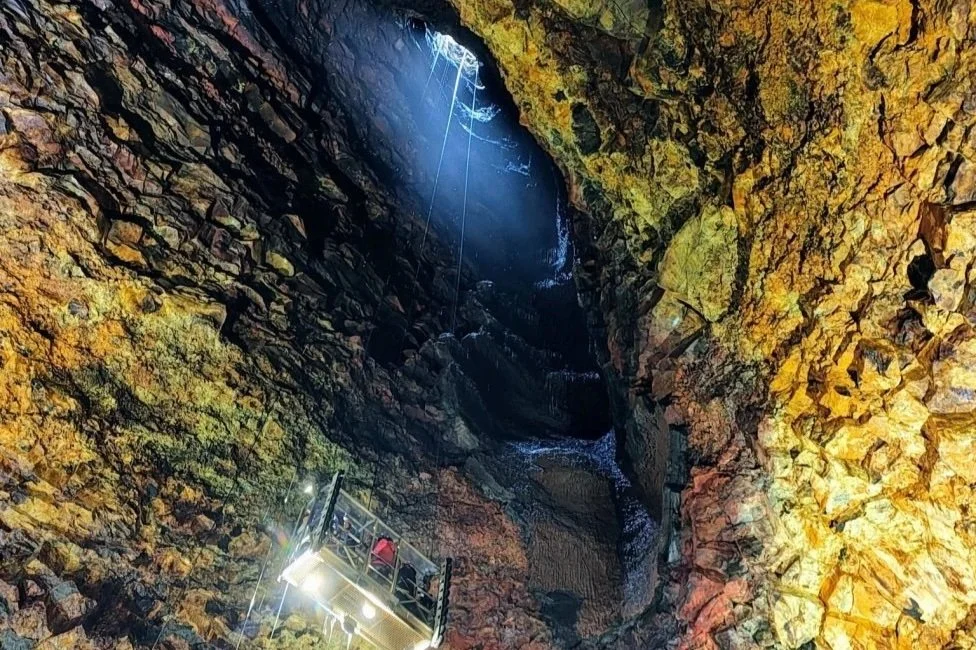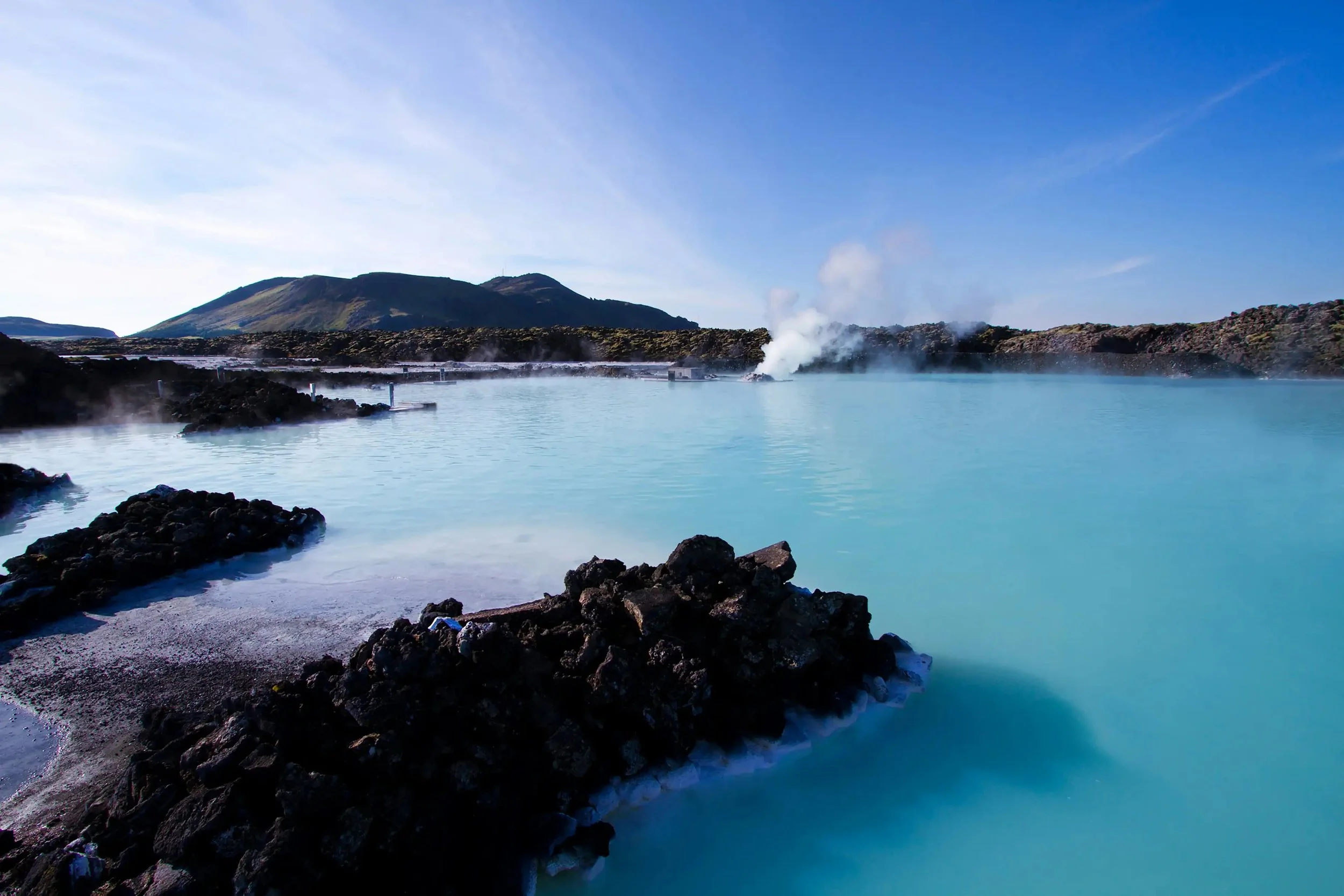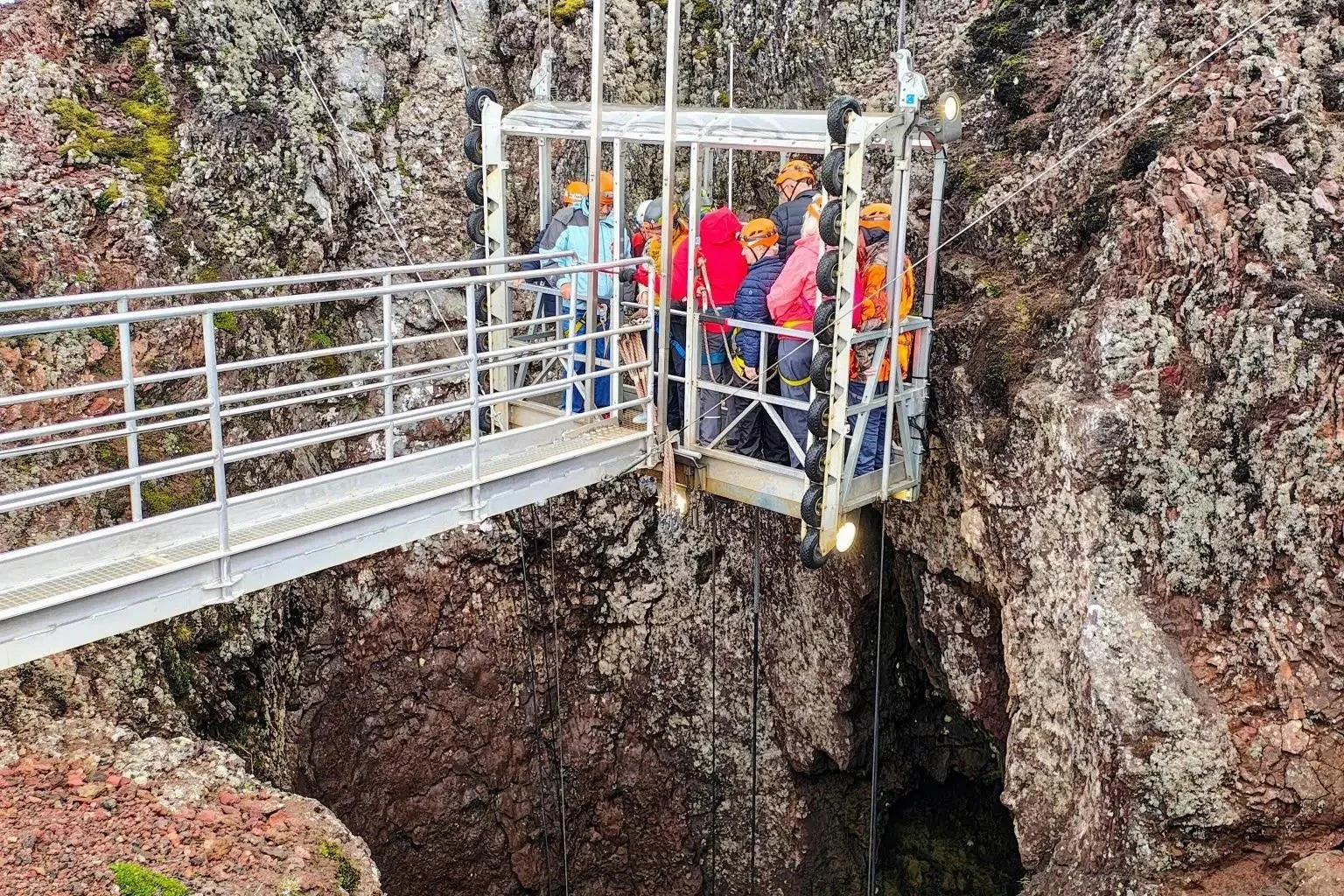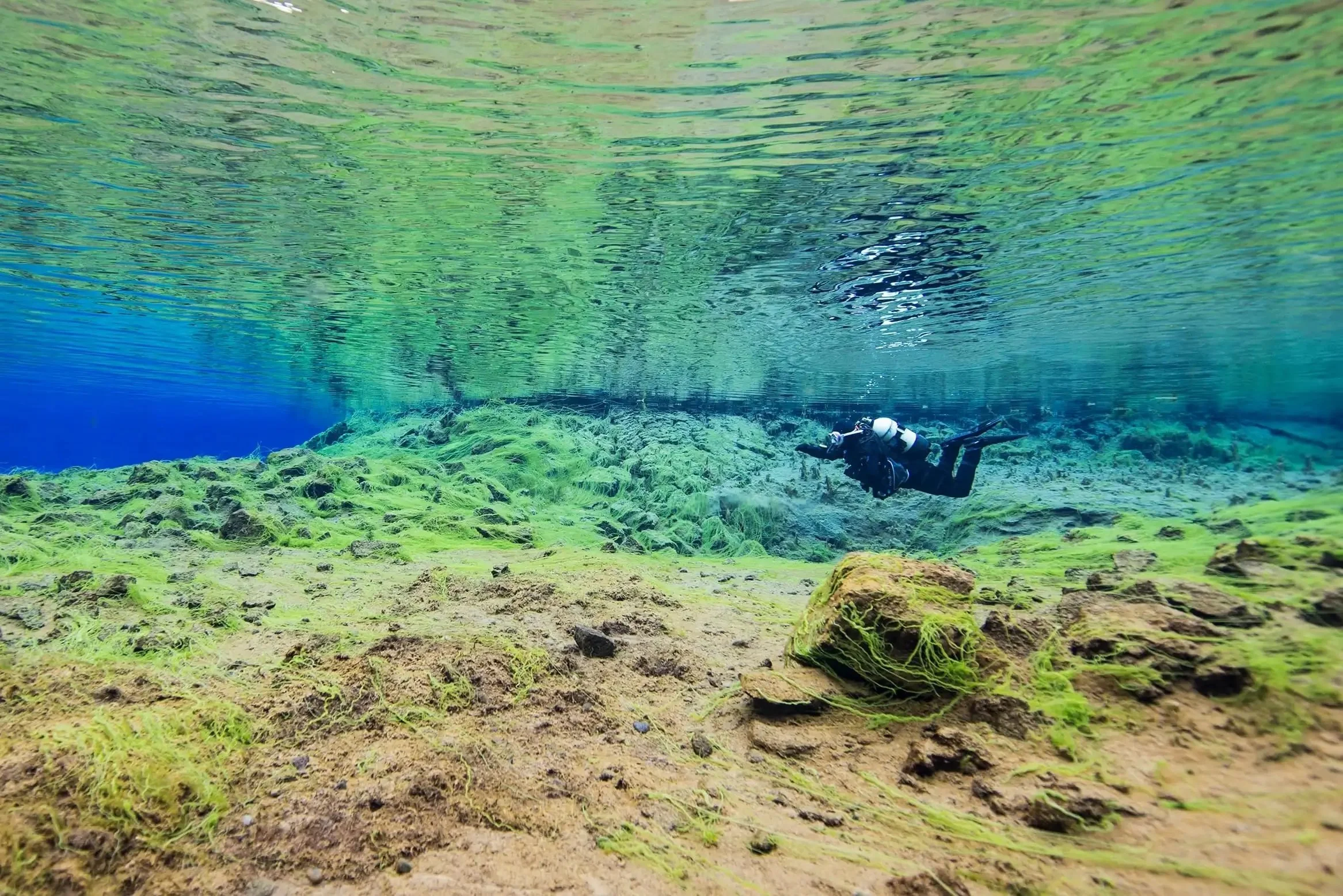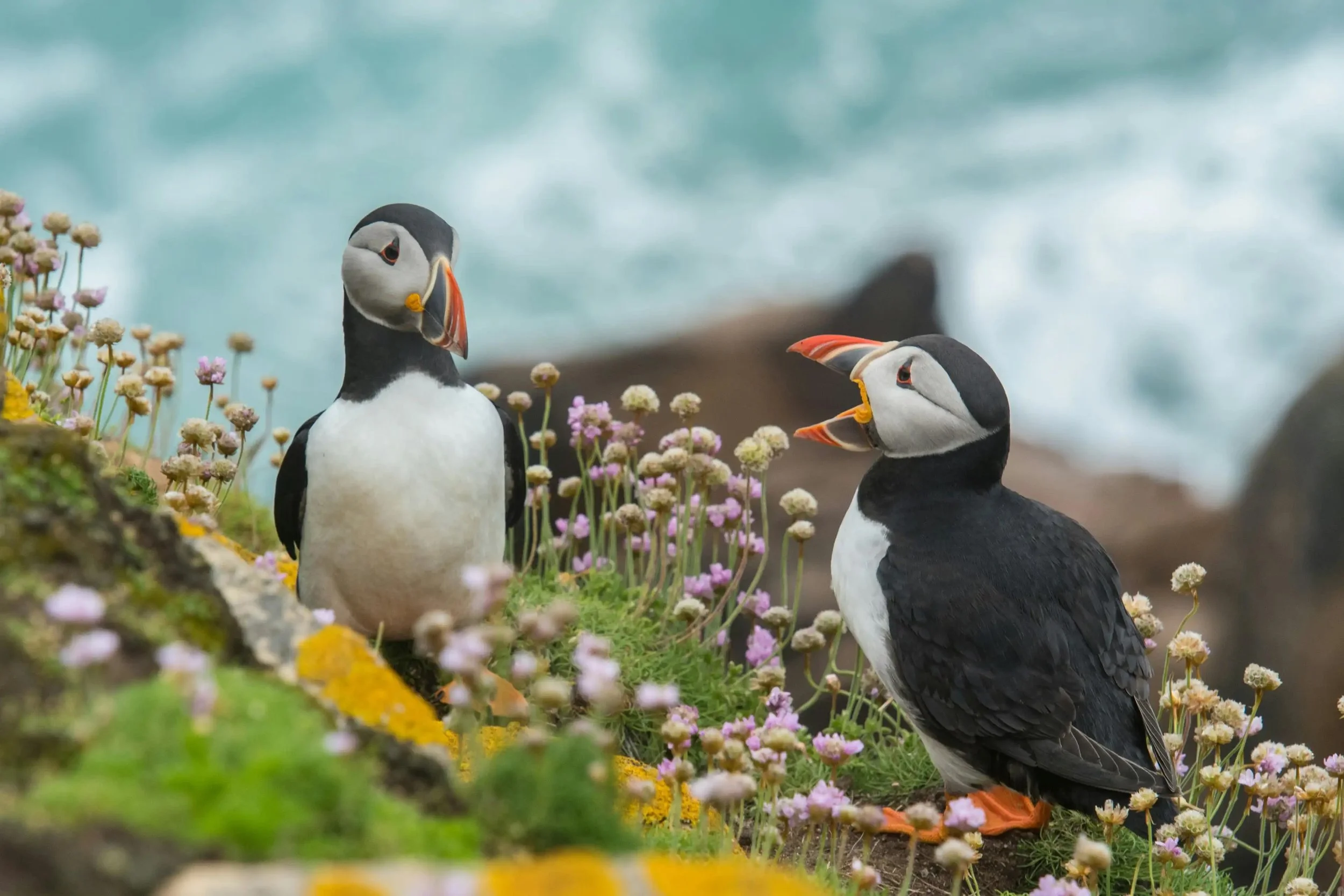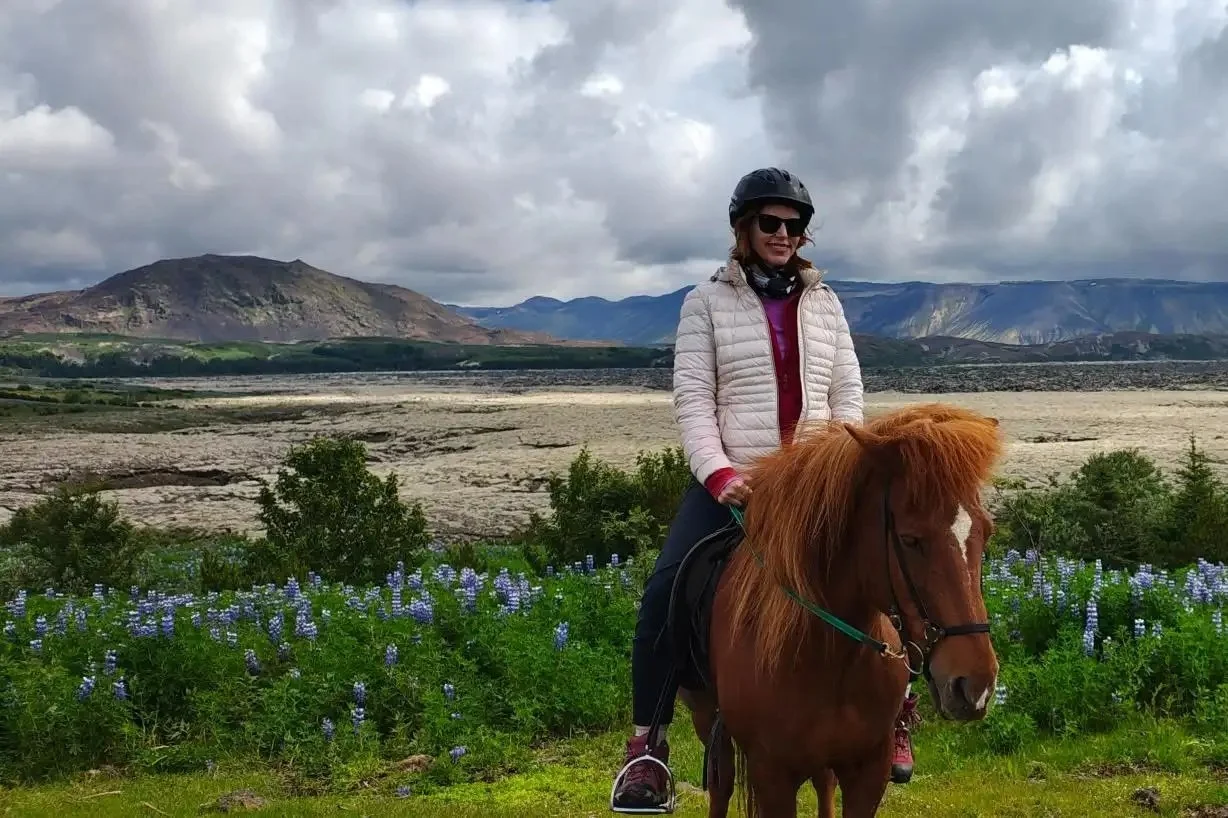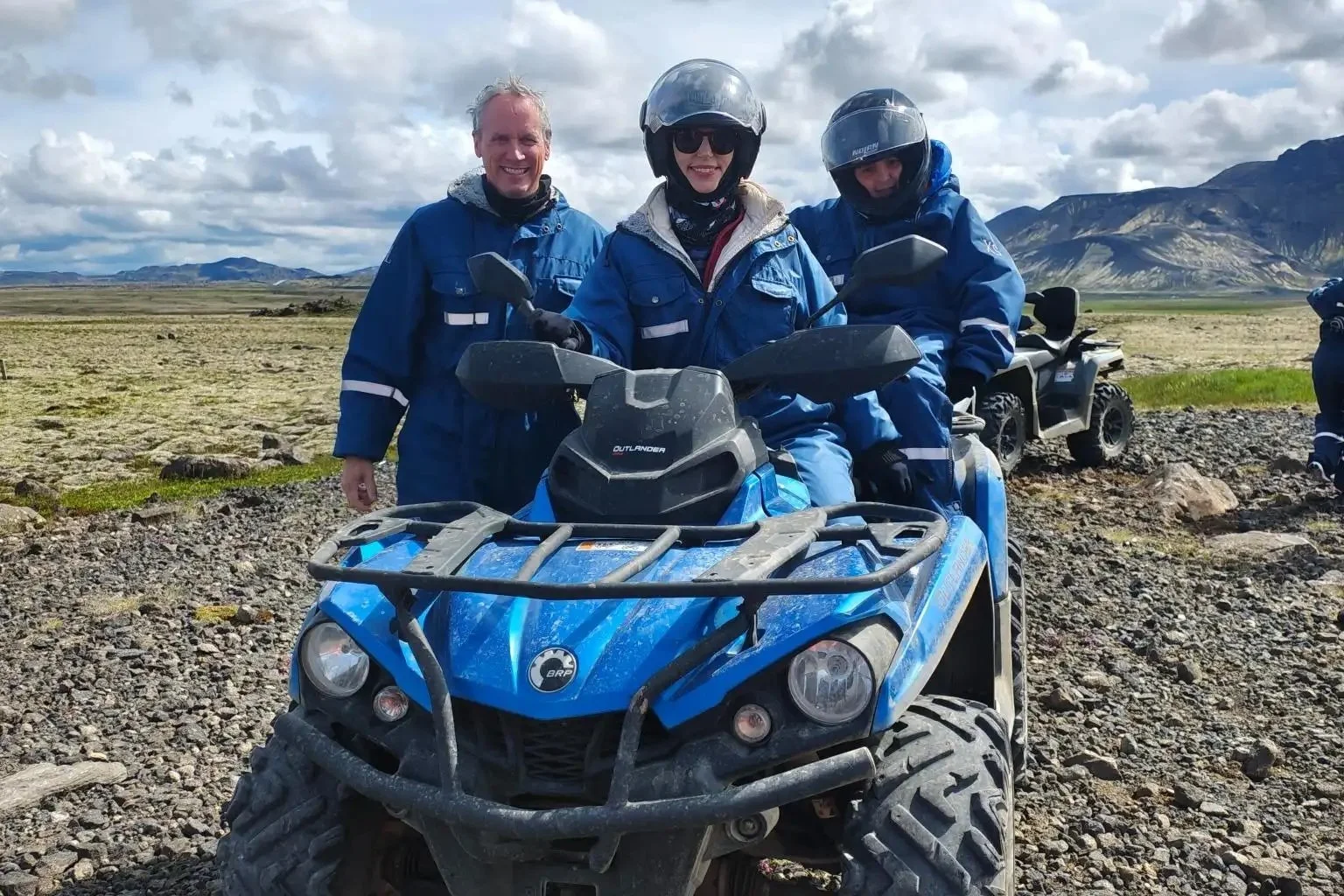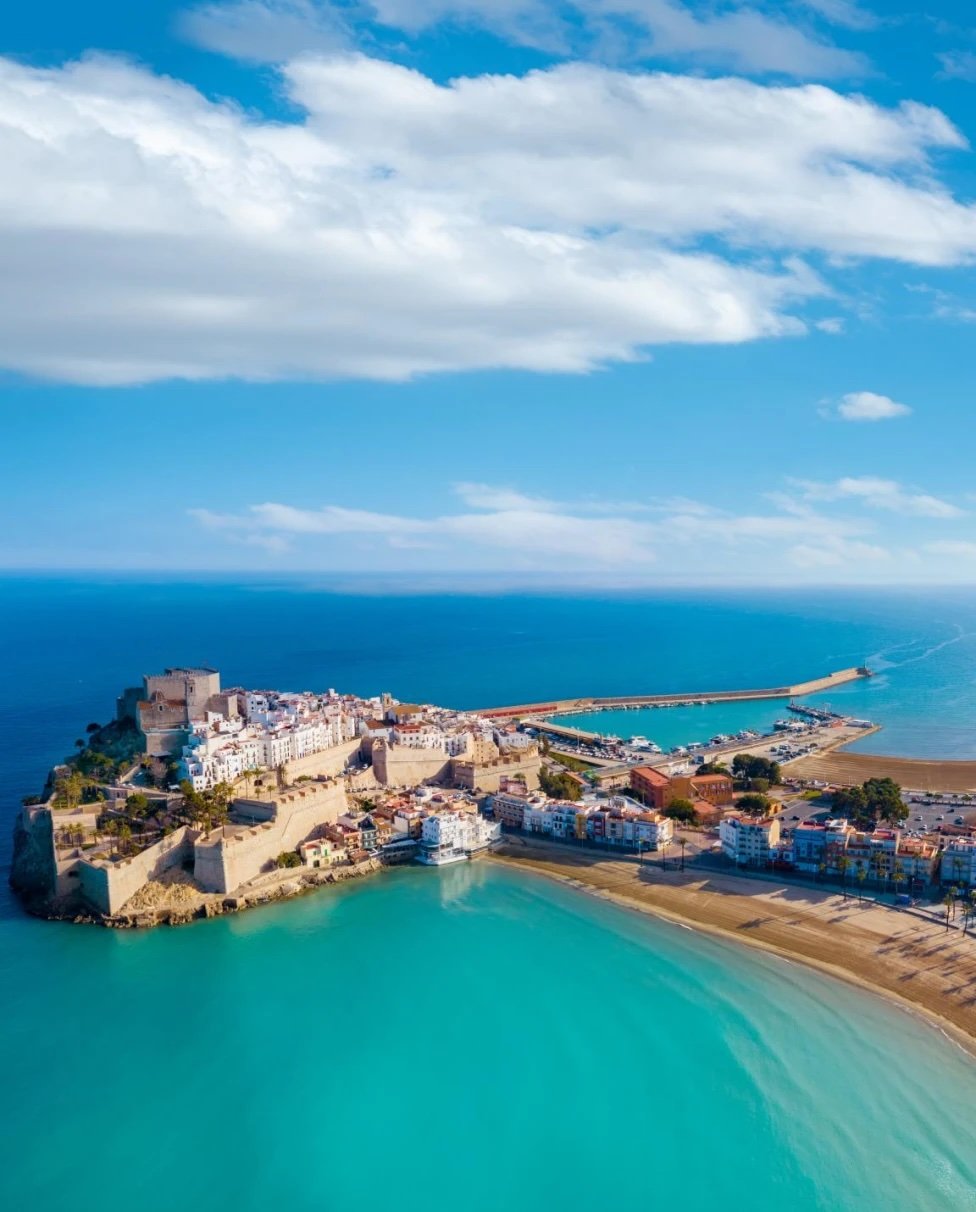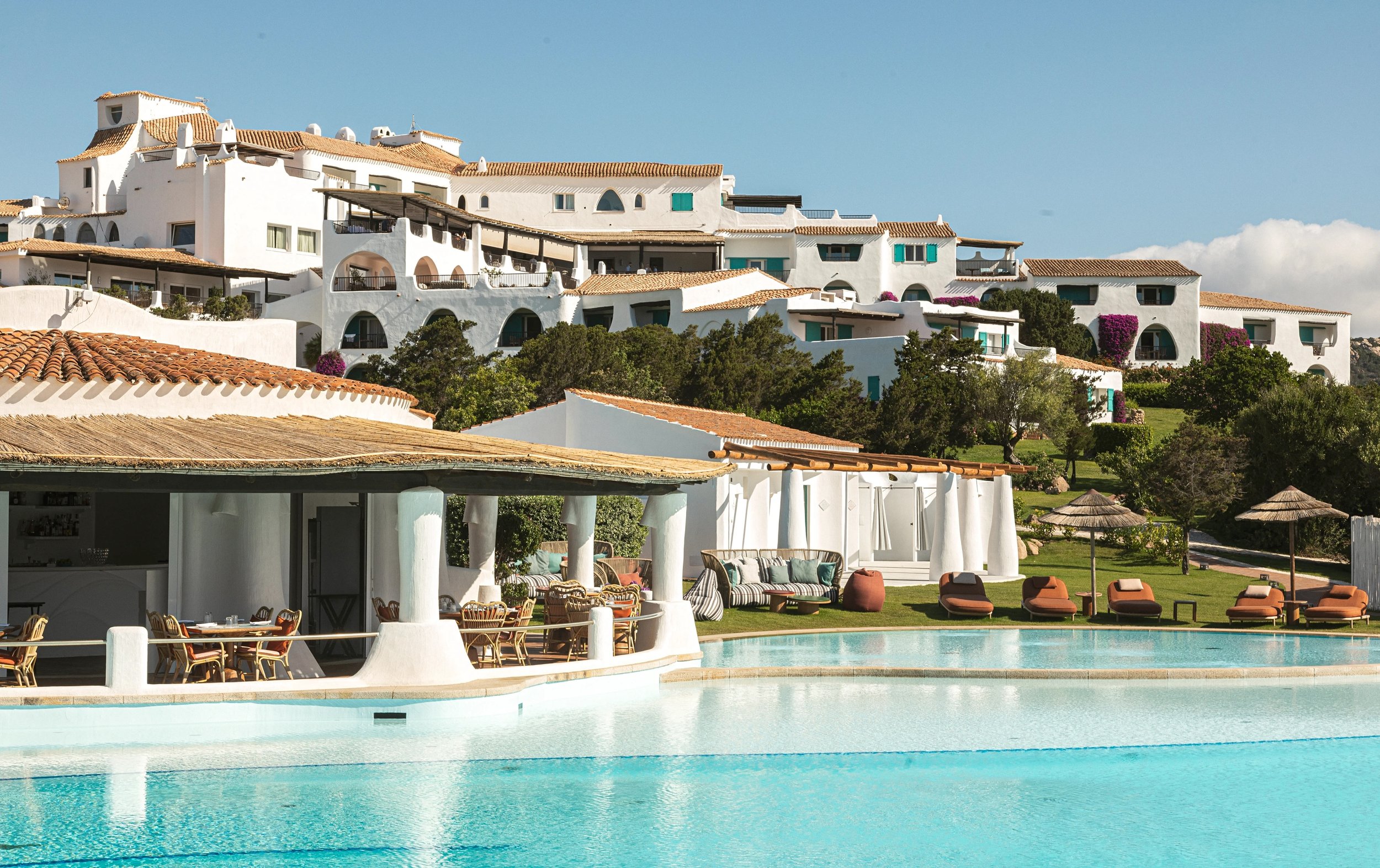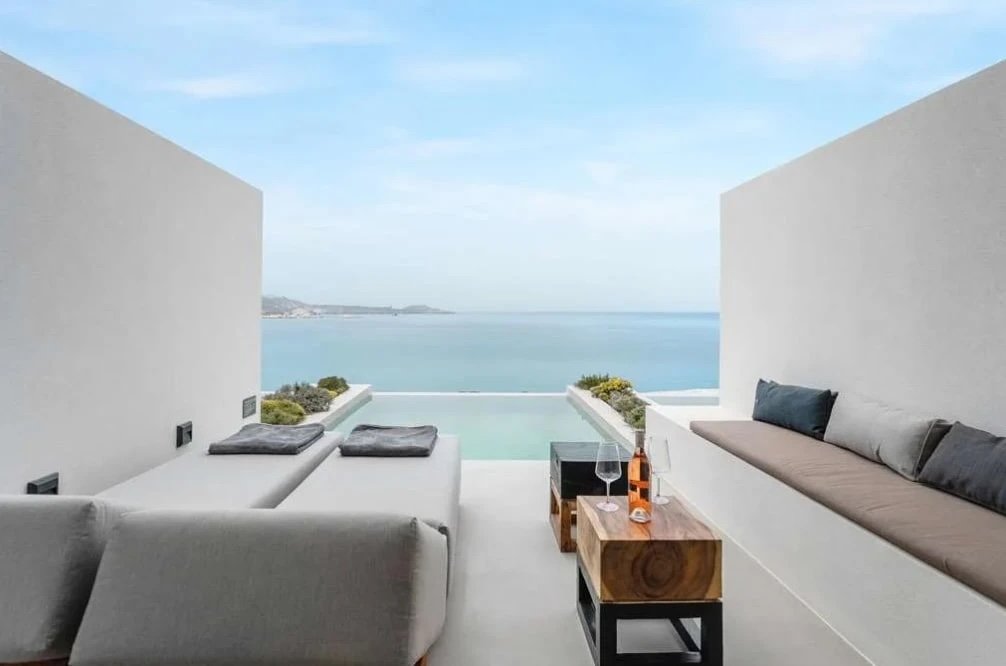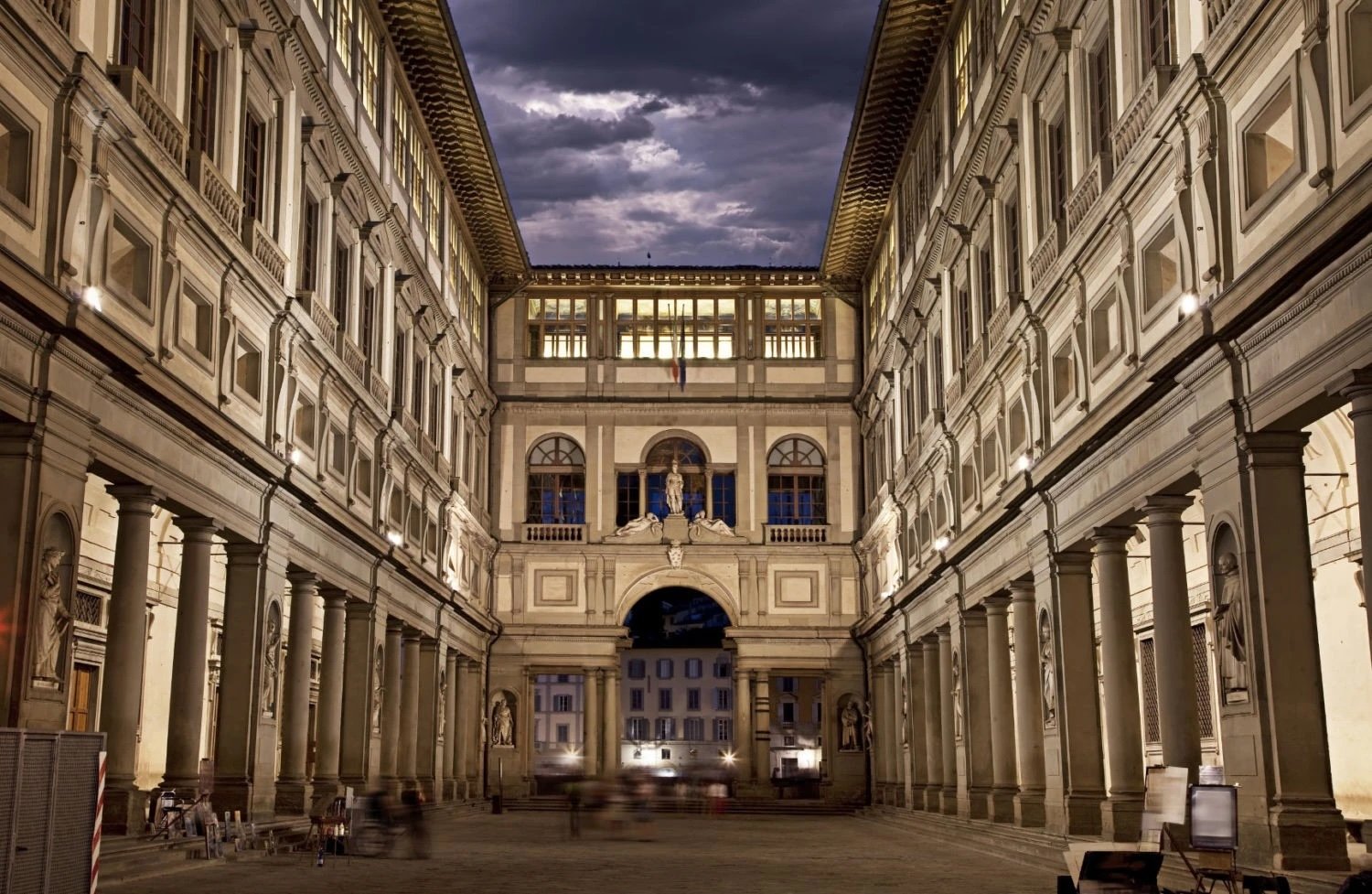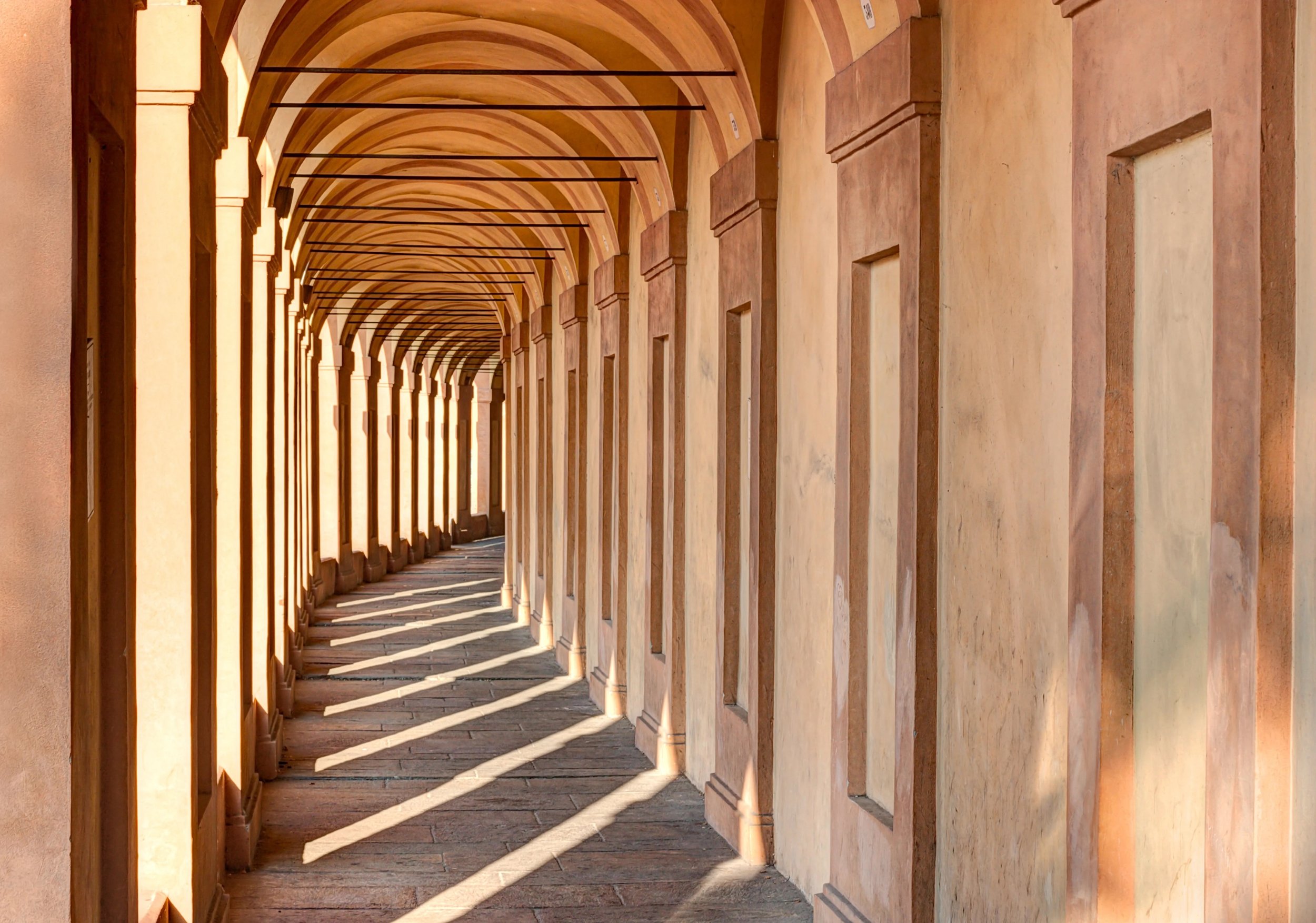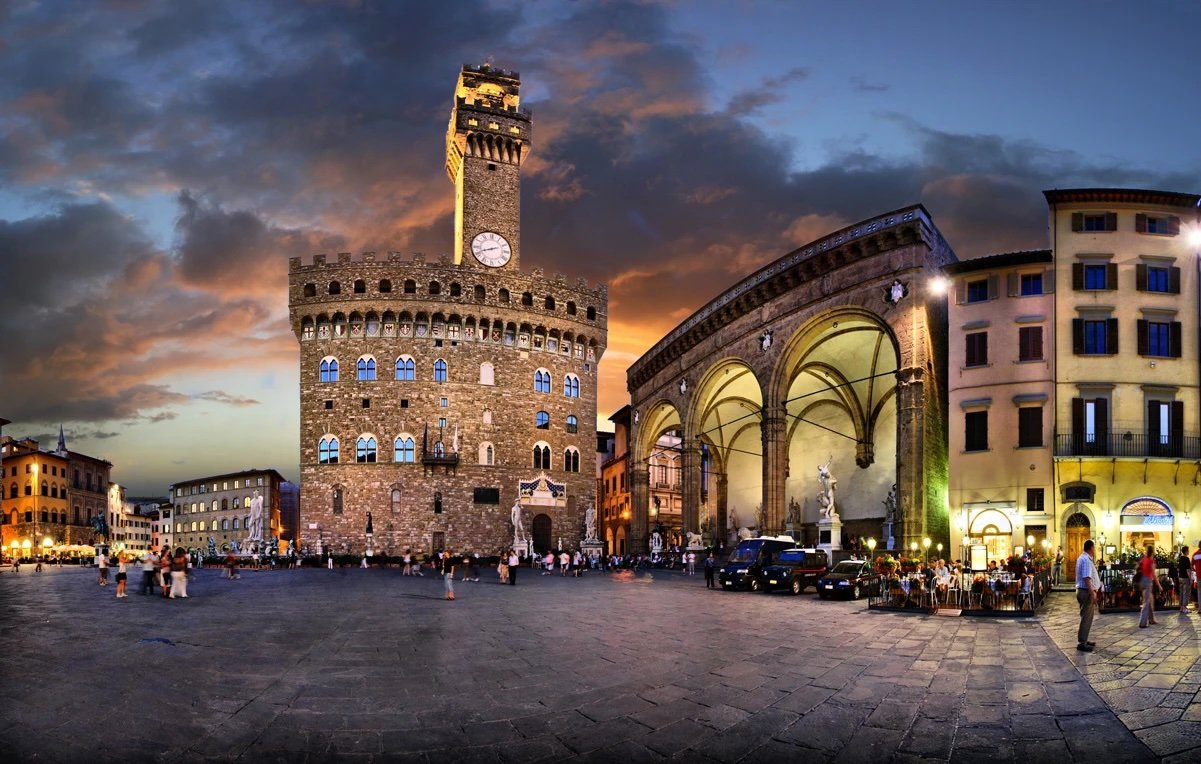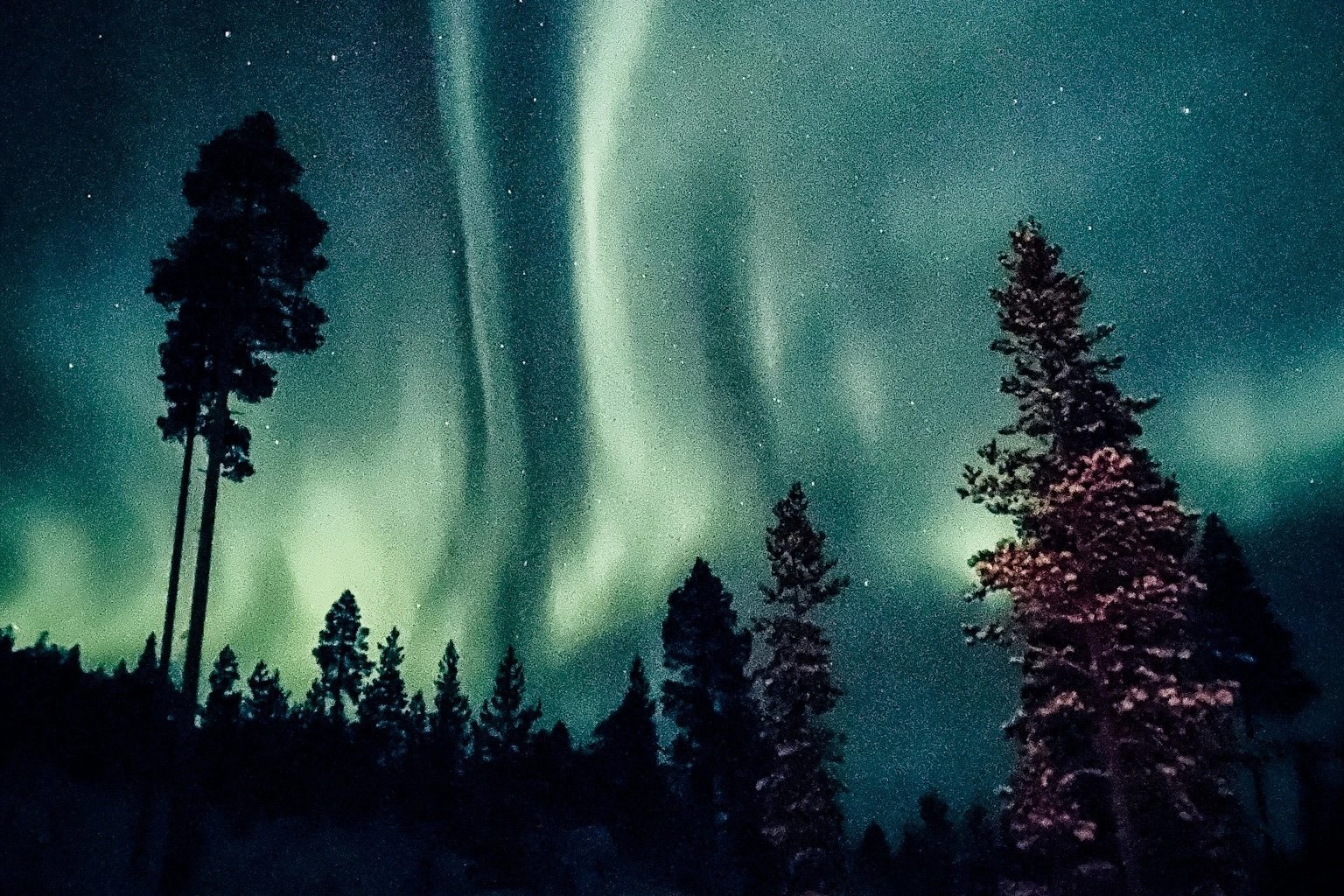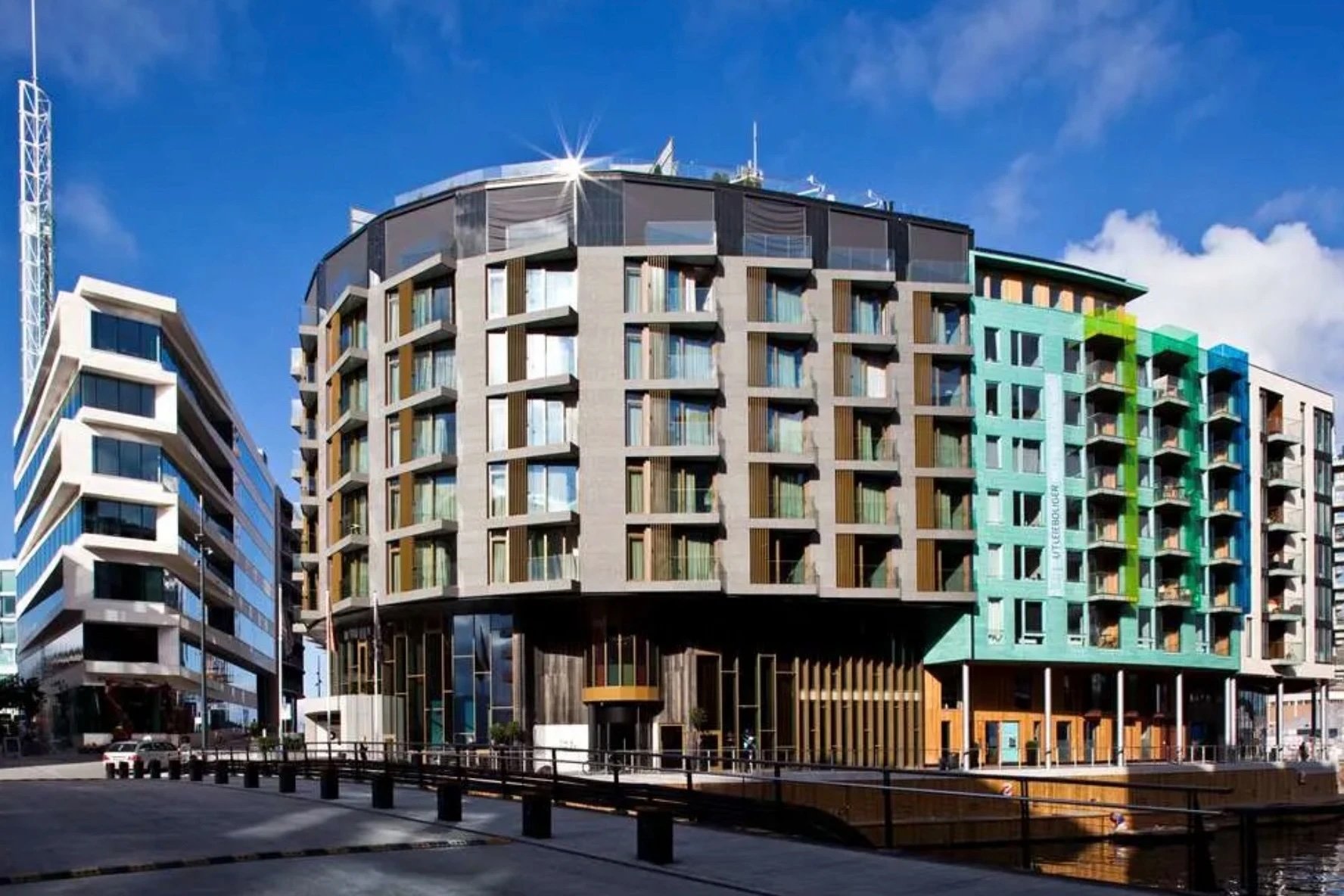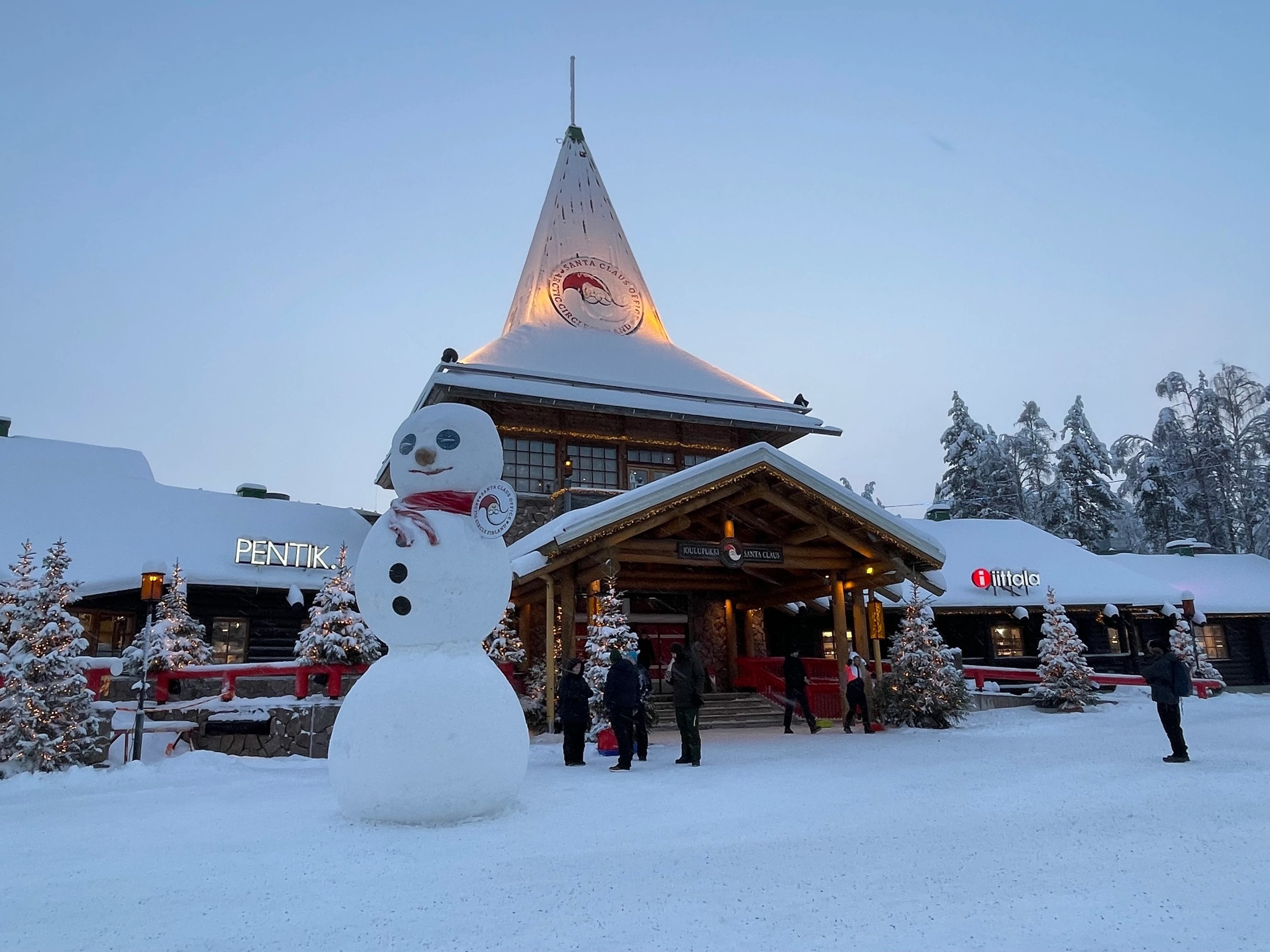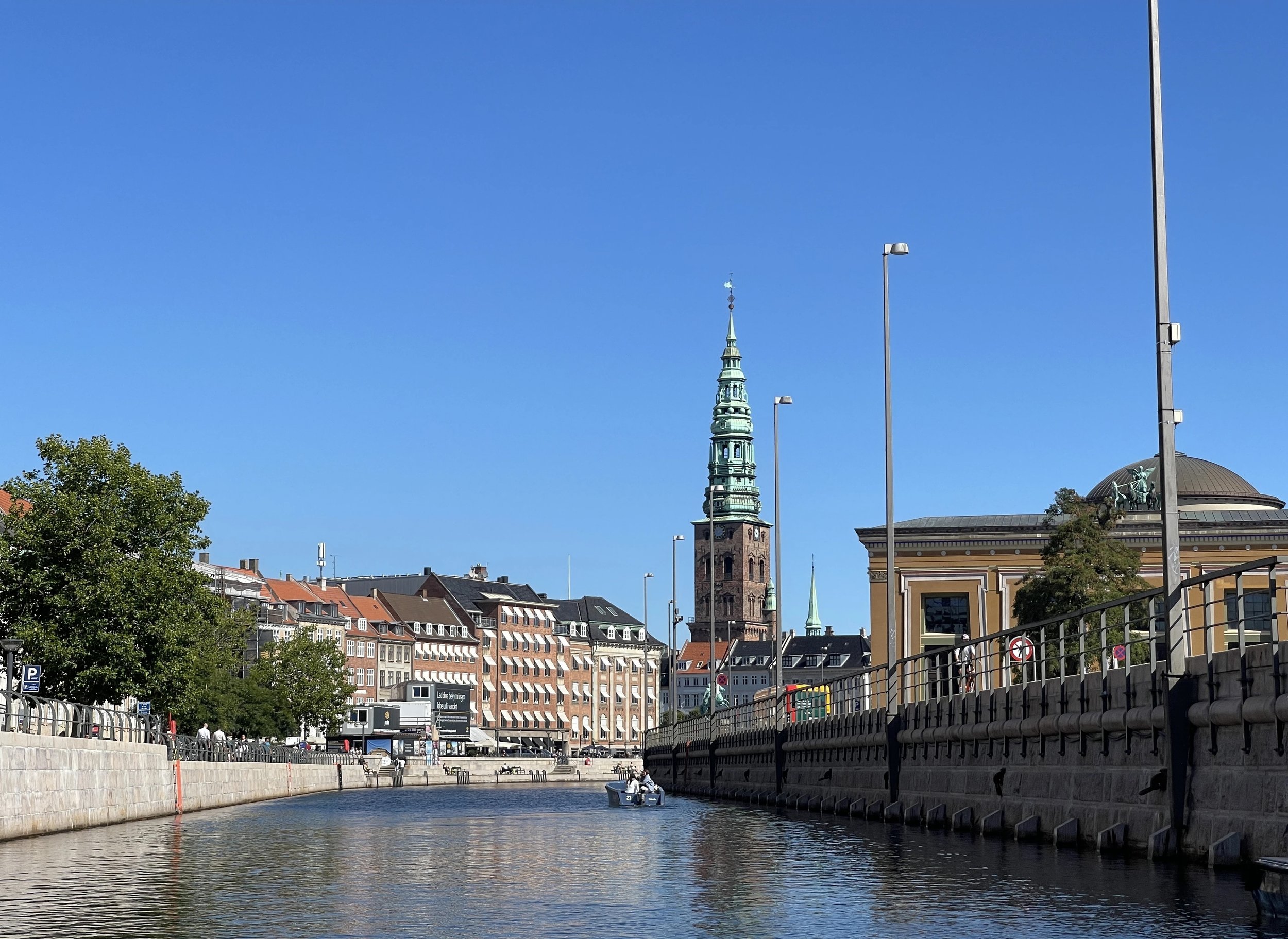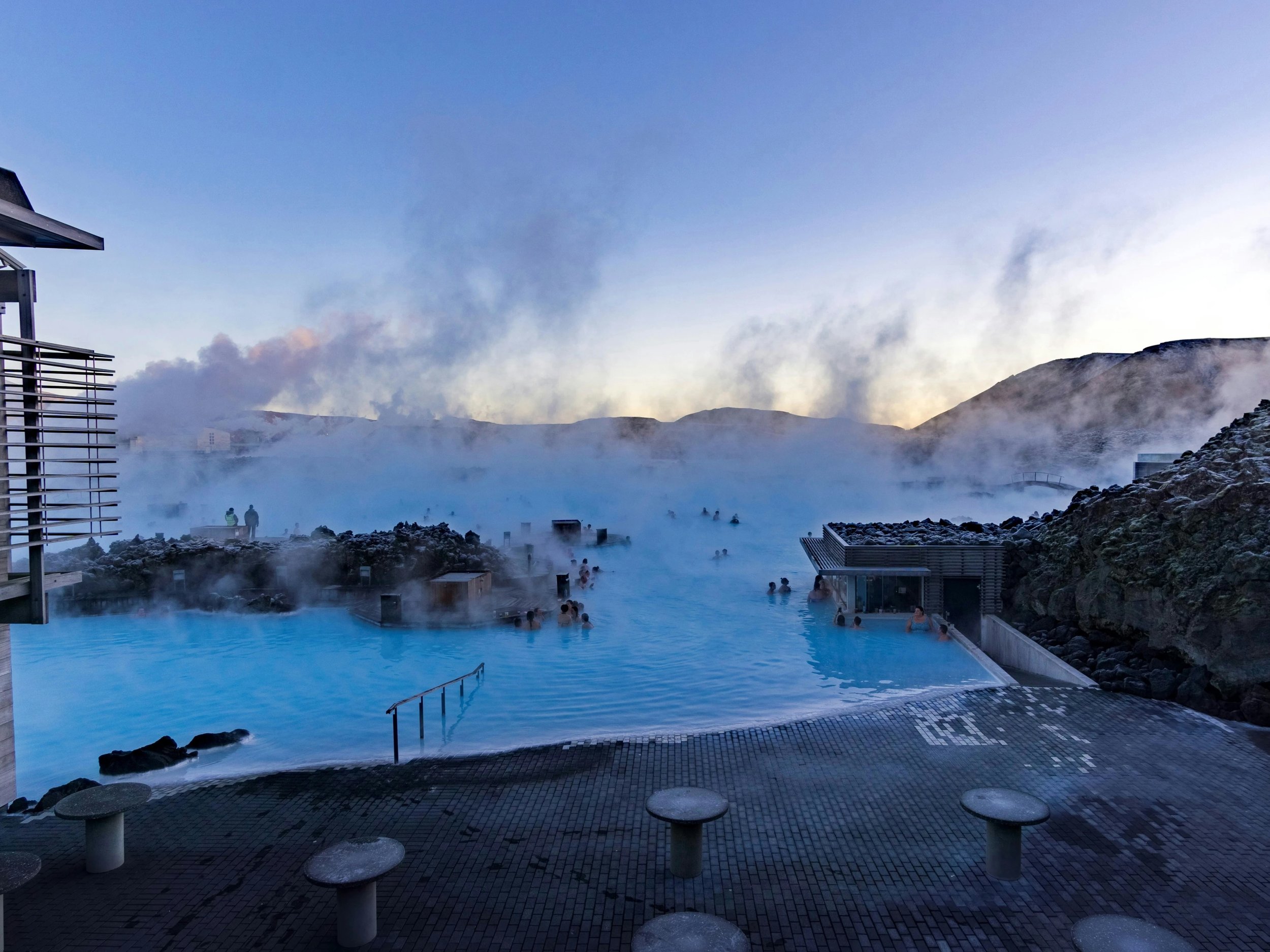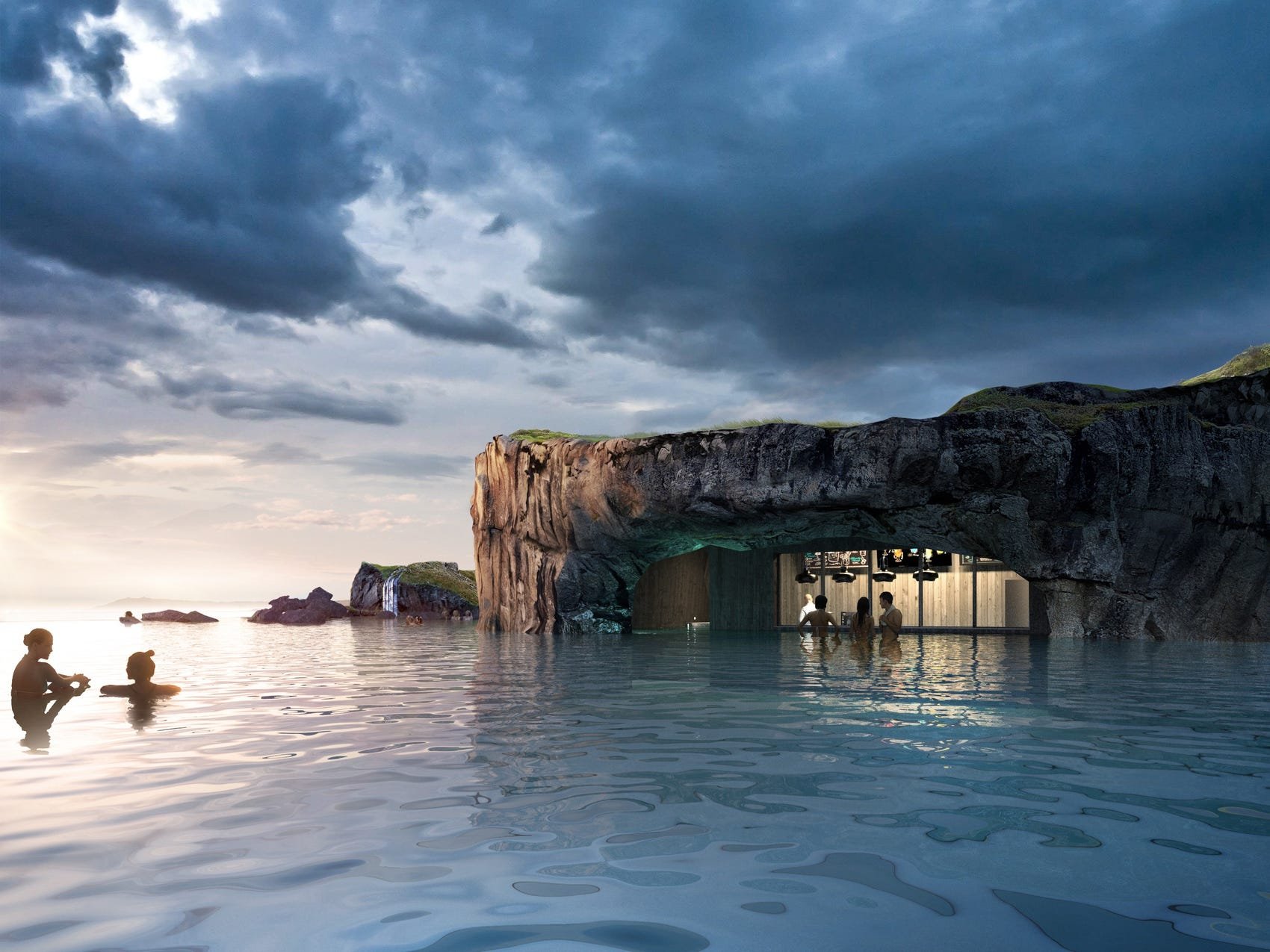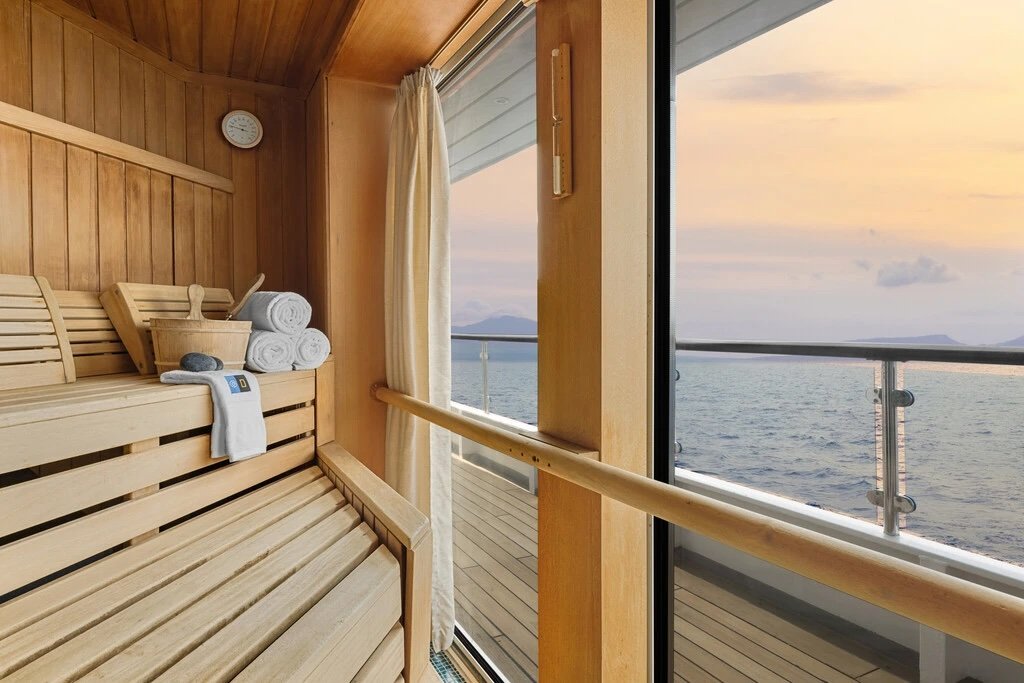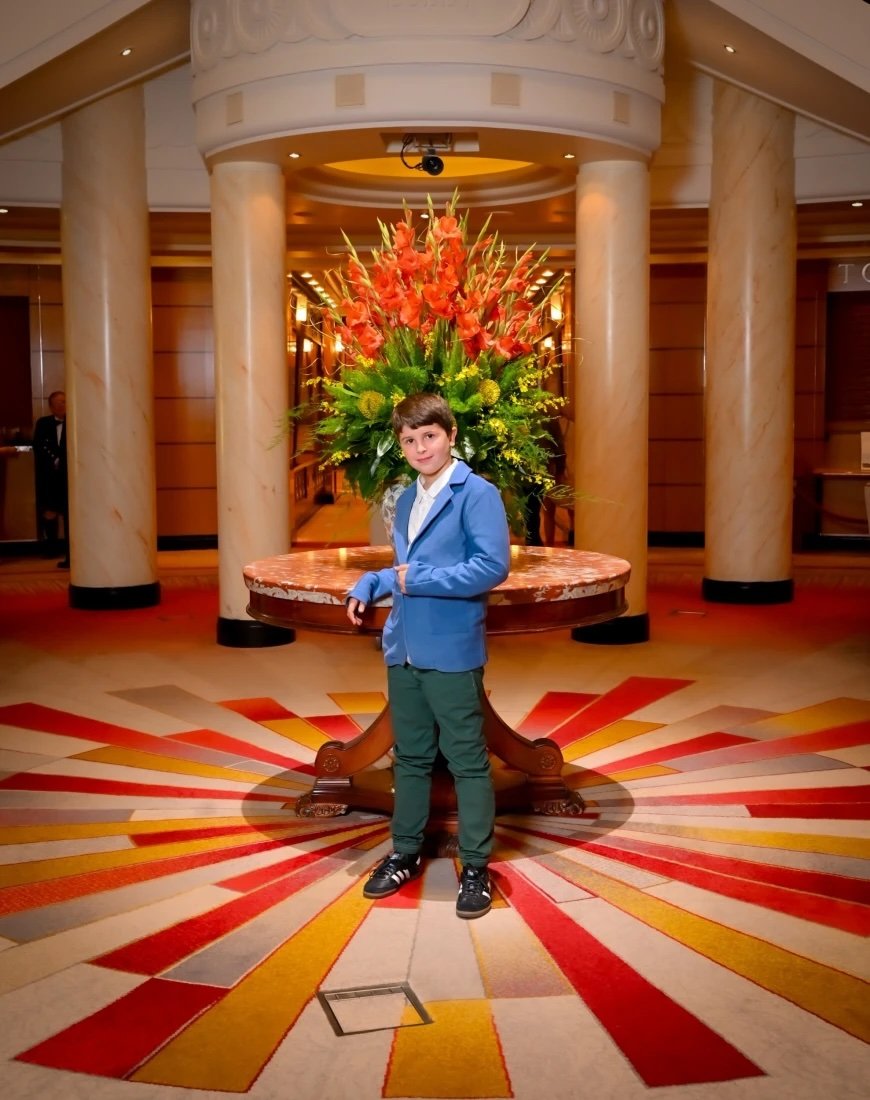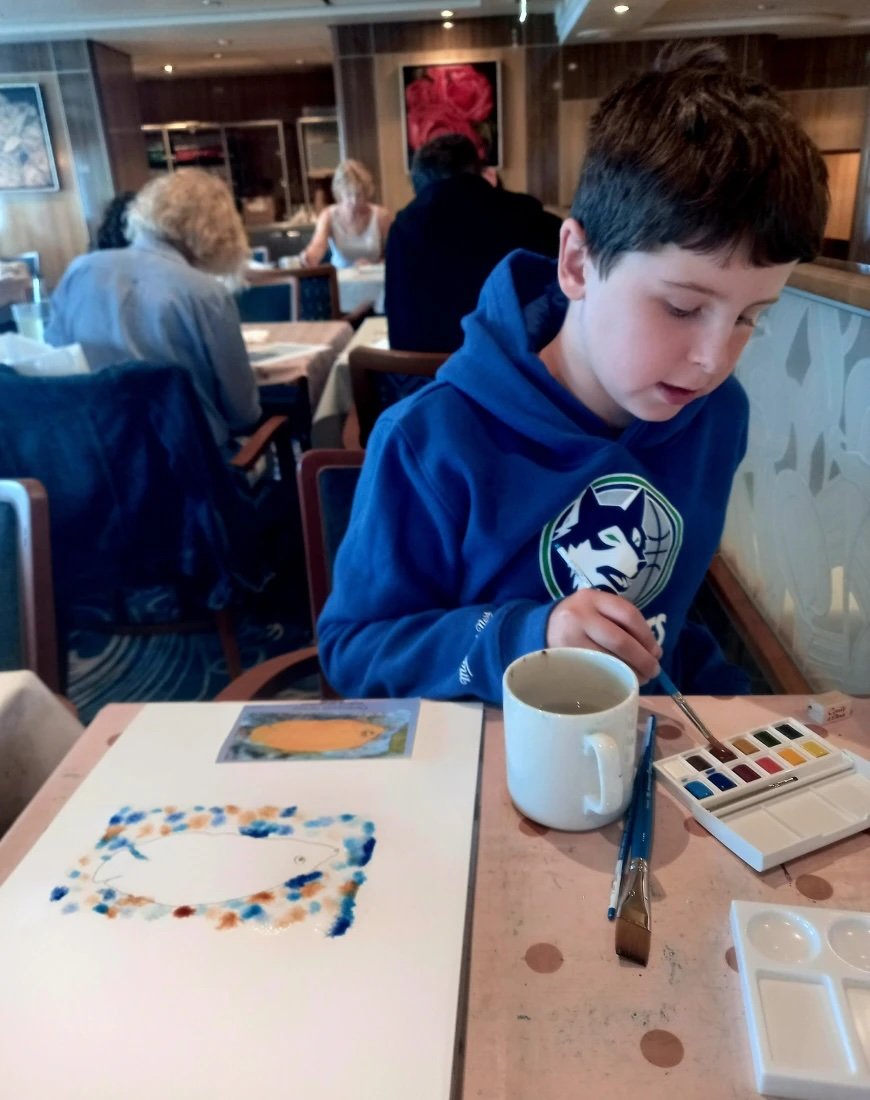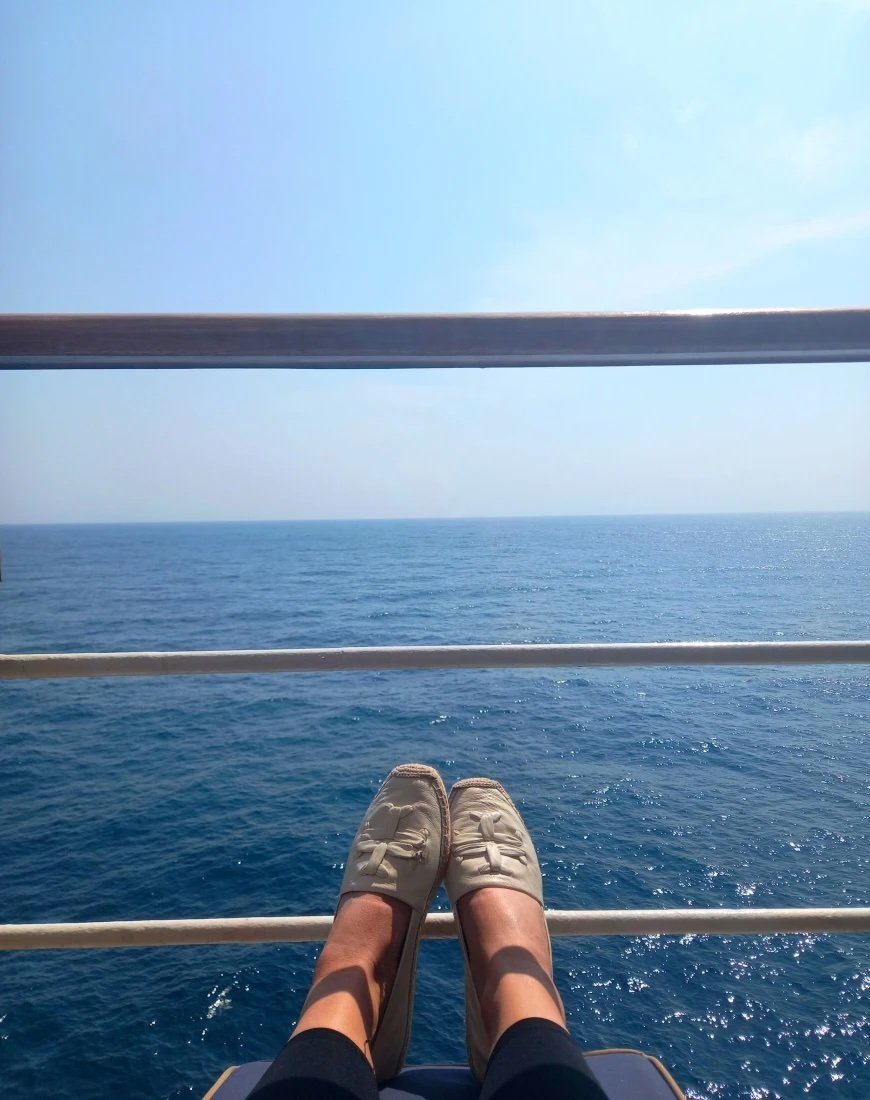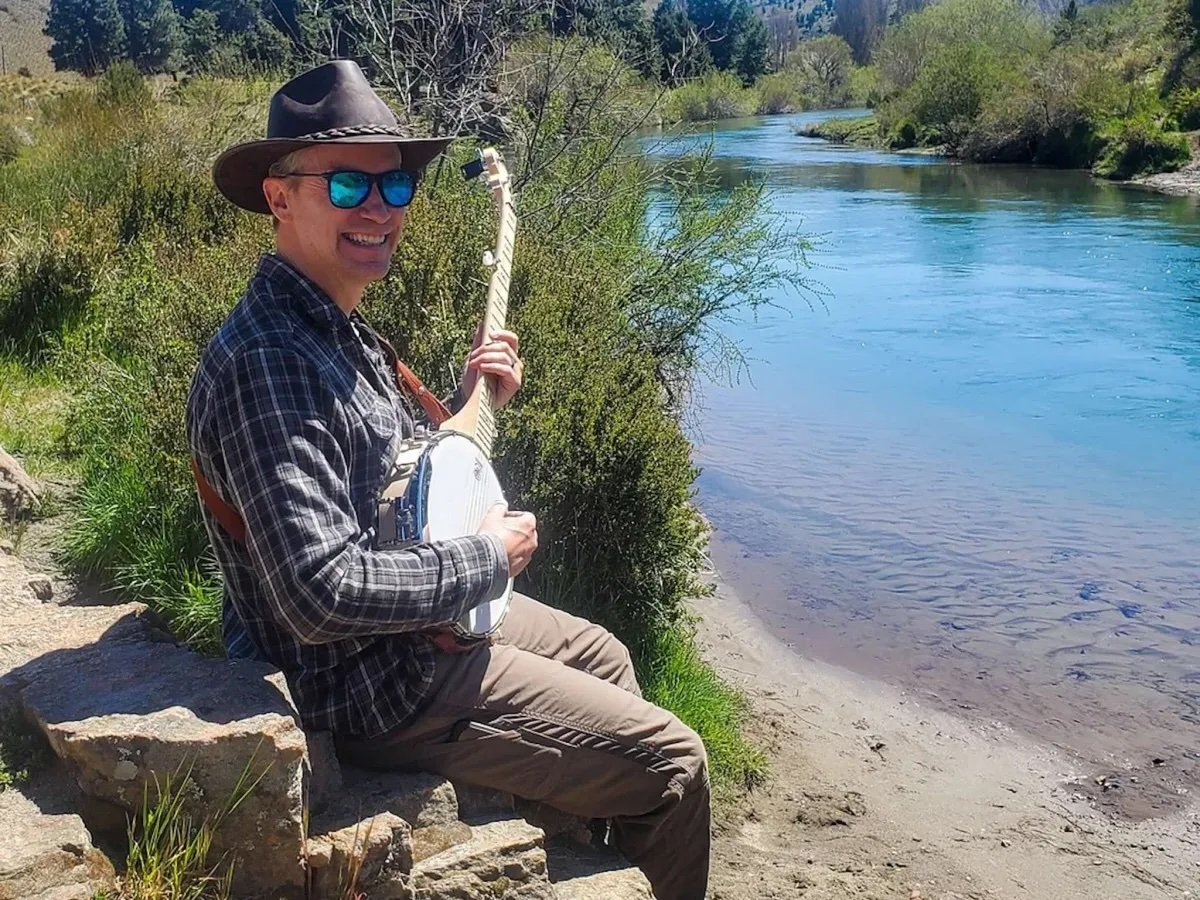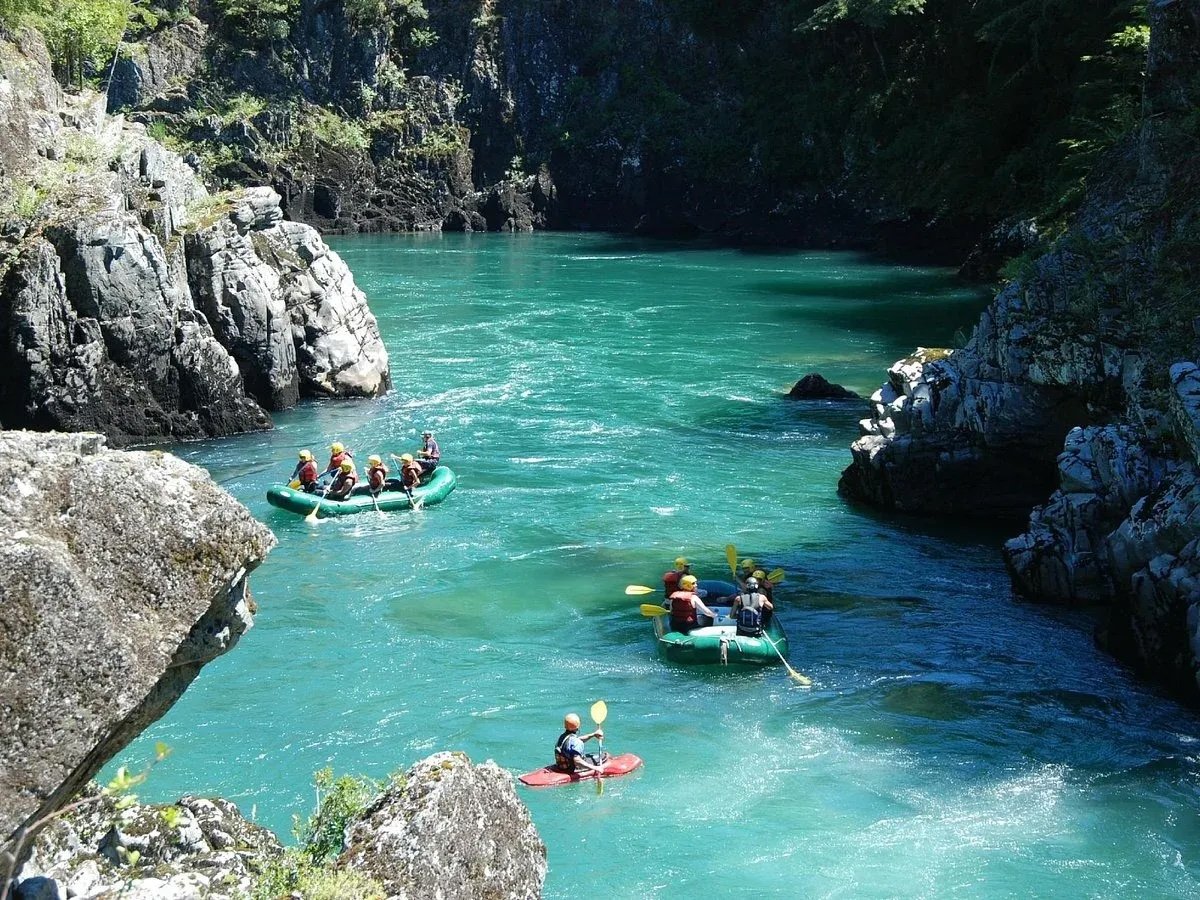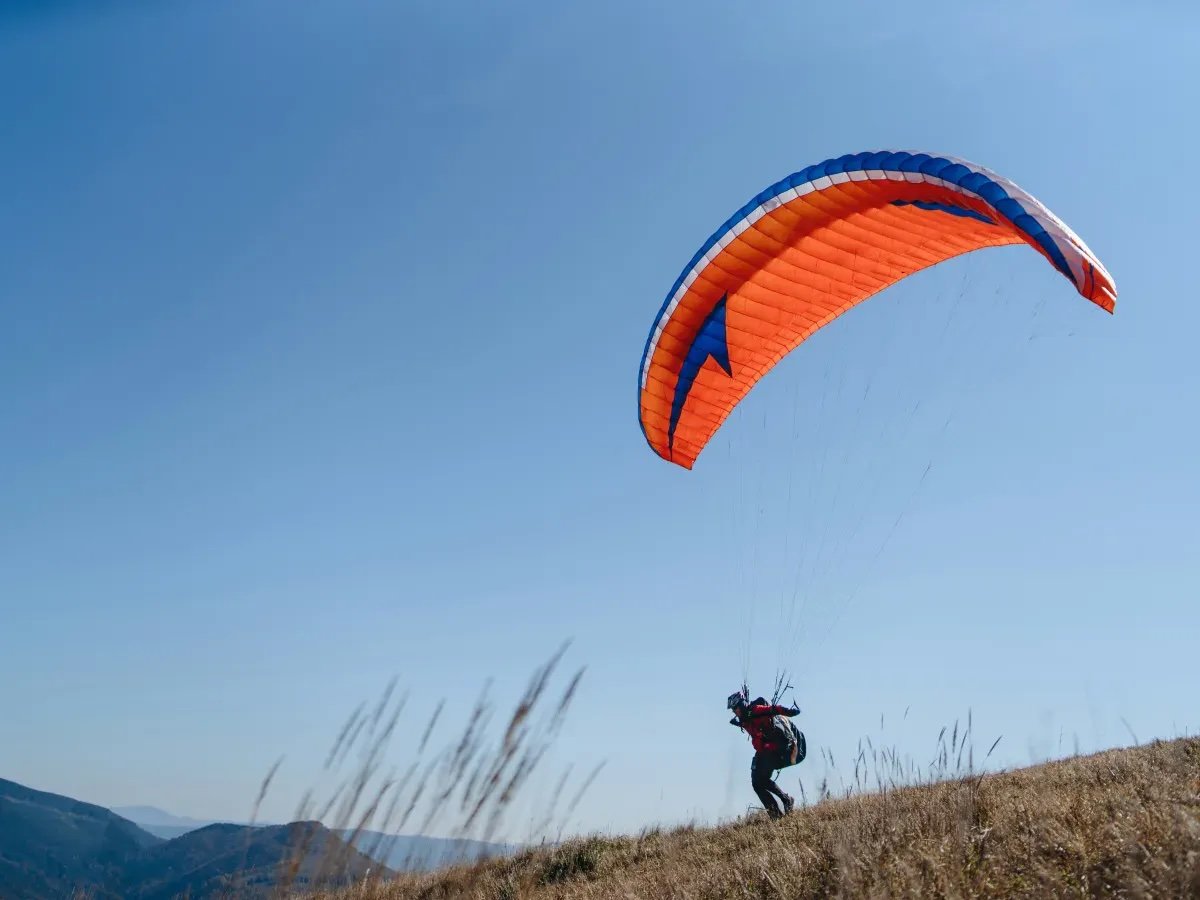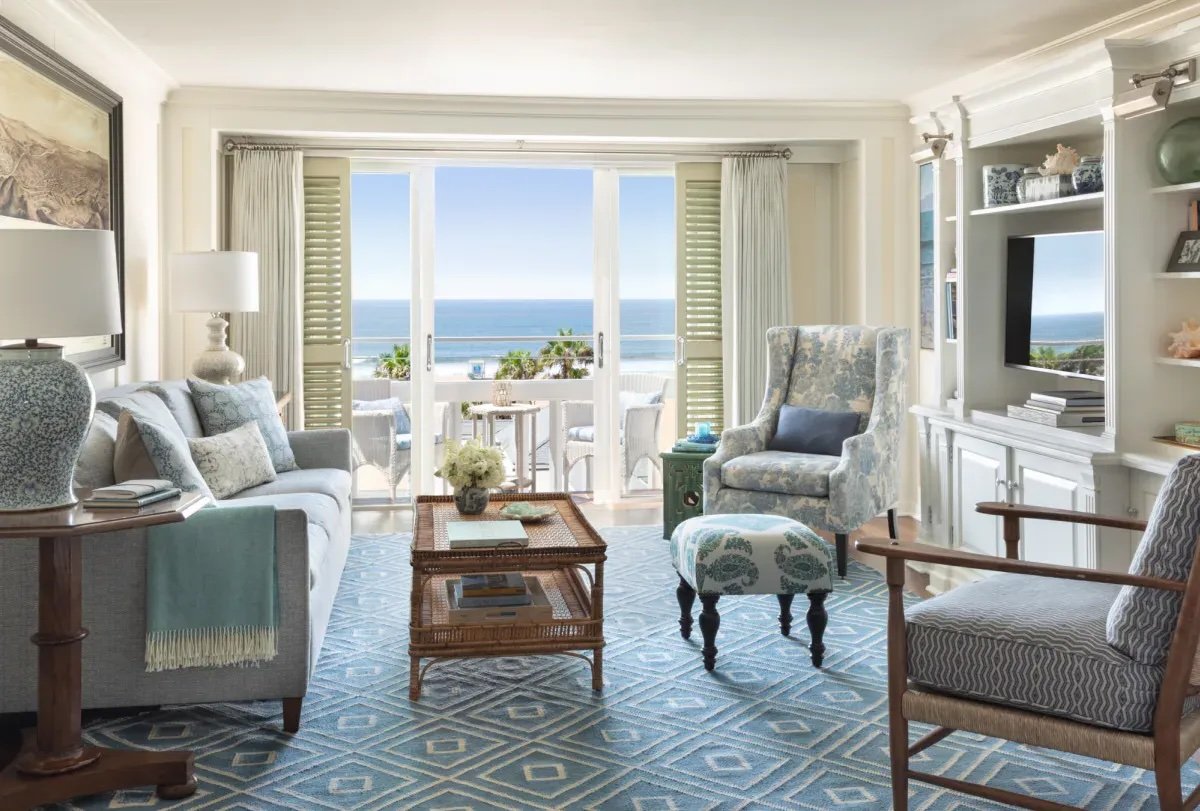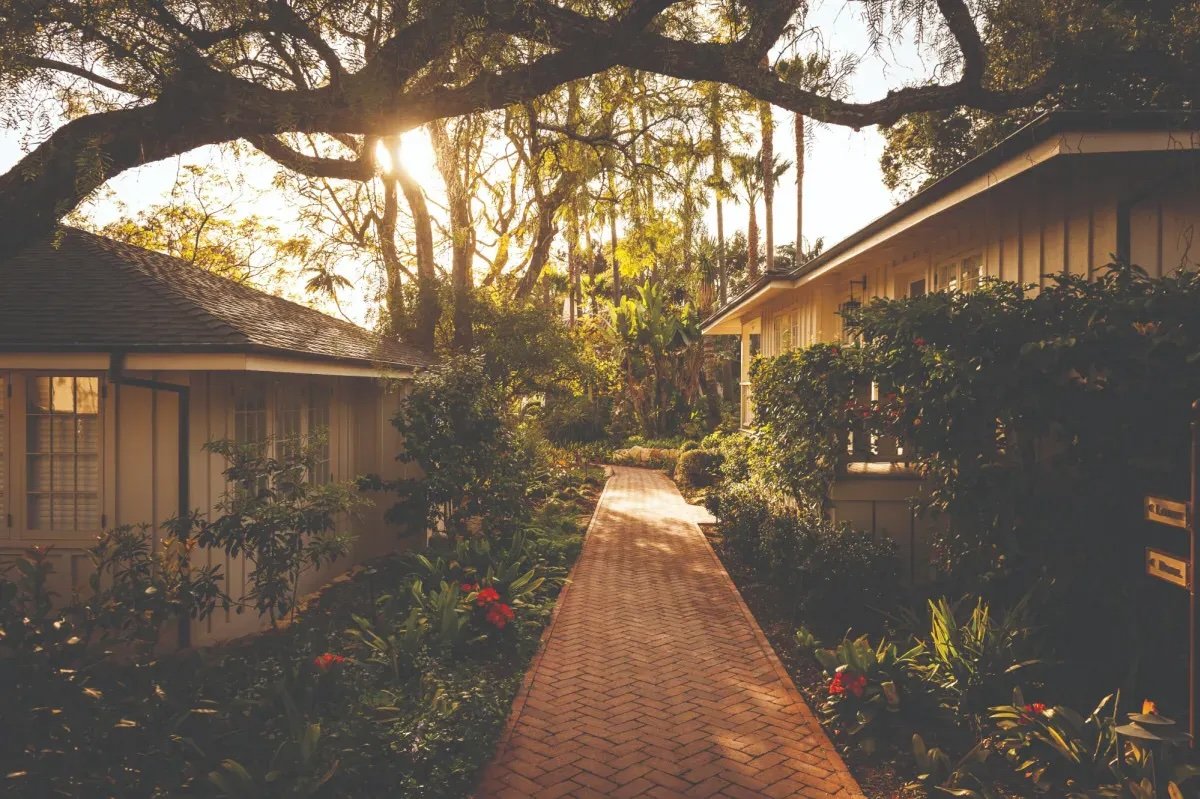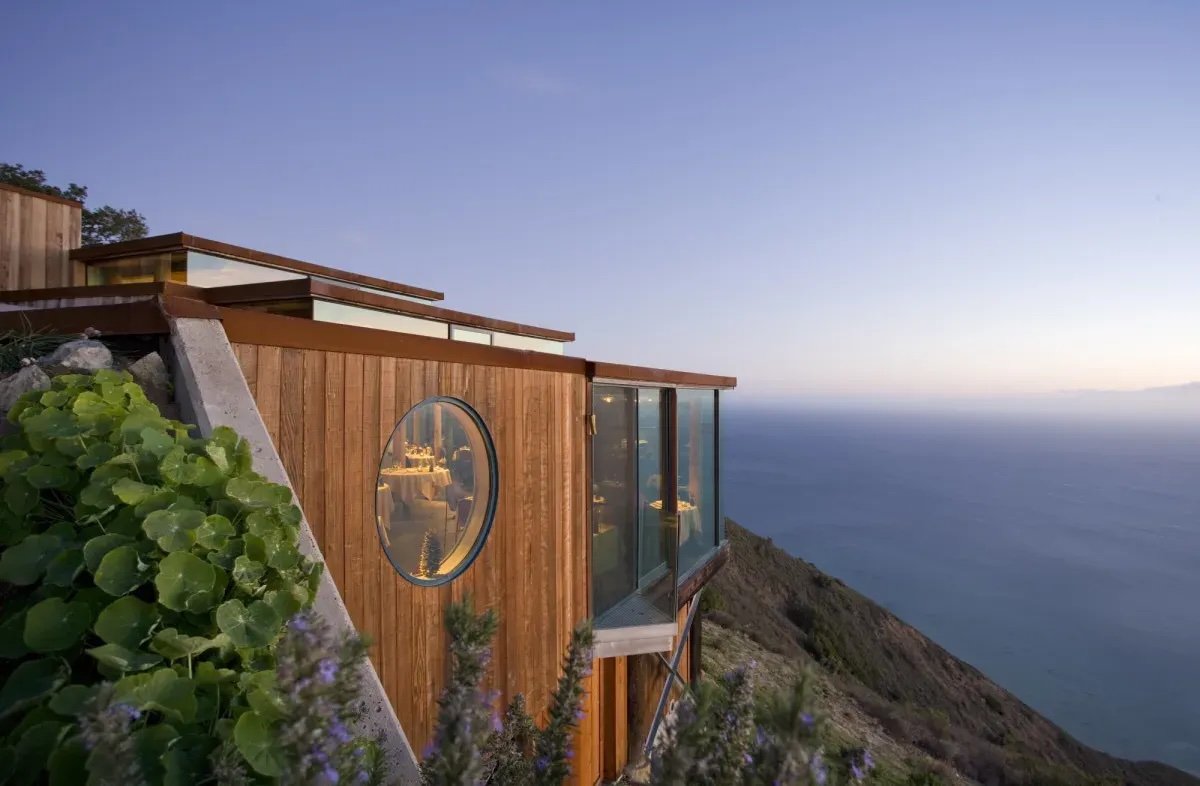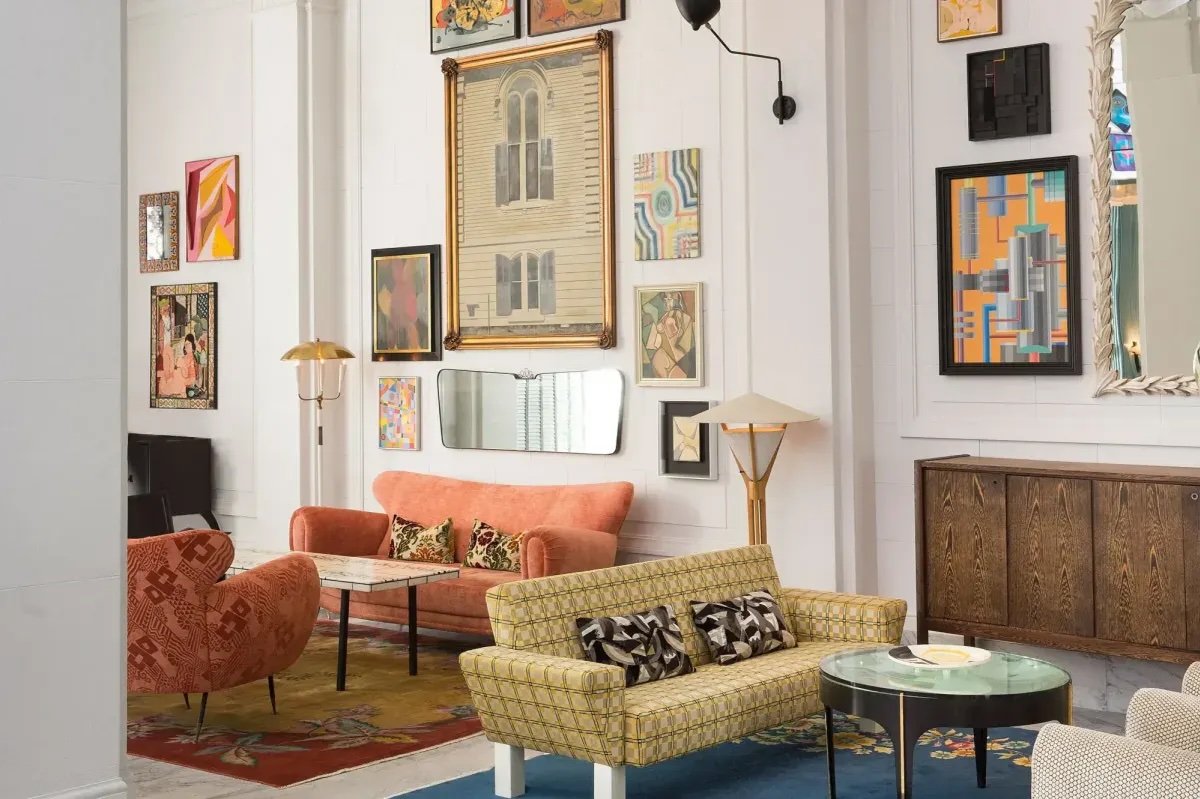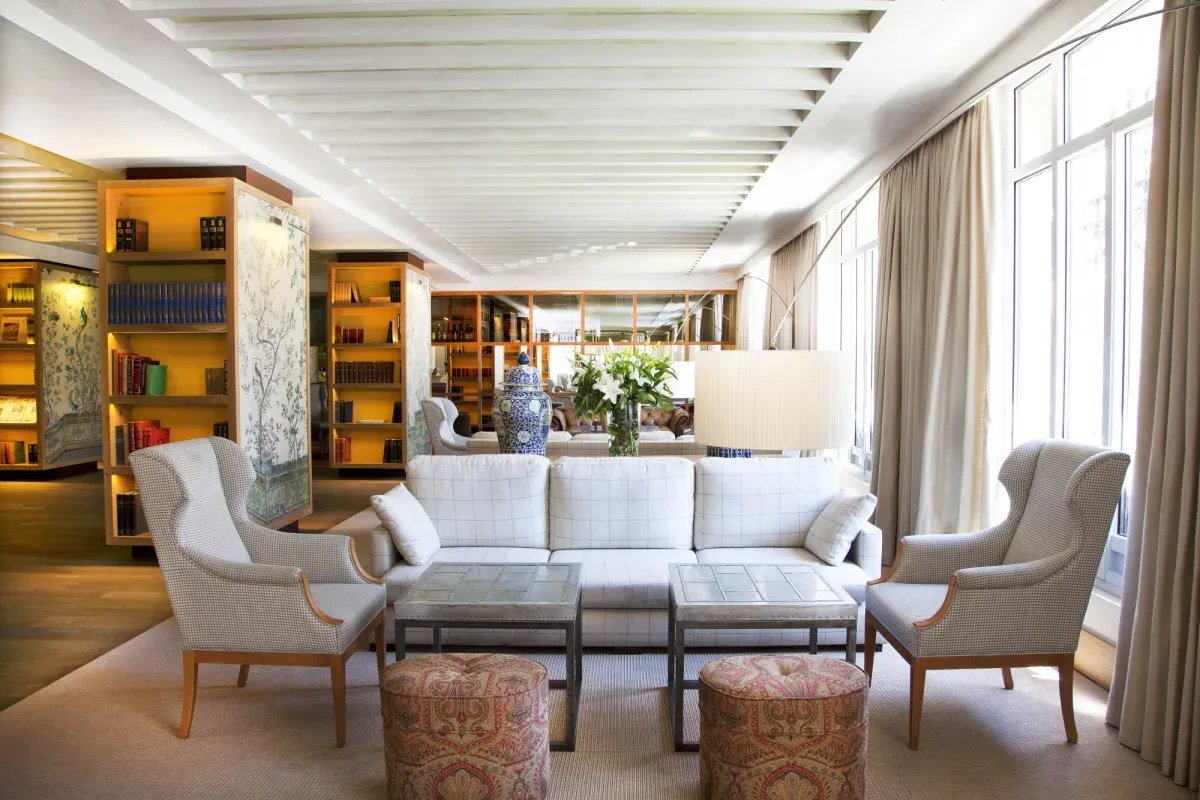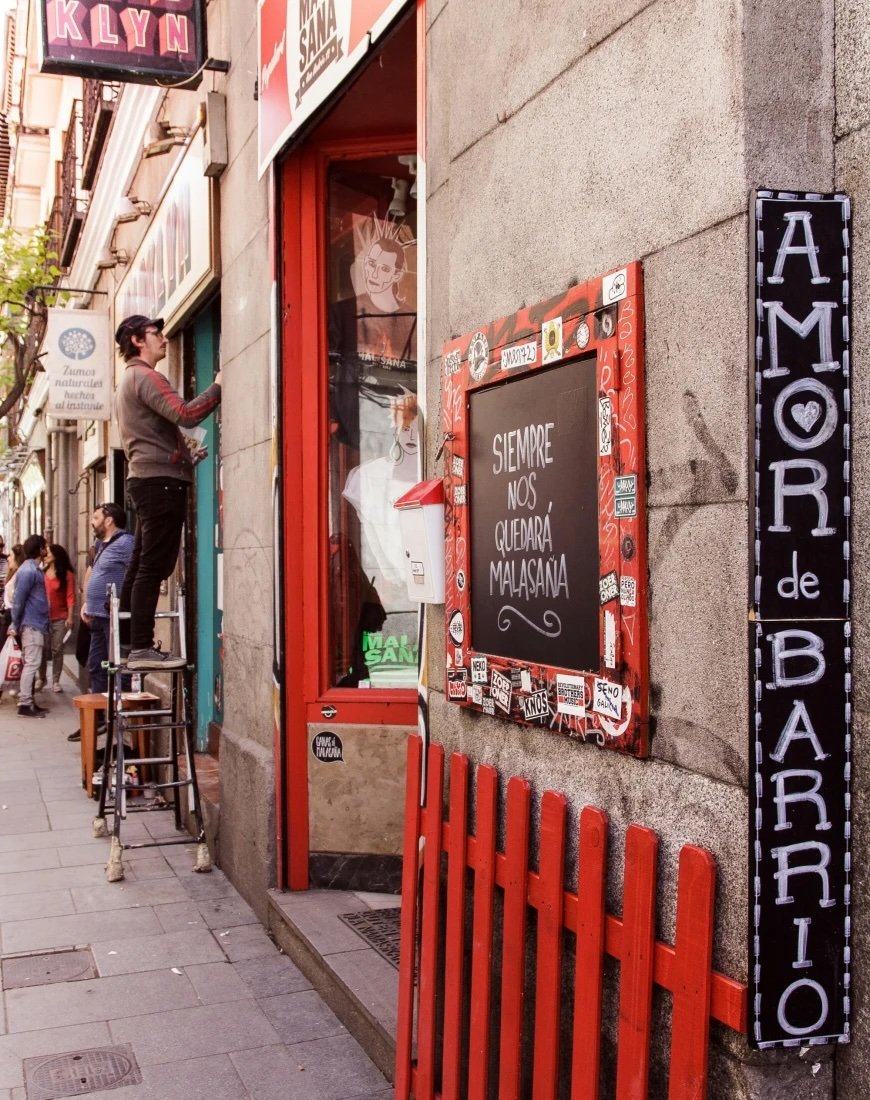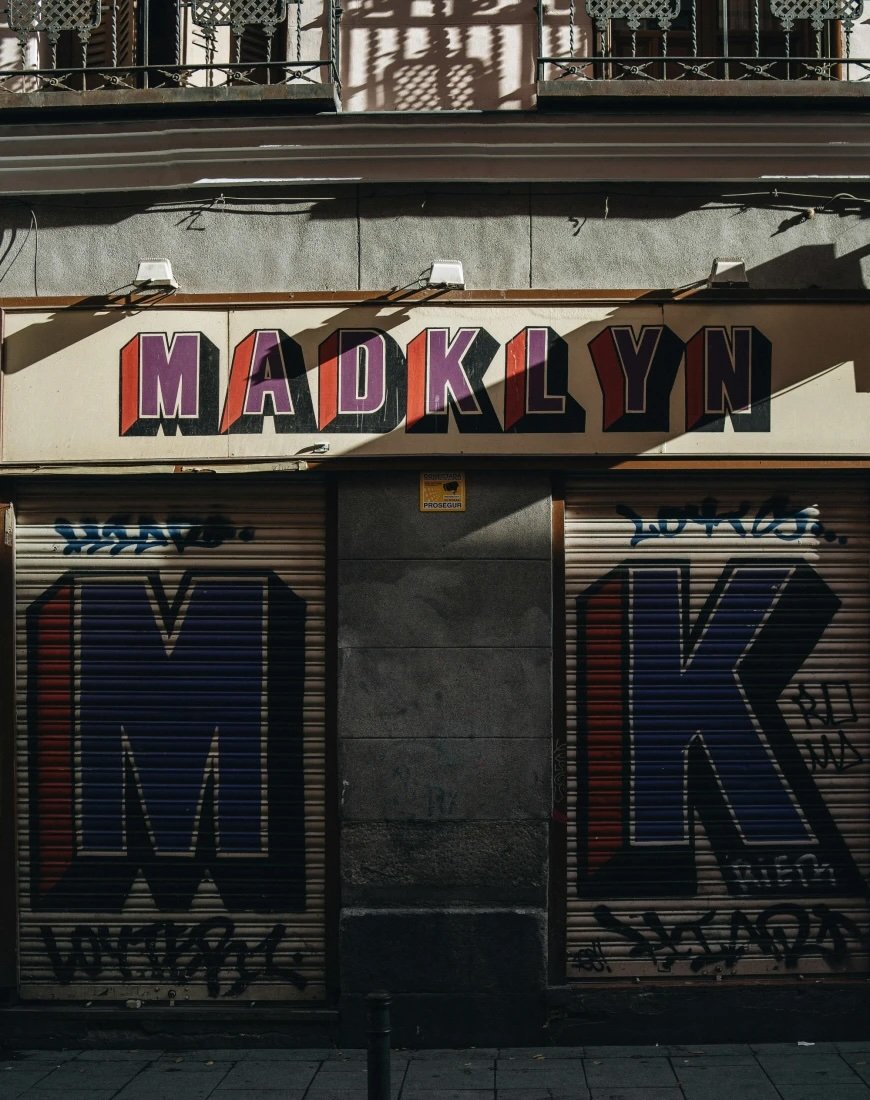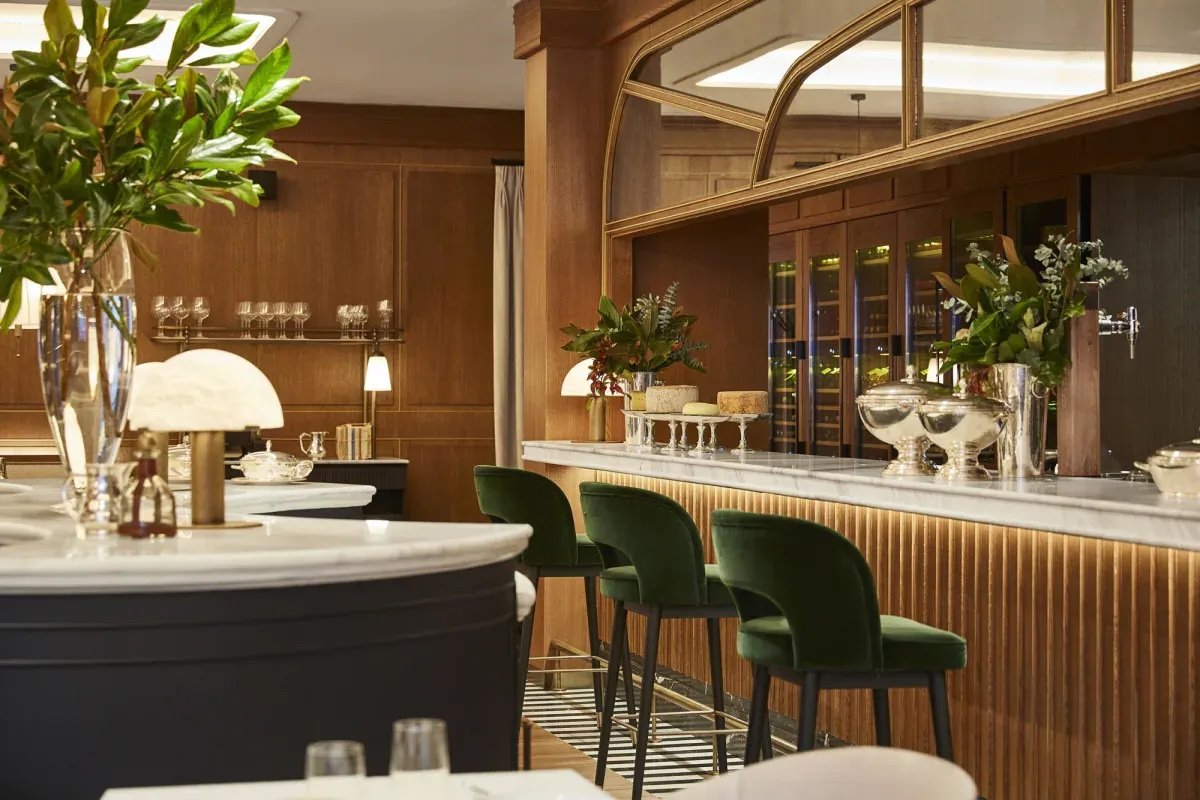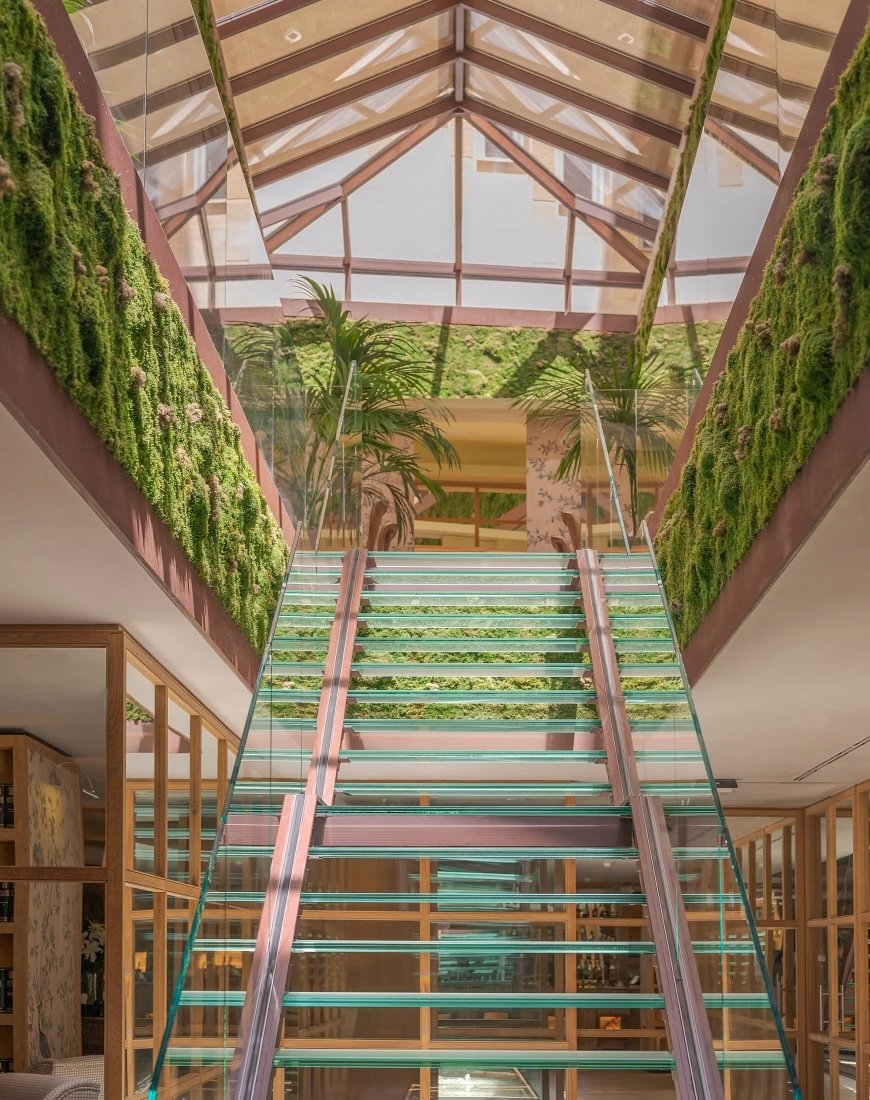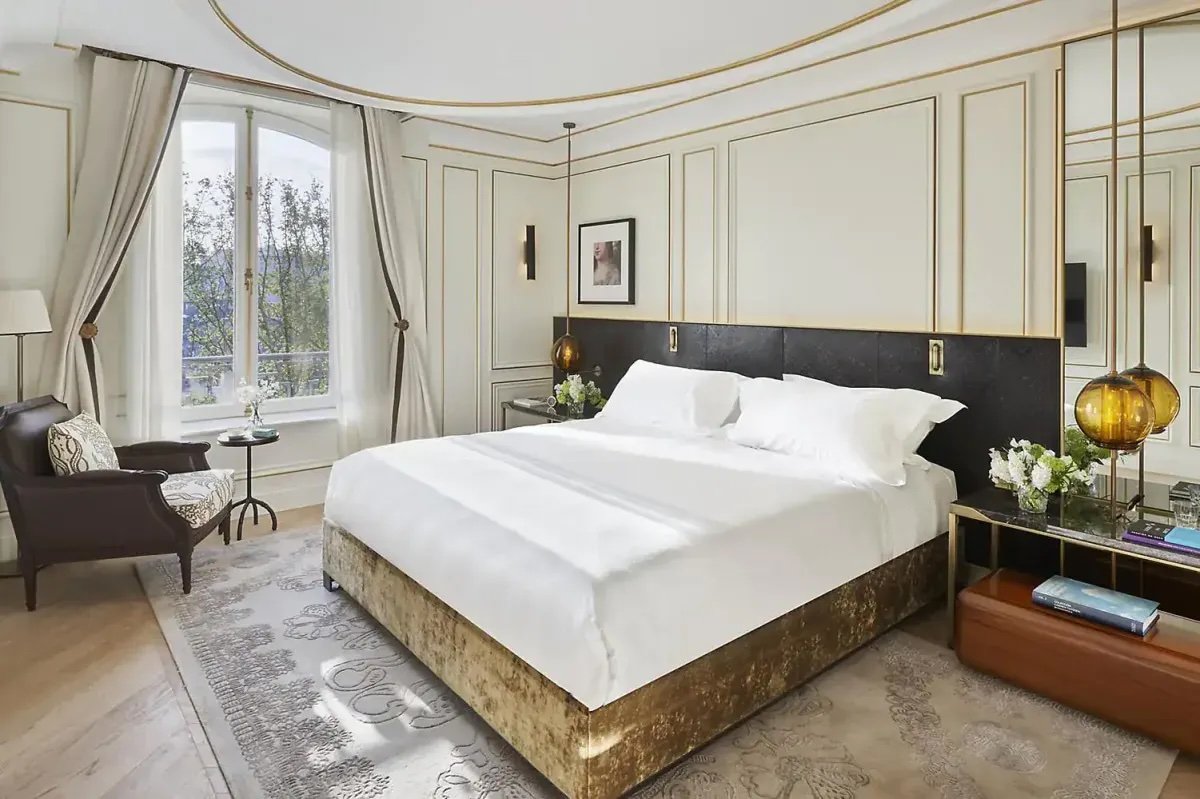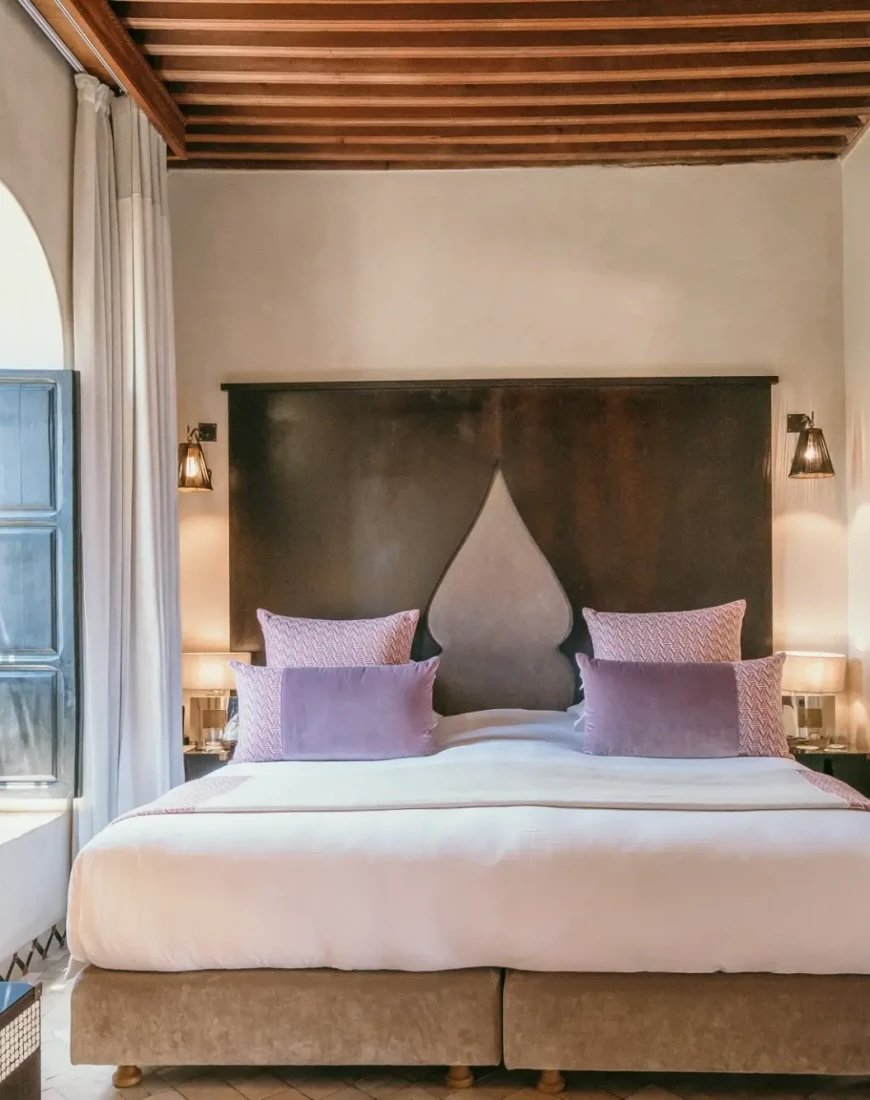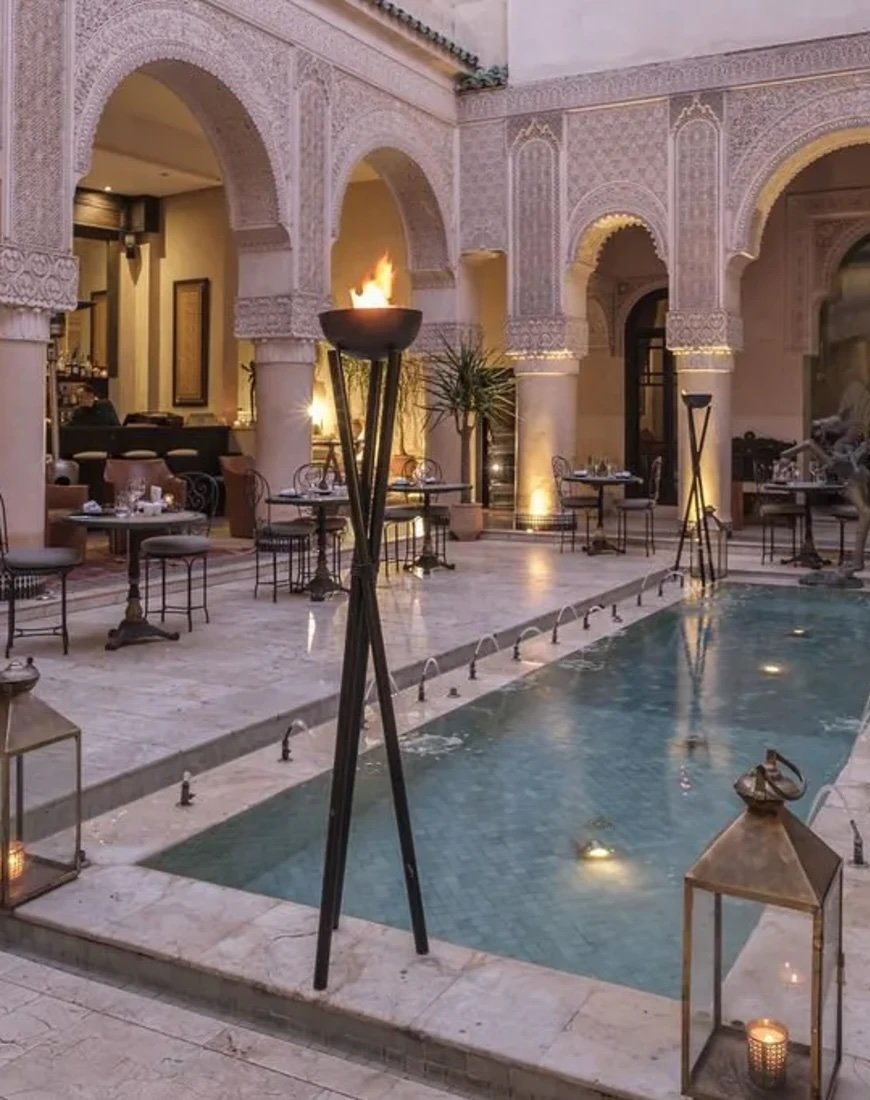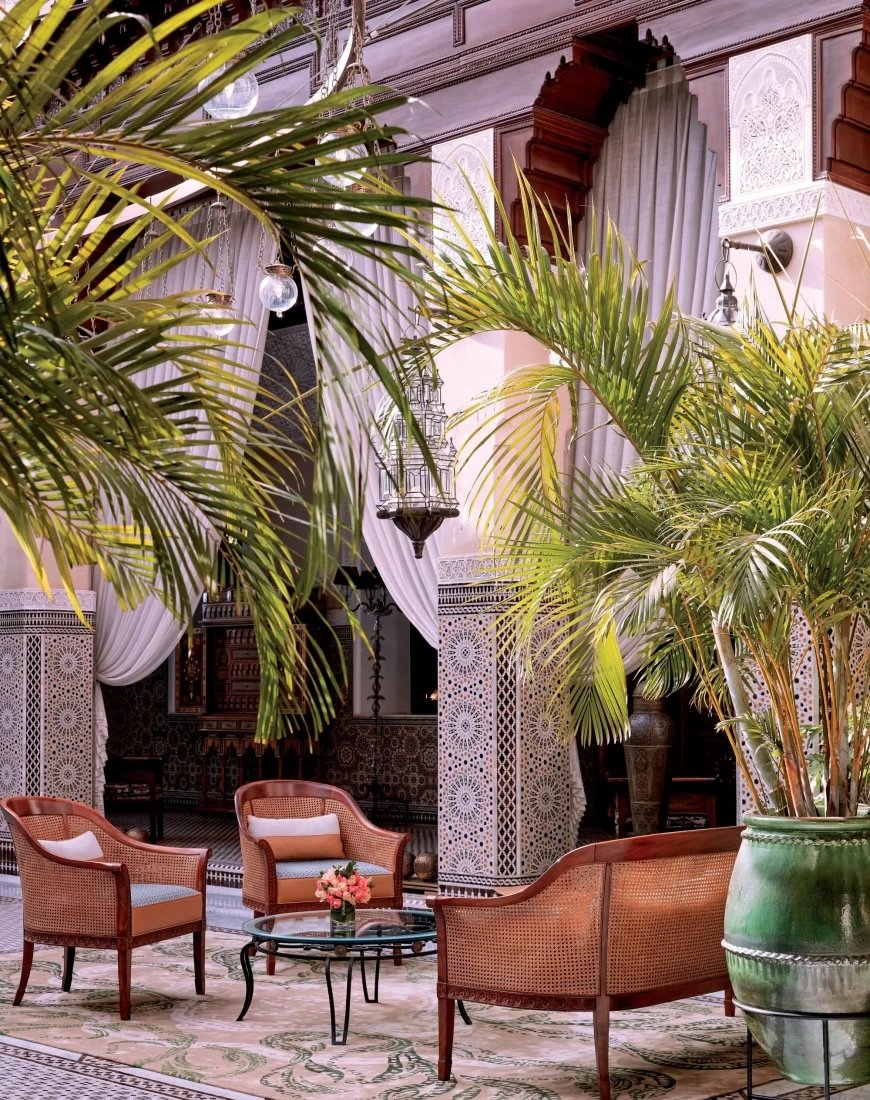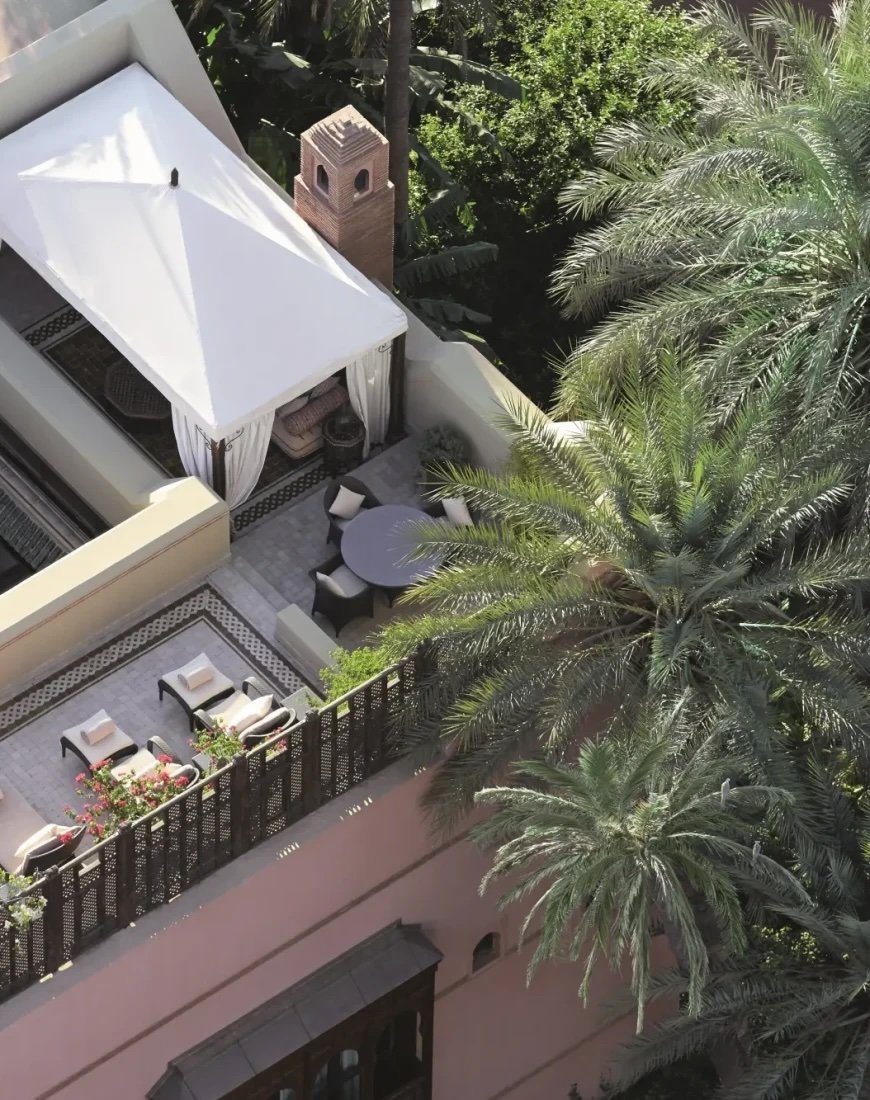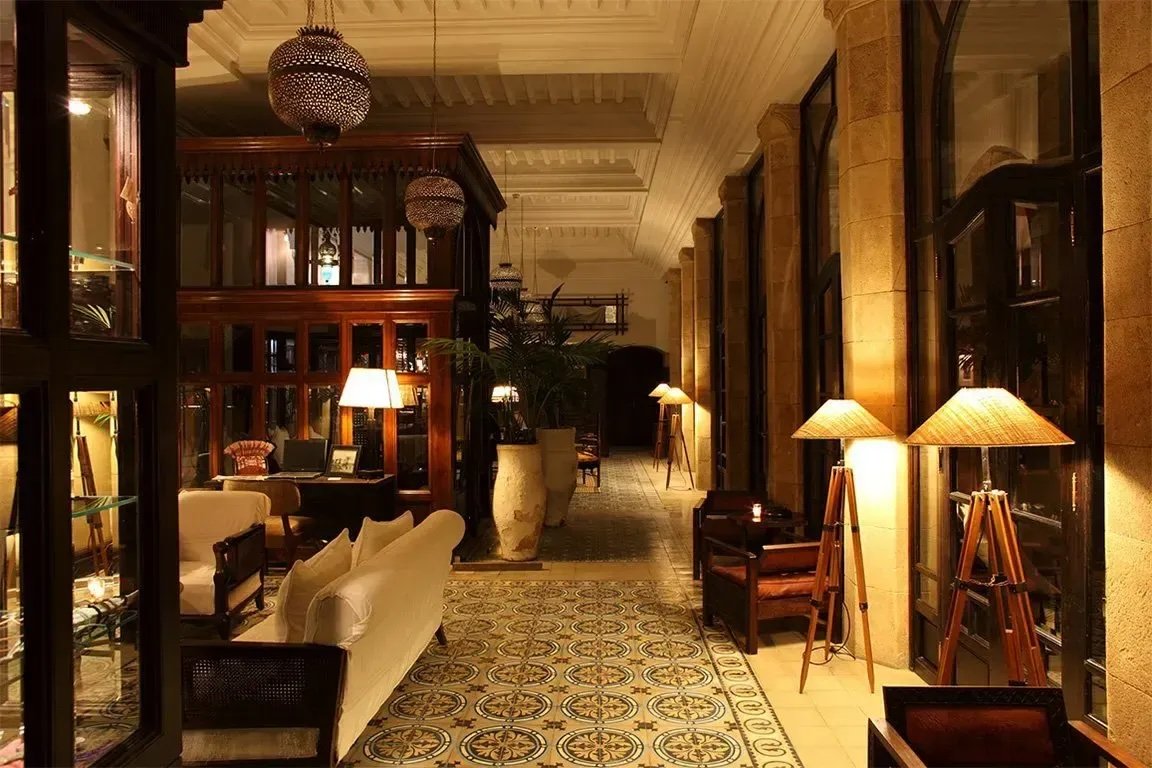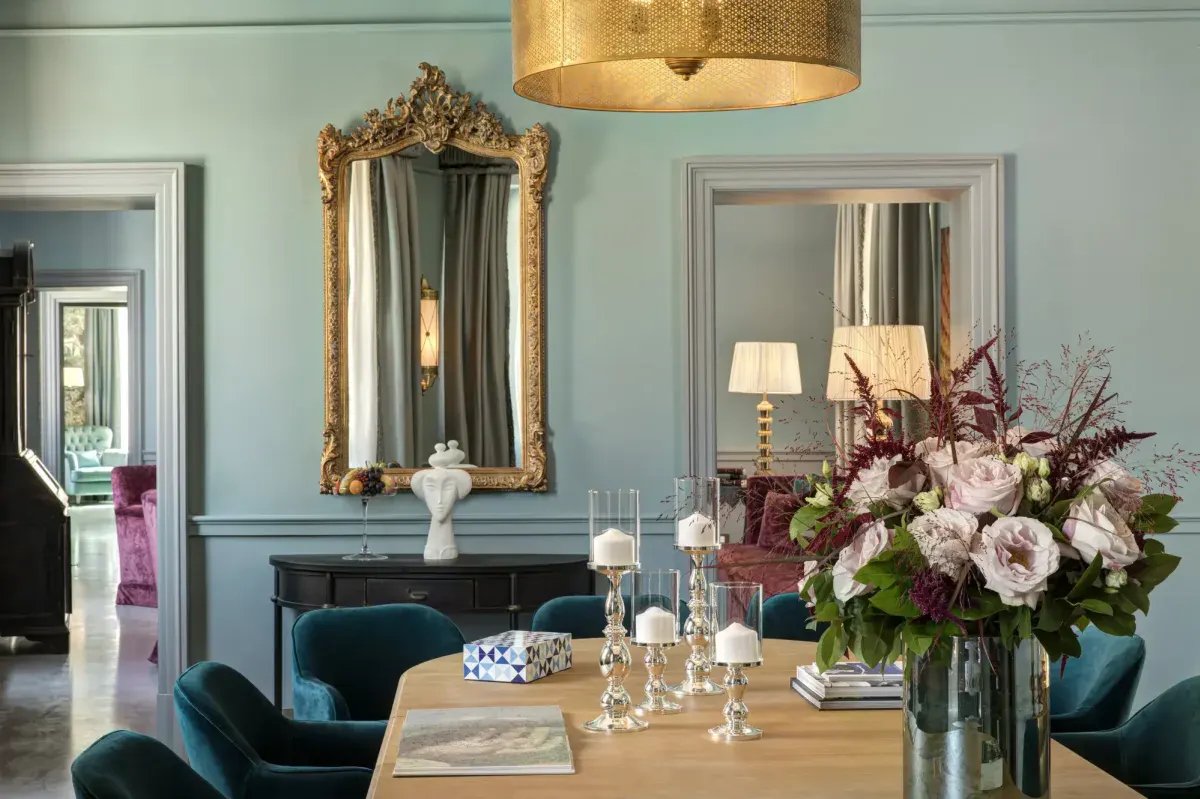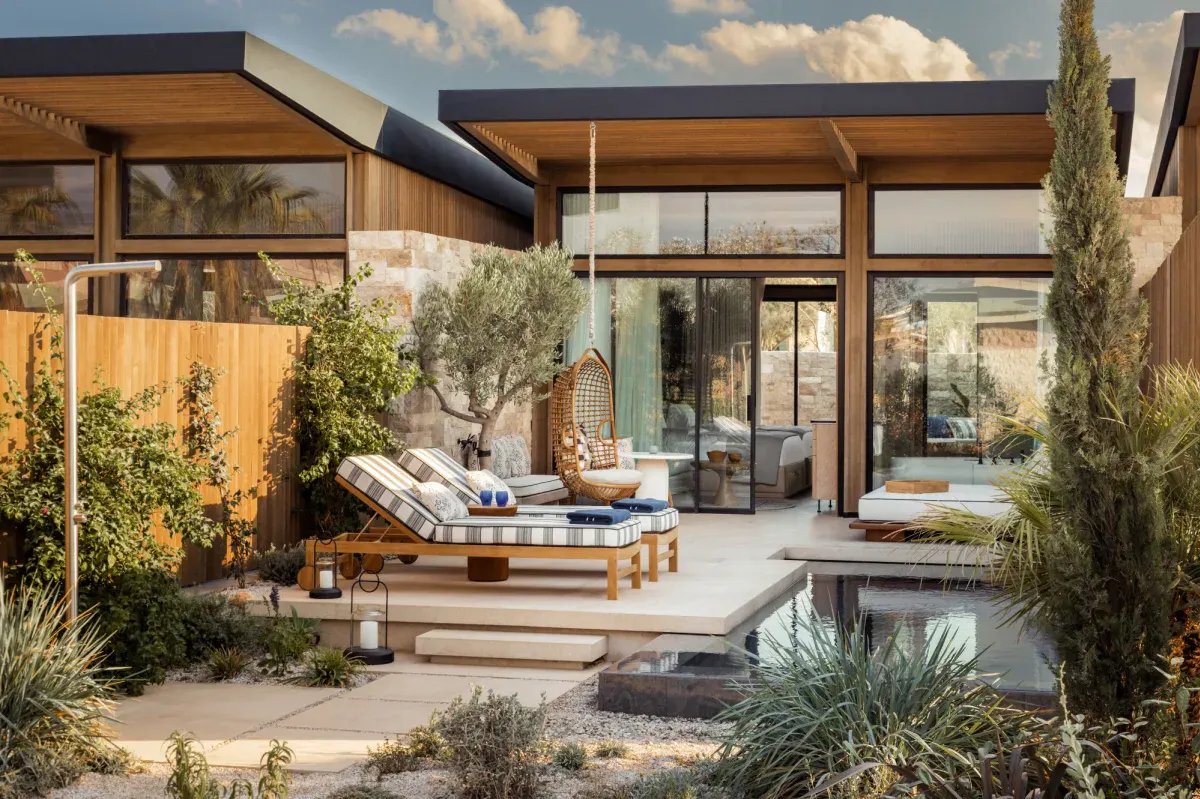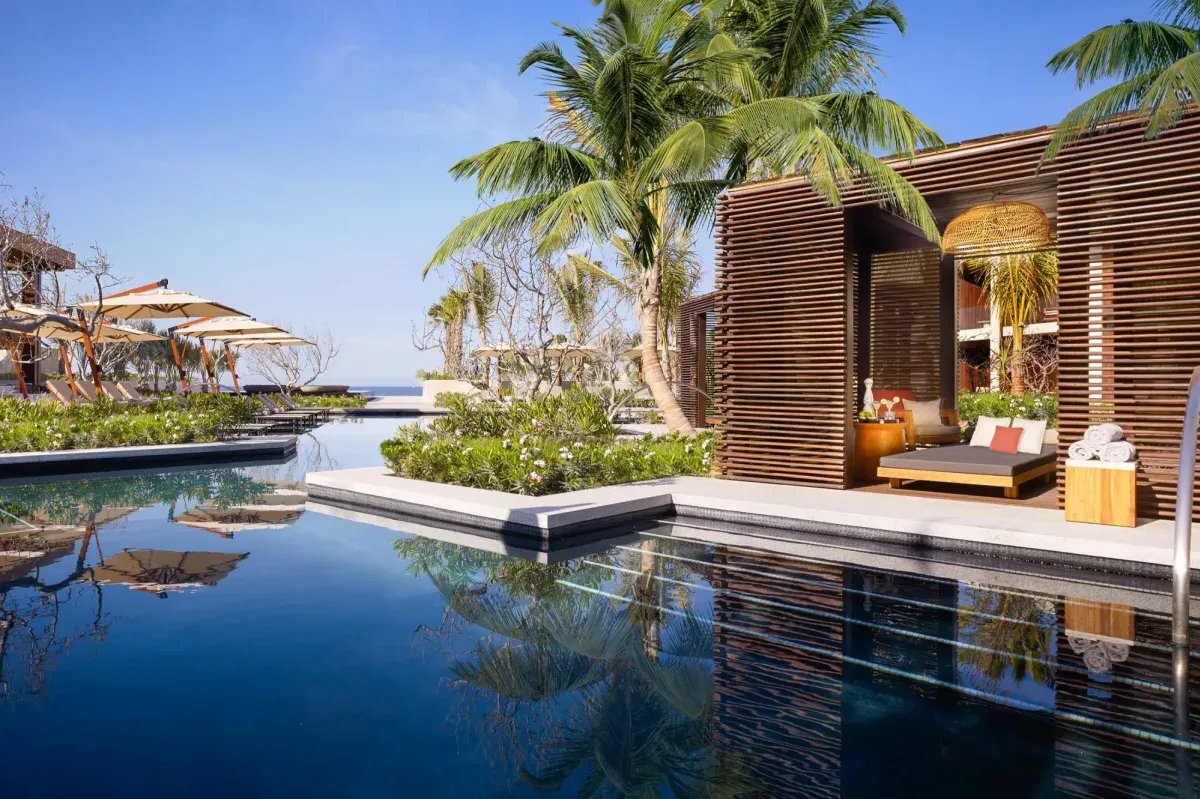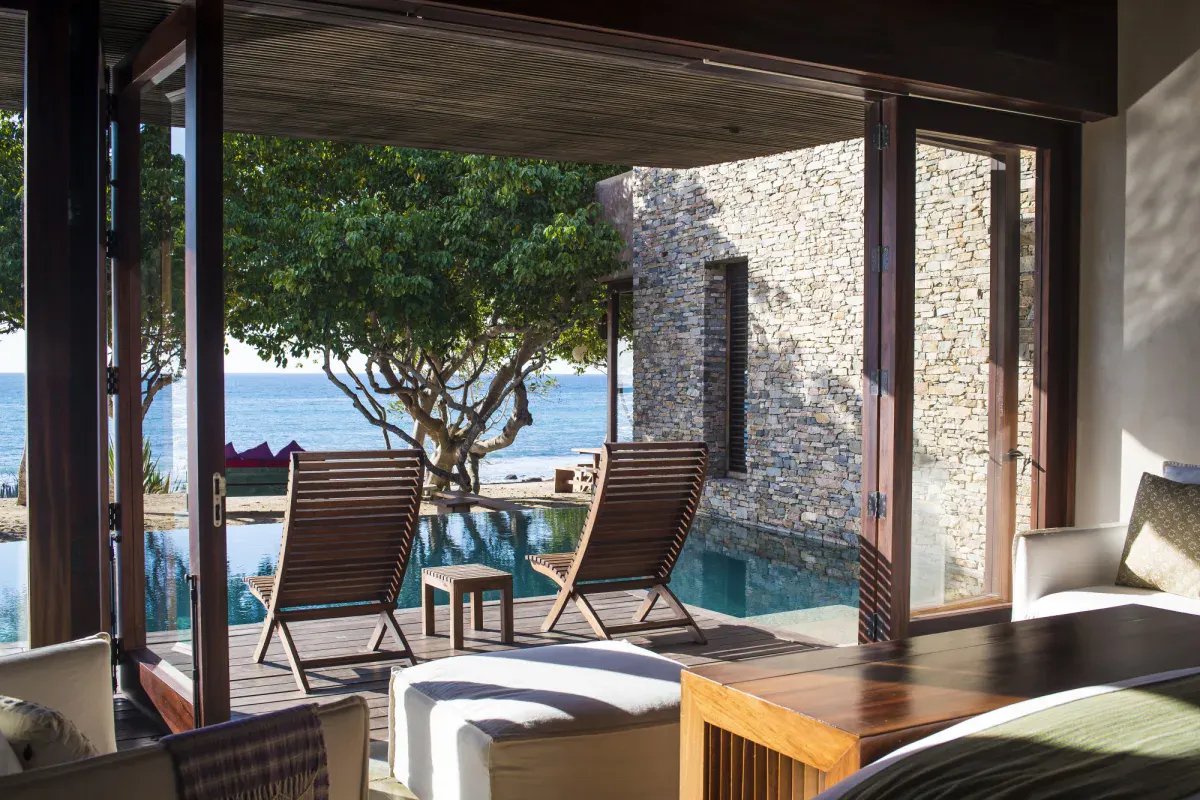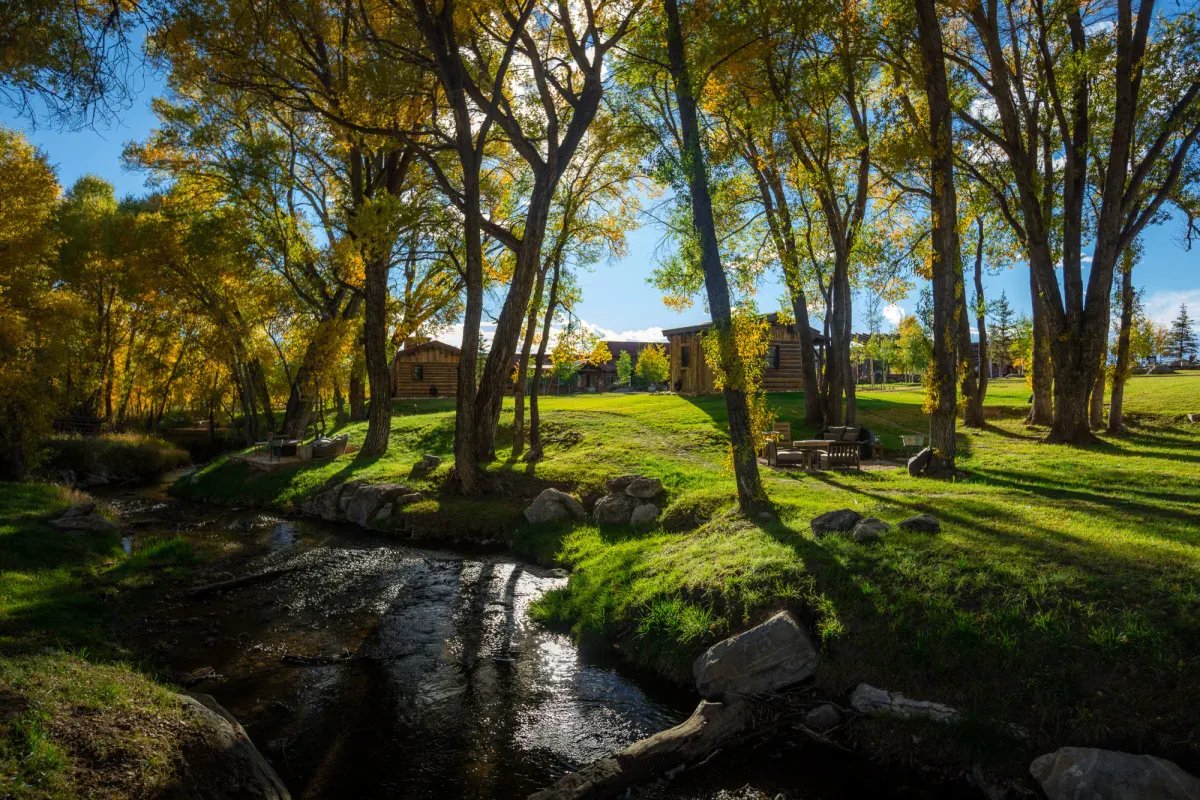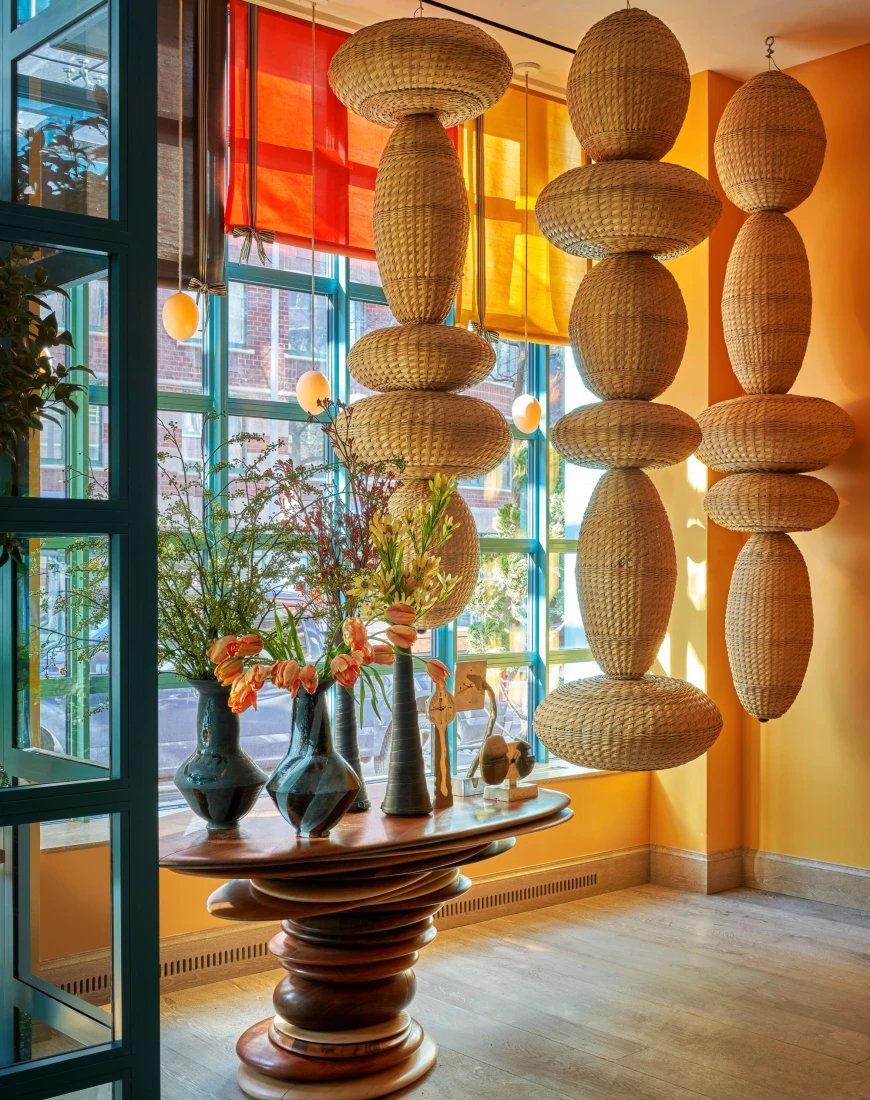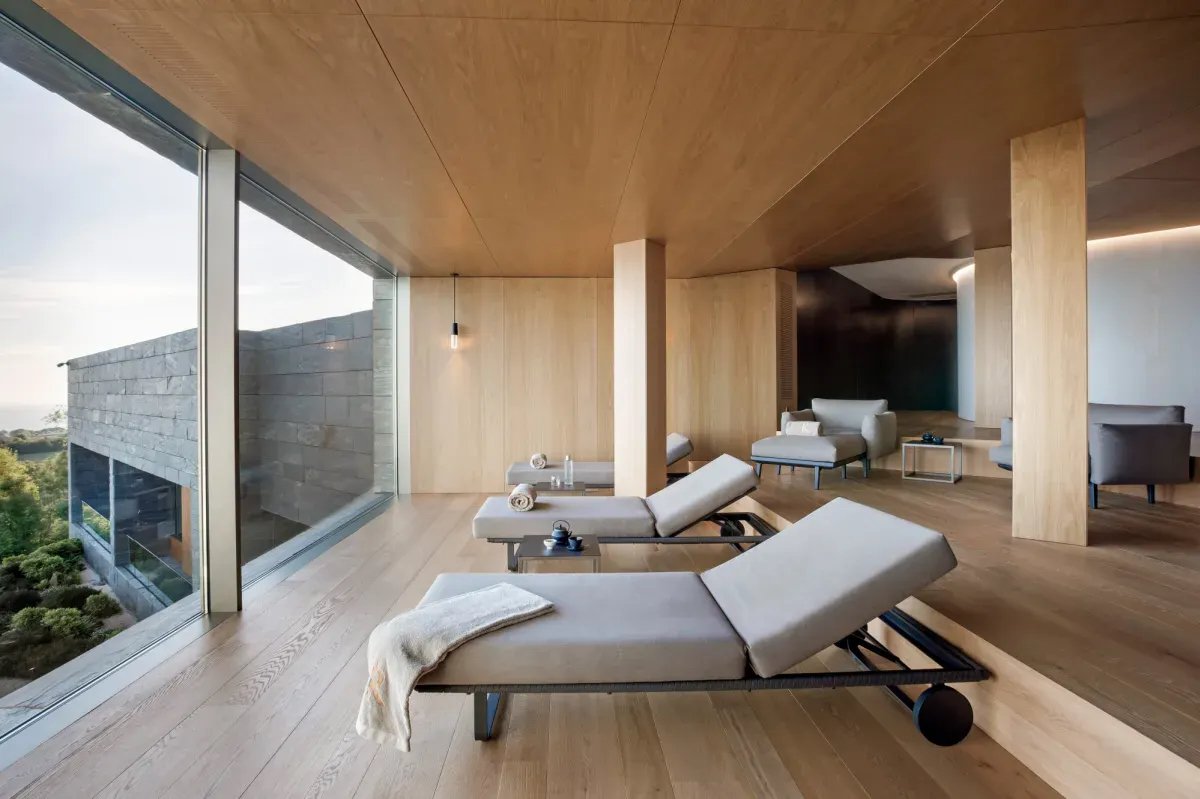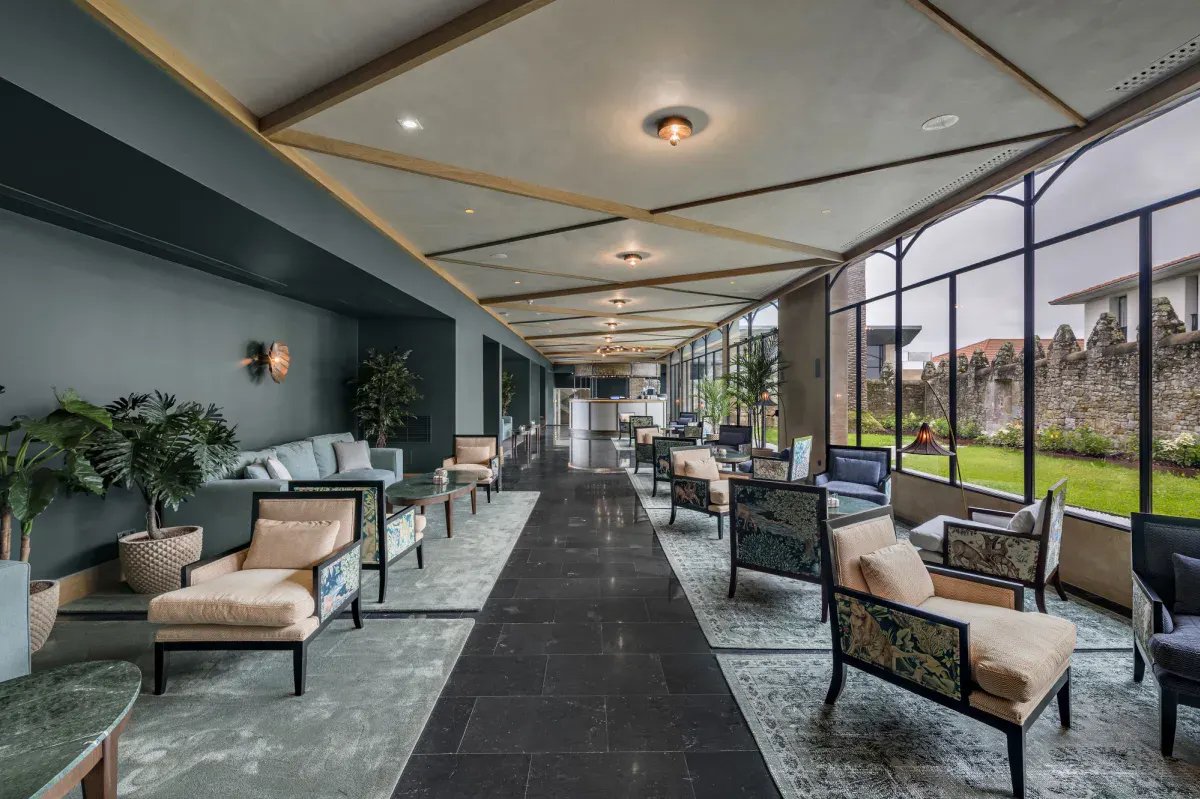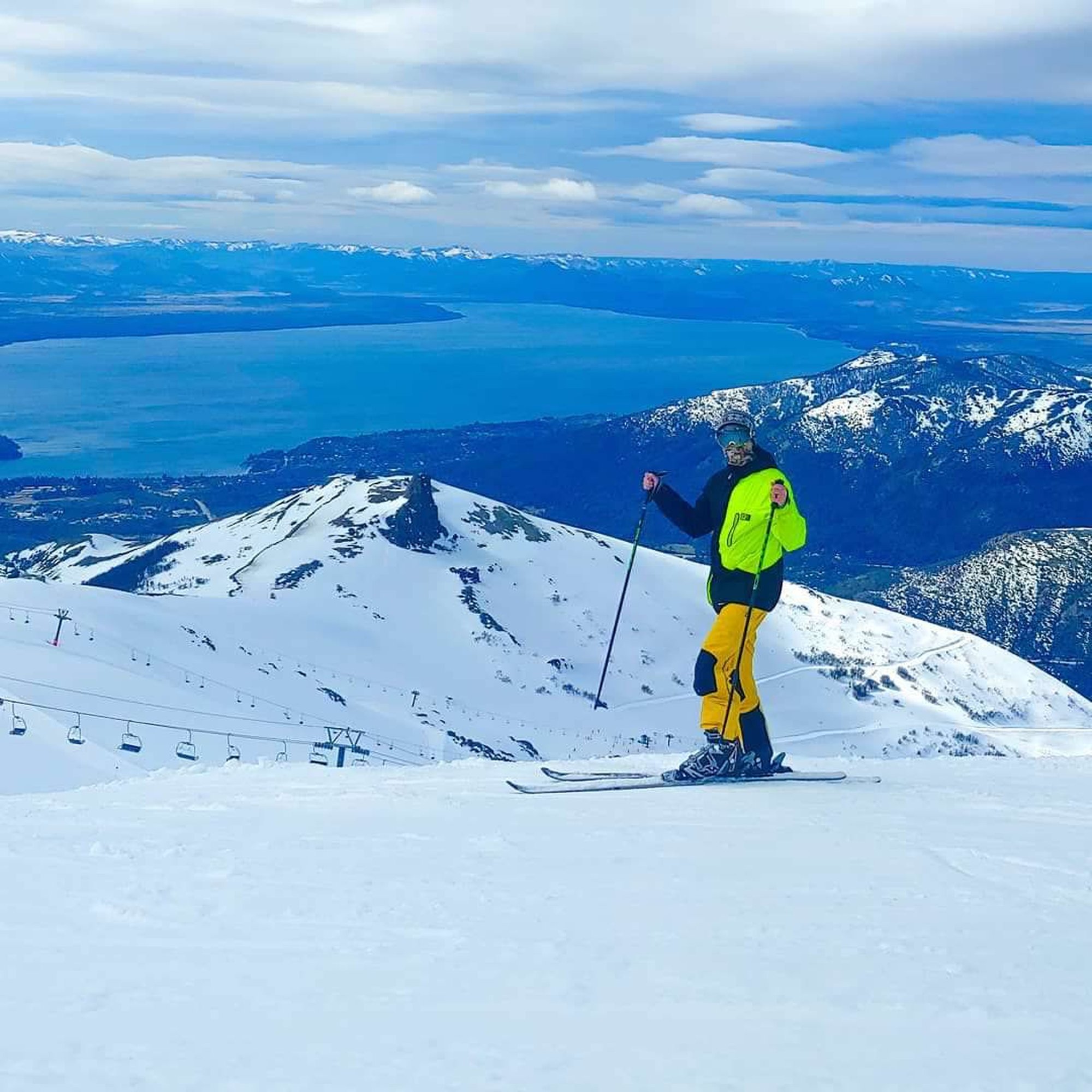Active Iceland: 6 Days of Wild Adventure from Reykjavík
Iceland is one of the rare places where you can stand inside a volcano in the morning and soak in a geothermal spa in the evening. Reykjavik makes it all possible, offering easy access to raw nature and unforgettable adventures. I love how much you can experience in such a short amount of time.
Day 1: Arrival, Blue Lagoon & Reykjavik
First stop after landing in Iceland: a soak in the otherworldly Blue Lagoon
After landing at Keflavík International Airport in the early morning, begin your Icelandic journey with a visit to the Blue Lagoon, just a short drive from the airport. This iconic geothermal spa is famous for its milky blue waters, rich in silica and minerals that nourish the skin and ease travel fatigue. With luggage storage and optional early check-in spa packages, it’s the perfect stop to relax and reset before heading into the city.
Why I recommend it
The Blue Lagoon is ideally located for a seamless transition from air travel to immersion in Iceland’s natural beauty. Soaking in warm, mineral-rich waters surrounded by lava fields is a memorable way to begin your trip, especially after an overnight flight.
Insider tips
Book in advance and choose a Comfort or Premium pass for added perks like robes, masks, and drinks.
Bring flip-flops and a reusable water bottle.
Use the provided conditioner liberally. Blue Lagoon water can be tough on hair.
After your soak and lunch at the Blue Lagoon Café or restaurant, transfer to your hotel in Reykjavík. Spend the afternoon exploring the city at a gentle pace: Stroll the harbor, check out local design shops and galleries, and stop for coffee or an early dinner. If you have the energy, take in sunset views from Hallgrímskirkja Church or walk along the waterfront to the Sun Voyager sculpture.
Note: Keep this first day easy and restorative. It sets the tone for the adventure-packed days to come.
Day 2: Inside the volcano at Þríhnúkagígur's magma chamber
Descending into the heart of a dormant volcano—only in Iceland
Today’s adventure takes you inside the Earth, quite literally. Just outside Reykjavik is Þríhnúkagígur, the only place in the world where you can descend into a volcano’s actual magma chamber. After a scenic 45-minute hike across a lava field, you’ll arrive at base camp and take an open cable lift 400 feet down into the vast, colorful cavern that once held molten lava. The scale, silence, and surreal beauty of the space make it a truly unforgettable experience.
Why I recommend it
This is a once-in-a-lifetime opportunity to explore something completely unique. The chance to stand inside a volcano is rare, and the proximity to Reykjavik makes it surprisingly easy to include.
Insider tips
Dress warmly. The temperature inside the chamber stays at around 6°C (43°F) year-round.
Wear sturdy hiking shoes. The trail to the crater crosses uneven lava terrain.
Look for the arctic fox family near the hut at base camp. They are often seen before or after the tour.
A hearty Icelandic soup is served at the hut after your descent. It is simple but delicious, especially after the hike.
Tours are limited and weather-dependent, so it is best to book early and keep some flexibility in your schedule.
Note: Restrooms are available at base camp. Be prepared for wind and rapidly changing weather during the hike.
Day 3: Snorkel or dive between continents at the Silfra fissure, Þingvellir National Park
Drifting between tectonic plates in the crystal-clear waters of Silfra—a surreal underwater experience unique to Iceland
Today, you’ll travel to Þingvellir National Park, a UNESCO World Heritage Site, where you can snorkel or scuba dive between two tectonic plates. The Silfra fissure is a glacial spring formed by the separation of the North American and Eurasian plates, filled with some of the clearest fresh water in the world. Visibility can exceed 100 meters, and the experience of floating through this deep-blue underwater canyon is both peaceful and surreal.
Why I recommend it
There is nowhere else in the world where you can drift between two continents in crystal-clear water. Whether you choose to snorkel or dive, it’s a bucket list experience that combines geology, adventure, and pure natural beauty.
Insider tips
Dry suits are provided to keep you warm in the cold water, which stays at around 2–4°C (36–39°F) year-round.
No diving experience is necessary for snorkeling, but divers must have a dry suit certification.
Bring a change of clothes and warm layers.
Book with an outfitter that includes transfers from Reykjavik, unless you plan to rent a car.
Note: Þingvellir is also historically significant as the site of Iceland’s first parliament. If time allows, take a short walk to explore the rift valley and the scenic Öxarárfoss waterfall before or after your water adventure.
Day 4: Puffins & RIB whale-watching on Reykjavík harbor
Puffins nest along Iceland’s coastal cliffs each summer. They are a colorful highlight of seasonal RIB tours from Reykjavik.
Start your morning with a high-speed RIB (rigid inflatable boat) tour from Reykjavik Harbor for an up-close encounter with Iceland’s incredible marine life. Depending on the season, you may see whales, dolphins, porpoises, puffins, and a variety of seabirds. These small, agile boats allow you to cover more ground and get closer to the action than traditional whale-watching tours, making for a thrilling and personal wildlife experience.
Why I recommend it
This tour combines the excitement of speed and open water with the quiet awe of seeing marine animals in their natural habitat. Leaving right from Reykjavik makes it incredibly convenient, and the smaller group size gives it a more intimate, adventurous feel.
Insider tips
Dress warmly with layers and windproof outerwear. Waterproof suits are usually provided, but it’s good to bring gloves and a hat.
Bring a good camera or binoculars if you want close-up views of puffins or whales.
Puffins are typically seen from May to mid-August, so plan accordingly if they’re on your list.
Tours may be rescheduled due to weather, so build in a little flexibility.
Note: This is a great half-day activity, leaving you free in the afternoon to enjoy more of Reykjavik. There are lots of great little cafés by the harbor.
Day 5: Horseback riding across lava fields
Riding through lava fields on Icelandic horses is a peaceful way to experience the raw beauty just outside Reykjavik.
Today, saddle up for a ride through mossy lava fields just outside Reykjavik, led by expert guides and friendly Icelandic horses. These compact, sure-footed horses are known for their unique tölt gait and calm, approachable nature. You don’t need any prior riding experience to enjoy this outing. It’s a peaceful, scenic way to connect with the land.
Why I recommend it
Riding an Icelandic horse is a memorable and authentic experience. The landscapes are striking, and the horses themselves are part of Icelandic heritage, having remained a pure breed for over 1,000 years. This outing offers a slower, quieter way to take in Iceland’s natural beauty.
Insider tips
Helmets and rain gear are usually provided.
Most stables offer beginner-friendly routes, but longer rides are available for more experienced riders.
Bring a small snack or water bottle to keep in your jacket pocket.
Note: This is a great mid-trip activity that is active but not overly strenuous, and ideal for relaxing into the rhythm of Icelandic life. In the afternoon, enjoy a free few hours to explore Reykjavik’s cafés, bookstores, or waterfront paths.
Day 6: ATV adventure & the Sky Lagoon
An unforgettable ride across Iceland’s black lava fields— wild, windy, and absolutely worth it
Begin your final day with an exhilarating ATV tour through black-sand beaches and lava ridges just outside Reykjavik. These guided rides are a thrilling way to experience Iceland’s dramatic terrain up close, with sweeping views and the satisfying crunch of volcanic soil under your tires.
After the ride, return to the city and spend your final afternoon at the Sky Lagoon, a modern oceanside geothermal spa just minutes from downtown. Its infinity-edge pool, lava rock design, and seven-step bathing ritual create a peaceful, immersive experience that leaves you feeling renewed and ready for the journey home.
Why I recommend it
This day is a perfect balance of action and restoration. The ATV tour gives you one last adventure, and the Sky Lagoon offers space to reflect and recharge before departure.
Insider tips
ATV tours provide gear, but bring gloves and clothes you don’t mind getting dusty.
The seven-step ritual at the Sky Lagoon includes a cold plunge and steam room. Take your time with each part.
Book the Sky Pass for private changing rooms and upgraded amenities.
The Sky Lagoon is a wonderful final stop before heading to the airport. It's close to Reykjavik and a relaxing way to wrap up your Iceland experience.
Need to know
This itinerary is ideal from June through August, when the days are long, roads are clear, and puffins are in season. This is also peak travel season in Iceland, so it’s important to book flights, hotels, and key excursions in advance.
Just know that you won’t see the Northern Lights in summer. From late May through early August, the midnight sun keeps the skies too bright for aurora viewing. If seeing the Northern Lights is on your list, you’ll want to plan a separate trip between late September and early April.
Food can be pricey in Iceland, especially at sit-down restaurants. For a more affordable and casual option, try Reykjavik’s excellent burger joints, noodle bars, or bakeries. Iceland is also famous for its hotdogs, which are inexpensive, tasty, and widely available.
Book key experiences early. Activities like the volcano descent, Silfra snorkeling, and Sky Lagoon fill up fast, especially in summer.
Tap water is some of the best in the world. Bring a reusable bottle and skip buying bottled water.
Pack swimwear even if you’re not a spa person. Hot springs and geothermal pools are a big part of Icelandic culture and a great way to relax after active days.
No rental car is needed. With Reykjavik as your base and guided tours offering hotel pickup, it’s easy to see and do a lot without driving.
Shops and restaurants close early. Reykjavík has a laid-back pace—don’t expect late-night dining or shopping.
Iceland uses standard European outlets (Type C/F, 220V). Bring an adapter if you’re coming from North America or other regions.
Born of Fire: In Pursuit of Iceland’s Volcanic Secrets
Iceland is a land where the earth feels alive, where volcanoes breathe steam into the sky and lava fields stretch like ancient scars. This itinerary was born from a deep fascination with the raw, elemental power of our planet and the sense of wonder that volcanic landscapes ignite. I designed this experience for curious travelers who crave not just beauty, but the stories written in stone and steam. From magma chambers to hidden valleys, it is a journey through Iceland’s living geology, elevated by comfort, insight, and awe.
Iceland is a land where the earth feels alive, where volcanoes breathe steam into the sky and lava fields stretch like ancient scars. This itinerary was born from a deep fascination with the raw, elemental power of our planet and the sense of wonder that volcanic landscapes ignite. I designed this experience for curious travelers who crave not just beauty, but the stories written in stone and steam. From magma chambers to hidden valleys, it is a journey through Iceland’s living geology, elevated by comfort, insight, and awe.
Welcome to Iceland, a country born of fire and shaped by tectonic forces and eruptive energy. After arriving at Keflavík Airport, a private transfer brings you to Reykjavík, where you will check in to the Reykjavik EDITION, a sleek harborside hotel that blends modern luxury with natural textures and geothermal inspiration.
Spend your afternoon exploring Reykjavík's lava-stone foundations on foot. Follow the coastal Sculpture and Shore Walk path for views of Mount Esja, a volcanic range across the bay, and the striking Harpa Concert Hall, which mirrors the island’s shifting skies. Skip the standard museum circuit. Reykjavík itself tells Iceland’s volcanic story through its geography, architecture, and street-level energy. For a relaxing stop, visit Ida Zimsen, a quiet café set inside a historic lava-stone building.
For dinner, I recommend Sumac Grill and Drinks, where the open-fire cooking and smoky spices reflect Iceland’s elemental character. The grilled lamb with harissa and smoked yogurt is a standout that connects the culinary experience to the heat and earth of the landscape. If you have energy after dinner, take a walk up to Hallgrímskirkja Church, whose iconic design was inspired by basalt lava columns.
This first day is about settling in, taking in your surroundings, and beginning to tune into the volcanic rhythm beneath your feet.
Notes:
Request early check-in or a spa treatment at The EDITION to refresh after your flight.
Look closely—many older buildings are made from local lava stone.
Head to the Sun Voyager sculpture around golden hour for stunning views of Mount Esja.
Day 2: Into the volcano
Today is about stepping into the heart of Iceland’s volcanic power. After breakfast, set out for Þríhnúkagígur, a dormant volcano just outside Reykjavík. You can reach the site with a guided hike across a lava field, or opt for a helicopter transfer that offers stunning aerial views of Iceland’s volcanic terrain. Once at the crater, you’ll descend 120 meters into the vast, silent magma chamber—one of the only places on earth where visitors can safely enter the interior of a volcano. The walls are stained with iron and copper-rich minerals, and the cavern's size and stillness feel almost otherworldly.
After your return hike or flight, enjoy a geothermal soak at the Sky Lagoon, where mineral-rich waters meet the North Atlantic. The spa’s seven-step ritual and oceanside infinity edge offer a serene counterpoint to the intensity of the day’s descent into the earth.
For dinner, book a table at Matur og Drykkur, a warm and stylish restaurant that revives traditional Icelandic recipes using ingredients like volcanic salt, dried fish, and locally foraged herbs. It’s an experience that tells the story of Iceland’s past and present—right down to the landscape on your plate.
Notes:
Dress in layers and bring a warm hat or jacket—the magma chamber remains around four degrees Celsius (39 degrees Fahrenheit) year-round.
The volcano tour is weather-dependent. If canceled, ask your guide about visiting Raufarhólshellir Lava Tunnel as an alternate experience.
Sky Lagoon is quieter in the late afternoon and early evening—ideal after a big excursion.
Day 3: Across Iceland’s youngest volcanic zone
Today, you step into one of Iceland’s most active and awe-inspiring landscapes. The Reykjanes Peninsula is a raw seam of the earth, where the Mid-Atlantic Ridge pulls continents apart and new land is born from fire. This is where Iceland breathes: hot, restless, and alive.
Begin at the Bridge Between Continents, where you can stand between tectonic plates and feel the slow drift of geological time beneath your feet. Continue to the sulfur-rich steam fields of Seltún, where bubbling mud pots and colorful mineral deposits paint a vivid portrait of the earth’s volatile surface.
Next, head to Fagradalsfjall, the site of Iceland’s recent eruptions. Hike across still-warm lava fields with a geologist or volcanologist guide, who will explain how this terrain was reshaped during the spectacular events of 2021 and beyond. If you prefer, take to the sky in a helicopter and land near the crater ridge for a thrilling aerial perspective of Iceland’s volcanic activity in action.
In the afternoon, visit the Lava Centre, a beautifully designed interactive museum that explores Iceland’s eruption history through immersive exhibits and live seismic data. Then continue to Hotel Rangá, a countryside retreat with open views of volcanoes and dark skies perfect for stargazing. Unwind in the outdoor hot tubs and enjoy a gourmet dinner that reflects Iceland’s bold, earthy flavors.
Notes:
The Fagradalsfjall hike can be windy and exposed. Bring a windproof layer and sturdy hiking shoes.
Helicopter landings depend on weather. Book early and stay flexible with timing.
Your guide may bring thermal cameras or drone footage to help you visualize what lies beneath the surface.
Day 4: Into the highlands: Landmannalaugar or Hekla
Today is your deep dive into Iceland’s volcanic interior, where fire and ice have carved a wilderness of rare color and power. From your base at Hotel Rangá, head inland on a private Super Jeep tour into the highlands, a region accessible only in summer and always with the right vehicle and guide.
Choose between two iconic volcanic routes:
Landmannalaugar: Known for its kaleidoscope of rhyolite mountains, lava fields, and steaming vents, this area sits on the edge of the Laugahraun lava field and offers some of Iceland’s most unique hiking terrain. You'll walk past obsidian trails, neon green mosses, and bubbling geothermal streams. At the end of the hike, soak in a natural hot spring surrounded by black lava rock.
Mount Hekla: Once feared as the “Gateway to Hell,” Hekla is one of Iceland’s most active stratovolcanoes. Explore her flanks with your guide, learning how repeated eruptions have reshaped this region again and again. The surrounding lava flows and ash fields offer dramatic views and a stark, lunar beauty.
Return to Hotel Rangá for another quiet evening in the countryside. Watch the sunset light shift across distant peaks or enjoy a stargazing session in the observatory. Iceland's volcanic story doesn’t end at the crater rim—it lingers in the air, the soil, and the sky.
Notes:
Let your guide assess conditions before choosing between Hekla and Landmannalaugar. Weather and trail access change quickly.
Bring a towel and bathing suit if heading to Landmannalaugar. The hot spring is natural and open to the sky.
Ask the hotel to set up the telescope if skies are clear. Hekla is especially striking under moonlight.
Day 5: The south coast: fire, ice & black sand
Today’s drive takes you deeper along Iceland’s south coast, where glaciers cap volcanoes and lava meets the sea. This is the land of Eyjafjallajökull and Katla, where explosive eruptions have shaped black deserts, sculpted waterfalls, and rewritten Iceland’s map.
Begin with a stop at the Eyjafjallajökull Visitor Centre to learn how the 2010 eruption affected the families living beneath the volcano. On a clear day, you’ll see the glacier shimmering above ash-covered slopes. Then visit two of Iceland’s most iconic waterfalls—Seljalandsfoss, where you can walk behind the curtain of water, and Skógafoss, where mist and spray rise from cliffs forged by ancient volcanic eruptions and glacial retreat.
In the afternoon, choose your own volcanic adventure.
Option one: A Super Jeep ride across Mýrdalssandur to reach a blue-and-black ice cave beneath Mýrdalsjökull glacier. Here, your guide will lead you beneath the ice cap of Katla, one of Iceland’s most active volcanoes, into a world shaped by fire and ice.
Option two: A glacier hike across the ash-streaked surface of Sólheimajökull, where your guide will point out crevasses, moulins, and layers of volcanic ash embedded in the ice itself.
Arrive at UMI Hotel in the early evening, a quiet retreat nestled between sea and mountain. Take a walk on the nearby black sand beach, formed entirely from eroded lava rock, and listen to the waves crashing over volcanic fragments ground fine by centuries of wind and water. Enjoy a seasonal dinner inspired by the land, ideally timed for sunset over Eyjafjallajökull.
Notes:
Tours into the Katla ice cave or onto the glacier depend on weather—confirm the day before.
Bring waterproof outerwear, gloves, and boots for either excursion.
Ask for a volcano-facing room at UMI and plan your dinner seating to catch the evening light.
Day 6: Beneath the ice: Vatnajökull and the volcanic glacier lagoon
Today takes you deep into the southeastern edge of Iceland, where glaciers conceal some of the country’s most powerful volcanoes. This region isn’t just beautiful—it’s one of the most geologically dynamic on Earth. Beneath the icy bulk of Vatnajökull, volcanoes like Grímsvötn, Öræfajökull, and Bárðarbunga quietly simmer, shaping both landscape and legend.
In the morning, meet your private guide—a glaciologist or volcanologist—for a hike on one of Vatnajökull’s outlet glaciers. As you trek across ancient ice streaked with volcanic ash, you’ll learn how eruptions beneath the glacier create explosive floods, how climate change is accelerating glacial melt, and how tephra layers preserve a timeline of Iceland’s volcanic past. The views stretch across black sand plains formed by past eruptions, with the mountains rising like frozen waves above.
In the afternoon, make your way to Jökulsárlón Glacier Lagoon, where meltwater from Vatnajökull carries centuries-old icebergs out to sea. Board a zodiac boat with a geology-savvy guide and navigate between towering icebergs—some with visible layers of volcanic ash and air bubbles trapped since the time of Shakespeare. You'll float through a living, melting archive of Iceland’s volcanic and glacial history.
If time allows, stop at Diamond Beach, where glacial ice washes up on jet-black volcanic sand. Each piece is a sculptural fragment of the glacier’s retreat, sparkling like quartz against the dark shore.
Tonight, stay in the Hali or Höfn area, surrounded by quiet plains and ocean views. Ask for a room with a view of the glacier if possible. On clear nights, this region has some of the darkest skies in Iceland—perfect for stargazing or catching a flicker of the aurora.
Notes:
Wear sturdy boots with ankle support for the glacier hike. Your guide will provide crampons and safety gear.
The zodiac tour is wind-sensitive—earlier departures tend to have calmer conditions.
The Þórbergssetur Cultural Centre in Hali is worth a visit for a literary and local perspective on living beneath a volcano.
Day 7: Into the rift: Krafla’s living lava & the power beneath
This morning, head north into Iceland’s volatile interior, where the earth stretches and splits beneath your feet. Your destination is the Krafla volcanic system, one of the most active and scientifically significant regions in the country. This is where the land is still forming—hot, raw, and restless.
Begin with a guided hike across the Leirhnjúkur lava fields, where you’ll walk across still-warm flows from eruptions in the 1970s and 1980s. Beneath the jagged black surface, heat still lingers. Your volcanologist guide will share how the ground here split open as tectonic plates pulled apart, creating a rift where magma surged to the surface.
In the afternoon, set out by Super Jeep across the wider Krafla caldera, exploring steaming fissures, eruption sites, and the vivid turquoise waters of the Víti crater, formed in a single violent blast. This landscape is surreal, alien, and alive—a living map of Iceland’s volcanic identity.
As the day winds down, soak in the Mývatn Nature Baths, where warm, mineral-rich waters flow from deep beneath the volcanic crust. The view from the pool stretches across lava plains and geothermal hills. It’s a peaceful contrast to the intensity of the terrain you’ve explored.
Tonight, check in to Fosshotel Mývatn, a beautifully designed, turf-roofed retreat set right into the volcanic landscape. Large windows frame views of the lake and lava fields, and the northern sky puts on a show when the aurora makes an appearance. From late August through mid-April, this region is one of the best places in Iceland to witness the Northern Lights. Sleep surrounded by silence, sky, and stone—close to the earth in every sense.
Notes:
Don’t rush the Leirhnjúkur hike. Pause and place your hand near the steam vents to feel the lingering heat.
Fosshotel Mývatn is one of the best spots in the north for Northern Lights photography—just step outside after dark.
Ask the hotel staff to wake you if the aurora appears during the night—they offer a discreet alert system.
Day 8: Across the north: lava trails & the edge of the Arctic
This morning, you leave Mývatn and follow a road that stretches across Iceland’s quiet north. The landscape shifts from steaming lava fields to high plateaus carved by ancient glaciers and softened by time. Pass through Akureyri for a short break—then continue on, deeper into the untouched wilds of the Troll Peninsula.
The destination is Eleven Deplar Farm, a converted sheep farm tucked between volcanic peaks and fjords in one of Iceland’s most remote regions. Arrival here marks a shift in the journey—from raw exploration to deep restoration. Set amid moss-covered lava fields and steaming geothermal pools, Deplar is your finale, where Iceland’s elemental power meets unmatched comfort and stillness.
Choose how you want to experience this final chapter: heli-hike above forgotten craters, paddle past basalt cliffs, or simply float in the geothermal pool beneath a sky that might flash green with Northern Lights. Indoors, the warmth continues—through sheepskin chairs, basalt walls, and a deeply local tasting menu served fireside.
Deplar Farm is not just where your journey ends—it’s where it settles. You’ve walked through erupting landscapes and beneath glacier-covered volcanoes. Now, let the silence speak. Let the fire rest.
Notes:
Ask your guide about the ancient shield volcanoes between Skagafjörður and Ólafsfjörður.
Schedule a massage or float session after arrival—it’s the most grounding way to enter this final phase.
The lodge's observatory deck is one of the best spots in the country for viewing the aurora—October through April is peak season.
Day 9: Departure from the edge of the earth
Wake to the stillness of the valley—mist curling off the mountains, silence stretching for miles. After a slow breakfast and one last soak in the geothermal pool, it’s time to begin the journey home.
Depending on your schedule, you’ll either fly from Akureyri Airport to Reykjavík or connect directly to an international departure. The short drive from Deplar to Akureyri hugs dramatic coastlines and volcanic cliffs—one last reminder of the land’s wildness.
If time allows, stop in Akureyri’s botanical gardens, where Arctic and volcanic flora bloom side by side. Or take a moment at the harbor, watching the sea quietly lap against basalt stone.
You’ve walked inside a volcano, stood on lava younger than you are, and followed Iceland’s volcanic thread from magma chamber to glacier lagoon. Now, with your boots dusted in ash and your senses full, you leave changed.
Notes:
Akureyri Airport offers several daily flights to Reykjavík Domestic Airport—most connect to international departures from KEF.
If you’re not ready to go home just yet, consider a detour to Húsavík for whale watching—or ask about extending your stay at Deplar.
Carry volcanic stones, sand, or memories—but not lava rocks. Icelanders consider them part of the land’s spirit.
Need to know
Volcanology lovers, take note: Iceland is one of the most active volcanic regions in the world, and many of its most dramatic features—from black sand beaches to geothermal pools—exist because of its location on the Mid-Atlantic Ridge. What makes this itinerary unique is that you’re not just seeing Iceland; you’re following the story of how it was formed, from deep magma chambers to freshly cooled lava fields.
Best time to go
Late August through October offers the ideal window for this journey. Daylight hours are still generous, but dark skies return, giving you a good chance to see the Northern Lights. Highland routes are typically still open, and popular sites are quieter after peak season.
Recommended reading
Island on Fire by Alexandra Witze and Jeff Kanipe: A gripping narrative of the Laki eruption and its global consequences.
A Brief History of Iceland by Gunnar Karlsson: A clear look at how volcanic activity has shaped Iceland’s national story.
Names for the Sea by Sarah Moss: A lyrical and reflective account of living amid Iceland’s natural extremes.
The Little Book of Icelanders in the Old Days by Alda Sigmundsdóttir: A collection of short essays on how Icelanders adapted to their wild, volcanic environment.
Documentary: Fire & Ice: The Volcanoes of Iceland (PBS Nova or YouTube) – A vivid exploration of Iceland’s geologic evolution, highlighting eruptions and their impact on the environment and society.
Podcast: "The Naked Scientists – Volcanology Special": Features interviews with geologists and volcanologists who study Iceland’s rift zones, offering approachable insight into the forces that shape the island.
Insider advice
Ask your guides about the "Southward Shift"—recent volcanic activity on the Reykjanes Peninsula is offering scientists new insights into Iceland’s future.
Try traditional hverabrauð, or geothermal bread, which is slow-baked underground in hot spring areas.
Bring a notebook or sketchpad—travelers often find these landscapes stir up ideas, questions, and quiet reflection.
Please don’t take lava stones home. Many locals view them as spiritually significant, and it's considered bad luck to remove them.
The Spanish Coast You’ve Never Heard Of: An 11-Day Road Trip from Valencia to Barcelona
Underground rivers, volcanic islands, cliffside castles, and Roman ruins by the sea—this is the Mediterranean as you’ve never seen it. While most travelers rush between Valencia and Barcelona, they miss the incredible stretch of coastline that lies in between. I live here, and I’ve mapped out a 2-week road trip that winds through thermal springs, medieval towns, hidden beaches, and cliffside castles that rarely make it into guidebooks. If you’re ready to go beyond the tourist trail and explore the wild, beautiful, and often overlooked heart of coastal Spain, this itinerary is for you.
Underground rivers, volcanic islands, cliffside castles, and Roman ruins by the sea—this is the Mediterranean as you’ve never seen it. While most travelers rush between Valencia and Barcelona, they miss the incredible stretch of coastline that lies in between. I live here, and I’ve mapped out a 2-week road trip that winds through thermal springs, medieval towns, hidden beaches, and cliffside castles that rarely make it into guidebooks. If you’re ready to go beyond the tourist trail and explore the wild, beautiful, and often overlooked heart of coastal Spain, this itinerary is for you.
Day 1: Arrive in Valencia and settle in
Start your adventure in Valencia, where ancient city walls blend with futuristic architecture. After checking in, head out on foot to explore the historic heart of the city. Wander through the labyrinthine streets of El Carmen, admire the mix of Moorish and Gothic details in the Valencia Cathedral, and climb the Micalet bell tower for panoramic views across the rooftops.
Why I recommend it:
Valencia is one of Spain’s most vibrant and walkable cities. Day one gives you a perfect introduction to its history, architecture, and laid-back Mediterranean energy. You’ll get a sense of place without needing to rush, making it ideal for arrival day.
Insider tip:
Grab a horchata (a traditional Valencian drink made from tiger nuts) at a local horchatería like Santa Catalina. It’s refreshing, local, and perfect for an afternoon break.
Day 2: Discover Valencia’s modern side
Today is about diving into Valencia’s bold, modern identity. Start your morning at the City of Arts and Sciences, a futuristic complex with striking architecture designed by Santiago Calatrava. Depending on your interests, you can tour the interactive science museum, catch a 3D film at the Hemisfèric, or explore Europe’s largest aquarium, the Oceanogràfic, home to beluga whales, jellyfish, and sea lions.
In the afternoon, rent a bike or enjoy a leisurely stroll through the Turia Gardens, a sunken park created from a diverted riverbed. It winds through the city like a green ribbon and offers shaded pathways, fountains, and playgrounds.
In the evening, head to the neighborhood of Ruzafa, one of Valencia’s trendiest districts. This area is filled with independent shops, art spaces, and some of the city’s best restaurants. It’s a great place to get a feel for local life away from the tourist core.
Why I recommend it:
Valencia’s modern identity is every bit as fascinating as its historic past. This day shows off the city's commitment to green spaces, innovation, and the arts in a way that makes it feel utterly alive and forward-looking.
Insider tip:
If you’re visiting in summer, consider timing your visit to the Oceanogràfic for late afternoon—it stays open late and is beautifully lit at night, making for a cool break from the heat and a magical evening experience.
Day 3: Coves de Sant Josep
Leave Valencia in the morning and head toward Coves de Sant Josep, home to the longest navigable underground river in Europe. Take a tranquil boat tour through the subterranean caves, gliding past dramatic rock formations and sparkling turquoise waters. For adventurous travelers, the espeleokayak experience offers the chance to paddle your own way through this otherworldly environment.
Why I recommend it:
There is nothing quite like floating through a mountain on an underground river. It’s a surreal, serene, and truly off-the-radar highlight of the region.
Insider tip:
Book your cave tour in advance, especially in summer months, and bring a light jacket—it stays cool inside year-round.
Day 4: Montanejos
Drive a little inland into the Alto Mijares region and spend the day in the wellness town of Montanejos. Start with a dip in the Fuente de los Baños, a hot spring-fed river that stays at a constant 25°C year-round. Then hike one of the dramatic canyon trails that surround the town. If you're up for it, take the path along the narrow gorge to see waterfalls and panoramic cliffs. For thrill-seekers, Montanejos also offers river rafting and aquatic canyoneering experiences, making it a fantastic destination for outdoor adventure.
Why I recommend it:
Montanejos is a hidden gem in the mountains with natural thermal waters, rugged beauty, and peaceful vibes. It’s a favorite spot for Valencians but rarely visited by international travelers.
Insider tip:
Arrive early if visiting on a weekend, as the river pools are popular with locals. Bring water shoes for comfort and grip on rocky trails.
Day 5: Benicàssim
After your inland adventures, return to the coast for a relaxing reset in Benicàssim. Known for its beaches backed by green hills and pine forests, Benicàssim offers the perfect balance of sun, sea, and scenery. Stroll the Vía Verde del Mar, a clifftop walking and biking trail with sweeping Mediterranean views. If time allows, visit the Desierto de las Palmas, a natural park and former monastery with hiking trails and spectacular vistas.
Why I recommend it:
Benicàssim gives you a gentle re-entry into coastal life with a healthy dose of nature, history, and beachside relaxation—ideal after two active inland days.
Insider tip:
Stop at the Voramar Hotel for a beachside meal with a view. If you’re staying there (which I recommend), you can borrow their bikes and take them up the Vía Verde for a breezy ride along the cliffs.
Day 6: Peñíscola
Continue north along the coast to Peñíscola, one of Spain’s most cinematic coastal towns. Its historic old town juts out into the sea on a rocky peninsula crowned by a Templar castle—once home to a rebellious pope. Spend your afternoon wandering the cobbled streets, exploring the fortress, and enjoying views over the Mediterranean.
Why I recommend it:
Peñíscola offers a blend of history and drama that’s hard to beat. The castle, beaches, and old town make it one of the most picturesque stops on the route.
Insider tip:
Try to catch the castle near sunset for spectacular lighting and fewer crowds. The local specialty here is grilled octopus—look for it on the menu!
Day 7: Columbretes Islands
Take a full-day excursion to the Columbretes Islands, a remote volcanic archipelago and marine reserve located off the coast. Boats typically depart from Castellón or Alcossebre, and many tours include a guided hike on the largest island and time for snorkeling in crystal-clear waters teeming with marine life. These islands are uninhabited and protected, offering a unique window into Mediterranean biodiversity.
Why I recommend it:
The Columbretes are wild, beautiful, and almost untouched by tourism. It's a rare chance to explore a remote natural wonder that few travelers ever see.
Insider tip:
Tours are weather-dependent and spots are limited, so it’s best to book early and check forecasts. Pack sunscreen, a hat, and plenty of water—there’s no shade or services on the islands.
Return to Peñíscola or stay in nearby Alcossebre for the night to rest up after your sea adventure.
Day 8: Tarragona (first day)
Head north to Tarragona, a seaside city where ancient Roman ruins stand proudly beside golden beaches. Start with a visit to the amphitheater, dramatically perched above the sea, and then explore the Roman circus and city walls. Walk along the Rambla Nova, the main boulevard, until you reach the Mediterranean Balcony, a scenic overlook that locals believe brings good luck if you touch its iron railings.
Why I recommend it:
Tarragona blends rich Roman history with a relaxed coastal vibe. It’s far less crowded than Barcelona and full of genuine Catalan character, making it the perfect midpoint for your northern stretch.
Insider tip:
Buy a combined ticket for Tarragona’s Roman sites—it covers multiple attractions and saves money. For dinner, opt for a seaside spot near El Serrallo, the fisherman’s quarter, for incredibly fresh seafood
Day 9: PortAventura Theme Park (second day in Tarragona)
Spend your second day based in Tarragona at PortAventura World, one of Europe’s best theme parks and a favorite for families, thrill-seekers, and roller coaster aficionados. The park is divided into themed areas like the Mediterranean, Polynesia, China, and the Far West, each packed with attractions, shows, and food experiences. Don’t miss Shambhala, one of the tallest roller coasters in Europe, or Angkor, a water ride perfect for cooling off.
Why I recommend it:
After a week of cultural sightseeing and nature adventures, PortAventura adds pure fun and adrenaline to the mix. It’s just 15 minutes from Tarragona and makes for a perfect change of pace.
Insider tip:
Buy tickets in advance and consider the Express Pass if you’re visiting in the summer—lines can be long. Arrive early and head straight to the major rides first to beat the crowds.
Day 10: Barcelona (first day)
Arrive in Barcelona and skip the overdone checklist. Instead of starting with the Sagrada Familia, start your experience in Gràcia, a neighborhood of leafy plazas, artisan boutiques, and cafés with personality. Walk its narrow streets, sip vermouth on a terrace, and get a feel for the authentic daily rhythm of the city.
Later, climb to the Bunkers del Carmel, a former Civil War site turned panoramic lookout. It’s one of the best places to watch the sunset over the whole of Barcelona—from the sea to the mountains.
Why I recommend it:
These two spots capture the energy, creativity, and perspective that makes Barcelona unforgettable, without the crowds.
Insider tip:
Pack a picnic for the Bunkers (wine, cheese, local bread), but go early—locals love it, and it fills up fast.
Day 11: Barcelona (second night)
Spend your final day in the El Born district, one of the city's most charming and stylish quarters. Visit the Picasso Museum or the historic El Born Centre de Cultura i Memòria, then get lost in the maze of medieval streets, browsing galleries and stopping for excellent tapas. If you’re up for one last scenic view, end your trip with a coastal hike or beachside lunch in Garraf Natural Park, just a short train ride away.
Why I recommend it:
El Born offers depth, intimacy, and delight at every turn—and Garraf’s coastal cliffs give you a peaceful, reflective end to your adventure.
Insider tip:
The restaurant Mirador de les Caves near Garraf makes for a memorable final meal with sweeping views over the vineyards and sea.
Need to know
Buy local in villages. Small towns like Villafamés and Zucaina often have just one shop or market. Buying bread, fruit, or cheese from them is a great way to support the local economy—and sometimes the only way to stock up.
Don’t rely on Google Maps alone. It often misses hiking trails or gets confused in medieval town centers. Check trail apps or ask your hotel for printed maps—locals love to help.
Afternoon shutdown is real. From 2–5 pm, towns can feel deserted. This is the perfect time to take a siesta, hit the beach, or enjoy a long lunch—then explore once things reopen.
Picnic like a local. Many of the best views—atop the Bunkers in Barcelona, the cliffs in Benicàssim, or the coves near Peñíscola—are best enjoyed with snacks and a bottle of wine you picked up earlier that day.
Expect the unexpected. A medieval festival, a mountain storm, a local striking up conversation at a bar—this trip is designed to leave space for discovery. Leave room in your days (and your plans) for spontaneity.
This itinerary is your invitation to experience the unexpected side of Spain’s Mediterranean coast—one village, one view, and one unforgettable moment at a time.
Island Hot List: European Summer Escapes for Every Vibe
When it comes to summer escapes, not all islands are created equal — and that's half the fun. Maybe you're chasing sun-drenched hikes and wild coastlines, or maybe you’re just looking for a low-key beach where the biggest decision is rosé or spritz. Here’s my cheat sheet to finding the island (and the vibe) that matches your mood.
When it comes to summer escapes, not all islands are created equal — and that's half the fun. Maybe you're chasing sun-drenched hikes and wild coastlines, or maybe you’re just looking for a low-key beach where the biggest decision is rosé or spritz. Here’s my cheat sheet to finding the island (and the vibe) that matches your mood.
For nature lovers: Madeira
Floating in the Atlantic off the coast of Portugal, Madeira is a rugged island of dramatic cliffs, waterfalls and dense laurel forests. Hike the island’s levada trails — over 2000km of narrow irrigation channels that wind through forest, past waterfalls and up into cloud-covered peaks. Head to Cabo Girão for a glass-floored viewpoint (one of Europe’s highest sea cliffs, 580m above the ocean) or rise early to catch the sunrise above the clouds at Pico do Arieiro. Whale and dolphin watching is a must (you can often spot pilot whales and bottlenose dolphins just off the coast), and a swim in the volcanic rock pools of Porto Moniz is a refreshing reward after a day on the trails. Back in Funchal, wander the botanical gardens or sample the island’s fortified wine at Blandy’s.
Insider tip: The island's microclimates mean that one side of Madeira can be completely sunny while the other is shrouded in mist. If you’re exploring, take a jacket or sweater just in case — especially if you're heading up to the mountains for a hike.
Where to stay in Madeira
Reid’s Palace, A Belmond Hotel. A pink-hued clifftop classic since 1891, serving up old-school glamour, knockout Atlantic views and one of the dreamiest afternoon teas in Europe.
Fora’s Belmond Bellini Club partner perks include a hotel credit, a welcome amenity, daily breakfast and an upgrade whenever possible.
For adventure seekers: Sardinia
Sardinia serves up both adrenaline and elegance in equal measure - perfect for those who crave adventures without sacrificing style. On the northern coast, Porto Pollo is a mecca for kite surfers, while divers head to the limestone caves off Tavolara and Capo Caccia for underwater arches and shipwrecks. Hikers can tackle the Selvaggio Blu, a multi-day coastal trek that’s one of Italy’s toughest (and most rewarding), or explore gentler paths through the Gennargentu mountains, where you’ll stumble on Bronze Age ruins, mountain goats and views that stretch for miles. Inland villages like Orgosolo offer a glimpse of old Sardinian life, complete with hand-painted murals and slow lunches of suckling pig and Cannonau wine. And for some glam between hikes and boat trips, head north to Costa Smeralda where Porto Cervo’s designer boutiques, yacht-filled marinas and chic beach clubs bring the island’s luxe side to life.
Insider tip: Skip August if you can — July and September offer better weather, fewer crowds and warmer sea temperatures. And rent a car — the island's hidden gems are best discovered off the beaten path.
Where to stay in Sardinia
Romazzino, A Belmond Hotel, Costa Smeralda. A whitewashed beauty on Costa Smeralda, known for its handcrafted Sardinian design, turquoise bay and relaxed Riviera glamour.
Fora’s Belmond Bellini Club partner perks include a hotel credit, a welcome amenity, daily breakfast and an upgrade whenever possible.
For a family vibe: Mallorca
Mallorca ticks all the boxes for a family getaway. The island’s soft-sand beaches — like Playa de Muro and Cala d'Or — have calm, shallow waters perfect for little swimmers, and boat trips reveal hidden coves perfect for snorkelling and paddleboarding. Off the sand, there are water parks (Aqualand El Arenal is the island’s largest), gentle hikes in the Serra de Tramuntana and charming towns like Alcudia, where kids can roam cobbled streets and bustling markets. Getting around is a breeze thanks to the island’s compact size, and you’ll find a warm, kid-loving welcome everywhere — plus plenty of restaurants catering to younger palates.
Insider tip: For a quieter retreat, hop on a ferry to Formentera — a stunning, car-free island known for its crystal-clear waters, unspoiled beaches and peaceful atmosphere.
Where to stay in Mallorca
Four Seasons Resort Mallorca at Formentor. A glamorous comeback on the island’s northern tip — think pine forests, postcard beaches and polished Mediterranean style.
When you book Four Seasons with a Fora advisor, you will enjoy exclusive Four Seasons Preferred Partner amenities.
For nightlife lovers: Hvar
With its reputation for yacht parties and late-night energy, Hvar is Croatia’s go-to island for those who like their summer with a side of sparkle. But it’s not just about the party. You’ll also find sun-bleached stone towns, fragrant lavender fields and tucked-away coves perfect for a midday swim. Wander the elegant, cobbled streets of Hvar Town lined with Venetian architecture and buzzing cafés, hike up to the Fortica Fortress for panoramic views or set sail to the Pakleni Islands for a day of beach-hopping and turquoise bays.
Insider tip: If you need a breather from the buzz, head to the quieter stretch of coastline near Maslinica Bay, where olive trees, pine forest and crystalline water offer a slower, softer side to Hvar.
Where to stay in Hvar
Maslina Resort. Set above a peaceful bay near Stari Grad, this sleek, design-forward hideout is all about earthy tones, organic dining and Adriatic views.
Fora Perks include a $100 hotel credit, daily breakfast, an upgrade and extended check-in/out whenever possible.
For beach goers: Milos
Milos is the Greek destination you want for a relaxed pace plus gorgeous beaches. This volcanic island is a treasure trove of ancient ruins, whitewashed fishing villages and dramatic coastal landscapes. Wander the Roman amphitheatre where the Venus de Milo was discovered, or stroll through Plaka’s cobbled streets to catch sunset over the Aegean. A boat trip is a must — the island’s rugged coastline hides surreal spots like Kleftiko, a chalk-white cove once used by pirates, and Sykia, a collapsed sea cave you can swim inside. On land, check out beaches like the otherworldly Sarakiniko and colorful Firiplaka. And between dips, don’t miss feasting on grilled octopus, tangy xinomyzithra cheese and tomato fritters in laid-back tavernas by the sea.
Insider tip: Milos has over 70 beaches, many only accessible by boat — take a small-group sailing tour for a full-day circuit of secret swimming spots and cliff-jumping coves.
Where to stay in Milos
Domes White Coast Milos. A secluded, adults-only escape perched above the sea, with private plunge pools and front-row seats to Milos’ fiery sunsets.
Fora Perks include a $50–$100 hotel credit, daily breakfast, an upgrade and extended check-in/out whenever possible.
Bonus picks: 5 off-the-radar islands
If you’re craving even quieter shores and willing to venture a little farther, these five lesser-known islands and recommended hotels promise deeper solitude, enduring traditions and raw, elemental beauty. The air feels fresher, the pace slows and going off-grid feels entirely natural.
Pantelleria, Italy. Just 32 square miles of lava rock and wild beauty, this remote island between Sicily and Tunisia trades beaches for thermal springs, traditional dammusi homes with white-domed roofs and volcanic serenity. Reachable by ferry or a short flight from Palermo or Trapani.
Sikelia is a striking, grown-up hideaway set in ancient dammuso dwellings with a deep connection to the island's rugged landscape. Fora Perks include a $50–$100 hotel credit, daily breakfast, an upgrade and extended check-in/out whenever possible.<
Muhu Island, Estonia. Life on this scenic Baltic isle moves at its own gentle rhythm. Villagers still bake dense black rye leib bread in wood-fired ovens, wear colorful folk costumes and adorn their cottages with ancient mystical symbols. Accessible by ferry from Saaremaa or a short flight from Tallinn.
Pädaste Manor is a 16th-century estate turned boutique hotel with a Nordic spa and serious farm-to-table focus. Fora Perks include a $50–$100 hotel credit, daily breakfast, an upgrade and extended check-in/out whenever possible.
Lošinj, Croatia. Known as the ‘Island of Vitality,’ this lesser-known Croatian gem boasts over 200 days of sunshine annually and has drawn health seekers since the 19th century, thanks to its famously pure air, healing pine forests and calm Adriatic waters.
Boutique Hotel Alhambra is a restored villa on pine-fringed Čikat Bay featuring sea-view balconies, Michelin-Starred dining and a standout saltwater spa. Fora Perks include a $100 hotel credit, daily breakfast, an upgrade and extended check-in/out whenever possible.
Folegandros, Greece. This tiny, cliff-hugging island in the Cyclades is all about simplicity: whitewashed villages, winding mule paths and cliffside views that seem to stretch forever. Life slows in postcard-perfect Chora, perched high above the Aegean, where long lunches and golden-hour hikes to the Panagia church are daily rituals. Accessible by ferry from Santorini, Milos or Piraeus.
Gundari is a design-forward hideaway with private plunge pools, a sleek spa and standout Greek cuisine by Michelin-Starred chef Lefteris Lazarou. Fora Perks include a $100 hotel credit, a welcome amenity and an upgrade whenever possible.
Gozo, Malta. Sleepier and greener than Malta’s main island, Gozo keeps things slow. Hike past craggy cliffs and salt pans, swim in the clear waters of Ramla Bay and explore baroque churches and Neolithic temples older than the pyramids.
Kempinski Hotel San Lawrenz is a family-friendly resort built from local limestone, featuring al fresco dining, three outdoor pools surrounded by palm trees and one of Europe’s largest Ayurvedic spas. Fora’s Kempinski Club 1897 partner perks include $50–$100 hotel credit, daily breakfast and extended check-in/out whenever possible.
Infinite Curiosity: A 10-Day Journey Into Italy’s Mathematical Soul
Unlock the beauty of Italy through the lens of mathematics on this 10-day journey designed for the endlessly curious. From the geometric genius of Brunelleschi’s dome to the hidden gem of MathEureka, a whimsical museum in the Apennines where puzzles and illusions bring math to life, you’ll explore how numbers shaped Renaissance art, architecture and innovation. Walk in the footsteps of da Vinci and Galileo, discover elegant symmetry in piazzas and palaces and savor rich Italian culture along the way. This is not just a trip — it’s a celebration of intellect, wonder and the enduring elegance of numbers.
Unlock the beauty of Italy through the lens of mathematics on this 10-day journey designed for the endlessly curious. From the geometric genius of Brunelleschi’s dome to the hidden gem of MathEureka, a whimsical museum in the Apennines where puzzles and illusions bring math to life, you’ll explore how numbers shaped Renaissance art, architecture and innovation. Walk in the footsteps of da Vinci and Galileo, discover elegant symmetry in piazzas and palaces and savor rich Italian culture along the way. This is not just a trip — it’s a celebration of intellect, wonder and the enduring elegance of numbers.
Day 1: Arrival in Florence – the geometry of genius
Arrive in Florence, Italy’s Renaissance capital and a city built on proportion, symmetry and beauty. After checking into your hotel in the historic center, take a relaxed, self-guided walk to get your bearings and soak in the architectural harmony that defines the city. Begin at Piazza della Repubblica, noting its clean lines and perfect square, then continue to Piazza della Signoria, where classical sculpture and civic space reflect the mathematical ideals of balance and order.
Make your way to the Florence Cathedral (Duomo) and take in Brunelleschi’s Dome from the outside — tomorrow, you’ll climb it. Pause at sunset on the Ponte Vecchio, observing the layered geometry of the bridge’s arches and shops.
Evening: Enjoy a relaxed dinner at a local trattoria. Try dishes with roots in Fibonacci’s Tuscany, like ribollita or bistecca alla fiorentina, and toast to the beginning of your mathematical adventure.
A marvel of Renaissance engineering: Brunelleschi’s Dome in Florence, where geometry, vision and architectural genius converged to reshape the skyline — and the future of design.
Day 2: Florence – proportion, perspective & Brunelleschi’s masterpiece
Begin your day with a self-guided visit to the Florence Cathedral (Santa Maria del Fiore) and Brunelleschi’s Dome. Climb the 463 steps to the top, passing between the inner and outer shells — a physical experience of the dome’s ingenious double structure. Notice the use of octagonal symmetry, herringbone brickwork and the revolutionary math that made it all possible.
Afterward, explore the Opera del Duomo Museum, where original tools and scale models reveal the geometric problem-solving behind Florence’s most iconic silhouette.
In the afternoon, continue your journey into mathematical beauty at the Uffizi Gallery (pre-book tickets). As you move through rooms filled with works by da Vinci, Botticelli and Piero della Francesca, look for hidden mathematics: the golden ratio, linear perspective and harmonic composition at play in Renaissance masterpieces.
Before dinner, take time to browse at Libreria Ghibellina, an independent bookstore tucked into a quiet corner of the historic center. Its thoughtful curation includes books on Renaissance philosophy, geometry in art and Italian scientific thought — a perfect place to find a meaningful souvenir for the mind.
Evening: Enjoy a quiet dinner or aperitivo in a local piazza. Florence will continue revealing its layers, the more mathematically you look at it.
A perfect study in linear perspective — Florence’s Uffizi Gallery, where Renaissance art meets mathematical order under a twilight sky.
Day 3: Pisa – tilted logic & mathematical instruments
This morning, take a leisurely train from Florence to Pisa (about an hour). Drop your bags at your hotel or luggage storage near the station, then walk or taxi to the Piazza dei Miracoli — an open-air stage where math and architecture meet gravity head-on.
Begin with a climb up the Leaning Tower of Pisa, a miscalculated masterpiece whose unintended tilt made it a case study in center of mass, load distribution and engineering correction. Ascend its 294 steps slowly and feel the subtle slant as you go — an experience that brings theoretical physics to life.
Next, step into the Camposanto Monumentale, where Renaissance frescoes were once drawn using exacting geometric perspective. Then walk to the Museo degli Strumenti per il Calcolo (Museum of Mathematical Instruments), located within the University of Pisa campus. Inside, you’ll find centuries-old calculating machines, astrolabes, compasses and some of the earliest tools used to measure the cosmos and solve abstract problems. It’s a quiet, cerebral stop that rewards close attention.
As you head back into town, look up: Galileo is said to have studied pendulums by watching a swinging lamp in the Pisa Cathedral nearby. Whether legend or fact, the story anchors the city’s deep connection to science.
Evening: Dine at a trattoria tucked along the Arno River and reflect on how a flawed foundation birthed a global icon — and a deeper appreciation for mathematical resilience.
An elegant mistake that became an icon — the Leaning Tower of Pisa reminds us that even flawed foundations can inspire centuries of mathematical curiosity.
Day 4: Pennabilli – puzzles, poetry & the playful side of math
Today you leave the tourist trails behind and enter a world where mathematics becomes touchable, poetic and quietly profound. Travel from Pisa to the hilltop town of Pennabilli, nestled in the Apennines. (Recommended: train to Rimini, then car transfer or rental car for the final stretch.)
This is a day of slow discovery and unexpected delight. After arriving and settling into a local inn or agriturismo, make your way to MathEureka, a one-of-a-kind museum where math is explored through puzzles, illusions, mirrors, levers and light. Designed by poet and screenwriter Tonino Guerra, this small but brilliant space invites visitors to experience math as creative, intuitive and even emotional.
You’ll wander through rooms filled with geometric toys, perspective-bending exhibits and interactive installations that make abstract concepts feel personal. There’s no rush — this is math at its most human.
In the afternoon, take a gentle walk through town. Pennabilli is known for its artistic soul, panoramic views and quiet philosophical spirit. Explore the Places of the Soul art path, or simply relax with a book and a glass of wine as the sun dips behind the hills.
Evening: Dine at Ristorante Il Piastrino, a refined yet welcoming family-run restaurant known for its seasonal tasting menus and elegant, harmonious dishes. With deep roots in local tradition and a thoughtful balance of flavors and form, it’s the perfect closing to a day devoted to the elegant side of mathematics.
At MathEureka in Pennabilli, Euclid’s theorems leap off the page — inviting you to see, touch and play with the beauty of mathematical form.
Day 5: To Bologna – foundations of knowledge and the first mathematicians
Today, continue your journey north to Bologna, one of Europe’s oldest university cities and a vital hub in the history of science and mathematics. Take the scenic route out of Pennabilli, enjoying views of the Apennines before arriving in Bologna by early afternoon. (Recommended: drive or transfer to Rimini, then train to Bologna.)
After checking into your hotel near the historic center, set out on a self-guided walking tour. Begin in Piazza Maggiore, then visit the Archiginnasio, the former seat of the University of Bologna. Step inside the Teatro Anatomico, where scholars once used geometry and dissection to understand the human body — an enduring symbol of knowledge built on measurement and inquiry.
If time allows, walk to the Basilica of San Petronio to see the Cassini Meridian Line, a mathematically precise solar calendar inlaid into the basilica floor. It’s a quietly stunning fusion of faith and science, and a reminder of the elegance of applied mathematics.
Evening: Dine at Salumeria Simoni, a beloved spot tucked into the Quadrilatero district. With its rustic tables and shelves lined with Parmigiano, prosciutto and balsamic vinegar, this is where you taste the logic of tradition. Order a tagliere (charcuterie board) and a glass of Lambrusco, and savor a meal where flavor is built on balance, proportion and time.
Precision in repetition — Bologna’s iconic porticoes offer a rhythmic dance of light, shadow and architectural symmetry.
Day 6: Bologna – geometry, astronomy & the rhythm of the city
Start your morning with a visit to the Museo di Palazzo Poggi, home to Bologna’s vast scientific collections. This often-overlooked treasure houses Renaissance-era globes, astrolabes, measuring instruments and anatomical models — all part of the university’s quest to quantify and understand the natural world. Don’t miss the beautifully illustrated mathematics and astronomy rooms, filled with historical tools of calculation and celestial observation.
From there, head to the Museo della Specola, Bologna’s historic observatory, located in one of the university’s towers. Climb to the top for a panoramic view of the city and a closer look at the tools once used to study the heavens with mathematical precision.
In the afternoon, explore the city’s mathematical soul through its very structure. Walk a portion of Bologna’s UNESCO-listed porticoes — perfect examples of modular architecture and civic geometry. Look for repeating columns, arches and proportional relationships in their design. A good route takes you from Via Zamboni through the Quadrilatero, ending at Piazza Santo Stefano, a square filled with visual symmetry.
For a tactile, flavorful encounter with ratios and harmony, step into Tamburini, a historic deli and wine bar, for lunch or an afternoon snack. The curated balance of salt, fat and acidity in their regional specialties is a master class in culinary proportion.
Evening: Enjoy a relaxed dinner or aperitivo nearby, or catch a local music performance if one is available — after all, mathematics and music share the same language of structure and rhythm.
A Renaissance model of the cosmos — where art, astronomy and mathematics align to chart the heavens with elegant precision.
Day 7: Bologna – symmetry, synthesis & a farewell to form
On your final full day in Bologna, let your curiosity guide you. Start with a slow morning coffee at Caffè Zamboni or Caffè Terzi, two local favorites where the morning rituals of Italian life unfold with quiet rhythm and structure.
Then, choose your own math-inspired adventure:
Option 1: Climb the Torre degli Asinelli, Bologna’s towering medieval symbol. With its 498 uneven steps, it's a physical encounter with geometry, gravity and perspective. At the top, take in the red-tiled symmetry of the city stretching to the Apennines.
Option 2: Visit the International Museum and Library of Music, where scores, instruments and manuscripts reveal the harmonic connection between mathematics and music. Pythagorean ratios, tuning systems and compositional structures all echo the logic of numbers.
Option 3: Enjoy a quiet wander through Giardini Margherita, a landscaped garden where nature and geometry meet. Bring along a book or journal to sketch reflections from the journey — patterns you've seen, questions sparked or insights gained.
For lunch or an early dinner, revisit Tamburini or try Osteria dell’Orsa, a beloved, informal spot popular with university students and scholars alike. Their handmade tagliatelle al ragù is a study in texture and proportion.
Evening: Toast your week of exploration with a final glass of Lambrusco or Pignoletto. This journey has been about seeing the world — its structures, shapes and systems — through a mathematical lens. And like all beautiful theorems, it ends not with a full stop, but with possibility.
Rising at skewed angles, Bologna’s Two Towers frame the sky like a problem and its proof — leaning monuments to perspective, proportion and possibility.
Day 8: Return to Florence – the mind of Leonardo
Travel back to Florence this morning by high-speed train from Bologna (approximately 40 minutes). This return is more than a loop — it’s a deepening. You’ve explored how math shapes structures, stars and systems. Now, you revisit Florence to enter the mind of the Renaissance's most curious thinker: Leonardo da Vinci.
Spend the afternoon at the Museo Leonardo da Vinci, where detailed models built from Leonardo’s codices bring his mathematical imagination to life. See how his observations of flight, motion, proportion and mechanics were grounded in deep mathematical intuition. These are not just inventions — they are elegant equations in motion.
If time allows, visit the nearby Museo Galileo, home to one of the world’s greatest collections of scientific instruments. Admire the precision and beauty of astrolabes, armillary spheres and geometric compasses — tools that turned abstract theory into Renaissance discovery.
Evening: Cross the Arno to the artisan-rich Oltrarno district and dine at Trattoria Cammillo, a Florentine institution beloved by locals. The menu blends timeless Tuscan cooking with subtle elegance — order the artichoke flan or hand-cut pasta, and enjoy a glass of Chianti in an atmosphere that balances tradition and creativity with quiet precision. It’s the perfect spot to toast a day immersed in the mind of a genius.
Day 9: Florence – artisanship, geometry & the human hand
Your final full day in Florence invites you to step into the quiet world of craft — where centuries-old traditions bring mathematical principles to life through human hands.
Begin your morning or afternoon with a visit to Scarpelli Mosaici, a renowned family-run workshop specializing in Florentine commesso — intricate stone mosaics crafted from semi-precious stones. These stunning works are built on precision, symmetry and geometric design, echoing the same mathematical foundations you've traced throughout your journey. You’ll have the chance to observe artisans at work and gain insight into how they cut and fit stone with millimeter-level accuracy to form elaborate patterns and images. Tip: While Scarpelli Mosaici is open to visitors, it's best to email ahead to confirm that artisans will be present and working during your visit.
Afterward, stroll through the nearby streets and reflect on how geometry continues to shape beauty — from mosaic art to the proportions of the buildings around you. If you’re still curious, pop into a design-forward paper shop or gallery in the Oltrarno to see how sacred geometry appears in bookbinding, marbling and contemporary art.
Evening: For your final dinner, settle in at Osteria del Cinghiale Bianco, a warm, vaulted trattoria just across the river. Known for its rich Tuscan fare and welcoming charm, it’s the perfect setting for a farewell toast— one that celebrates not just travel, but transformation.
At Scarpelli Mosaici in Florence, centuries of mathematical precision are held in the hands of a master — where stone becomes symmetry, and geometry becomes art.
Day 10: Departure – the beauty of completion
As your journey through Italy’s mathematical soul comes to a close, take the morning slowly. If time allows before your flight or onward travels, revisit a favorite spot — perhaps the Piazza della Repubblica, where symmetry and city life intersect, or the Duomo, now familiar, yet still awe-inspiring. Florence doesn’t ask to be rushed. It rewards the quiet observer.
Stop for a final cappuccino or a handwritten reflection in your journal. You’ve followed the paths of da Vinci and Brunelleschi, seen numbers in domes and mosaics, walked meridian lines and touched the tools that helped measure the cosmos.
Now, like all elegant theorems, your journey closes with clarity and wonder — not because all the answers are known, but because you’ve seen how beautifully the questions are framed.
Arrivederci. May you travel onward with eyes sharpened by geometry, and a spirit lit by infinite curiosity.
Evening in Piazza della Signoria — where centuries of art, power and proportion converge beneath a sky that still invites questions.
Need to know
Before you go
Advance reservations: Many key sites, including the Uffizi Gallery, Brunelleschi’s Dome, Museo Galileo and Museo Leonardo da Vinci, require timed-entry tickets. Booking ahead ensures access and flexibility.
Artisan visits: For visits to Scarpelli Mosaici or similar workshops, it’s important to email ahead to confirm availability and ensure artisans are present during your visit.
Footwear and clothing: Expect to walk on cobblestones, climb towers and spend time in both churches and workshops. Comfortable walking shoes and modest attire for religious sites are recommended.
Transportation
Train travel: Trains are the most efficient way to travel between Florence, Pisa and Bologna. High-speed and regional trains run frequently. Download the Trenitalia or Italo app for easy booking.
Reaching Pennabilli: This is the only leg that requires a car or private transfer. Take a train to Rimini, then arrange a car rental or driver for the last stretch.
Tickets and validation: For regional train tickets, always validate them in the station before boarding. High-speed train tickets do not need validation.
Museum & site tips
Travel light: Large bags may not be allowed inside museums. Many sites offer lockers or cloakrooms.
Photography restrictions: Some museums limit or prohibit photography. Look for signage or ask staff.
Opening hours: Double-check holiday and weekend hours, especially for smaller museums and artisan workshops.
Cultural & intellectual engagement
Bring a notebook: This itinerary encourages observation and reflection. A small sketchbook or journal enhances the experience.
Suggested reading:
Leonardo da Vinci by Walter Isaacson
The Golden Ratio by Mario Livio
How to Read a Church by Richard Taylor (for interpreting architectural symbolism)
Pace yourself: The richness of this trip lies in noticing details. Allow time each day to pause, observe and reflect.
Dark, Royal & Wild: Edinburgh in 3 Days
Wander haunted closes and shadowy alleys by day, then dine in gothic splendor by candlelight. Step aboard the Royal Yacht Britannia, hike volcanic hills and meet rare native ponies. A hands-on cooking experience brings it all together. Designed for curious travelers, this is Edinburgh at its most atmospheric, storied and alive.
This immersive three-day itinerary explores Edinburgh’s dark, royal and wild sides. Wander haunted closes and shadowy alleys by day, then dine in gothic splendor by candlelight. Step aboard the Royal Yacht Britannia, hike volcanic hills and meet rare native ponies in the Pentlands. A hands-on cooking experience brings it all together — with shortbread, soup, a taste of haggis and a spirited recitation of Robert Burns’ Ode to a Haggis. Designed for curious travelers, this is Edinburgh at its most atmospheric, storied and alive.
Day 1: Dark Edinburgh
Begin your journey by diving into Edinburgh’s shadowy past. Start with a walking tour of haunted closes and hidden alleyways, where expert guides bring the city’s eerie legends, ghost stories and real-life body-snatching history to life. It’s a thrilling way to orient yourself while uncovering the darker side of the Old Town.
For lunch, head to The Devil’s Advocate, a hidden gastropub tucked inside a former Victorian pump house — great atmosphere, strong cocktails and over 300 whiskies on offer.
In the evening, settle in for a gothic dinner at The Witchery by the Castle, where candlelit tables, velvet-draped walls and over-the-top décor set the mood for a theatrical, unforgettable meal.
Insider tip: If your schedule allows, choose a later dinner seating at The Witchery to catch the castle floodlit at night — it adds extra drama. And if you’re traveling with kids, the gothic setting is often more fun than frightening — they’ll love it.
Step into the shadows and end your day in gothic splendor. After exploring haunted closes and Edinburgh’s eerie past, settle in for a candlelit feast at The Witchery by the Castle — where every detail feels straight out of fairytale.
Day 2: Royal Edinburgh
Begin your day with a guided visit to Edinburgh Castle, perched high on Castle Rock with sweeping views and stories of monarchs, sieges and Scottish crown jewels. From there, enjoy a leisurely stroll along the Royal Mile, followed by a walk through Princes Street Gardens, a tranquil stretch of greenery that once formed a medieval loch.
In the afternoon, step aboard the Royal Yacht Britannia, the former floating palace of the British royal family. Wander through five decks at your own pace — past the Queen’s bedroom, elegant state dining room and the engine room that once powered royal voyages around the globe. End your visit with afternoon tea in the Royal Deck Tea Room, featuring scones, cakes, finger sandwiches and views over the harbor.
Later, head to a 200-year-old Georgian home for an unforgettable Scottish cooking experience. In this intimate setting, you’ll make shortbread and soup, sample haggis and close the evening with a spirited recitation of Robert Burns’ Ode to a Haggis. It’s a warm, hands-on way to connect with Scottish culture — and a perfect contrast to the day’s royal grandeur.
Insider tip: Book the cooking class for early evening to allow plenty of time at the yacht and a relaxed transition into your evening. The Georgian setting adds an extra layer of charm to an already memorable experience.
Step into the grandeur of Scotland’s royal heritage with a visit to Edinburgh Castle, where the Honours of Scotland — crown, sceptre and sword — are on display. From castle ramparts to the Royal Yacht Britannia, today is steeped in elegance and tradition.
Day 3: Wild Edinburgh – nature, nostalgia and a slower pace
On your final day, step away from the historic streets and immerse yourselves in the wilder, quieter side of Edinburgh. Both options for the day offer a chance to stretch your legs, breathe fresh air and enjoy the landscape that locals love most.
Option 1: Ponies and peatlands
Start your day just outside the city at the Red Moss of Balerno, a rare raised bog filled with frogs, mosses and birdsong. It’s an easy, peaceful 20-minute boardwalk loop — ideal for anyone who wants a gentle start to the morning while experiencing one of Scotland’s most unique ecosystems.
Next, head to Swanston Farm for an optional pony trekking experience with Exmoor ponies, run by the University of Edinburgh. The treks wind through the Pentland Hills and are ideal for older kids and adults under 145 lbs. Adults not riding can walk alongside and enjoy the beautiful, open landscape.
Wrap up the day with dinner at Swanston Brasserie, a relaxed, hillside restaurant known for its views and local, seasonal ingredients.
Insider tip: If the kids ride, have someone snap a photo from behind as they follow the hill trails — it’s the kind of memory that sticks with a family for years.
Option 2: Hike, history and a hidden garden
Begin the day with a hike up Arthur’s Seat, Edinburgh’s iconic extinct volcano. The full loop takes about two hours and rewards you with breathtaking views of the city, sea and hills. Descend on the quieter path into Duddingston Village, a peaceful, historic hamlet tucked into the side of the park.
Stop for lunch at The Sheep Heid Inn, Scotland’s oldest pub, dating to 1360. The setting is rustic and atmospheric, and you can even reserve a session in the pub’s vintage skittles alley — a fun and memorable throwback activity.
After lunch, stroll to Dr. Neil’s Garden, a secret-feeling spot on the edge of Duddingston Loch. This small botanical garden is a haven of quiet beauty, perfect for a moment of reflection before heading back into the city.
End the day with dinner at The Cellar Door, a cozy Old Town restaurant with warm lighting, stone walls and a modern Scottish menu. It’s a perfect, grounded way to close out your Edinburgh adventure.
Why I love this day:
This is the day that breathes. It connects you to the land, slows the pace and adds a layer of beauty and stillness to balance the drama and grandeur of the other days. Whether you go rustic or rugged, the experiences are meaningful, family-friendly and uniquely Edinburgh.
Venture beyond the city's historic streets to the serene Pentland Hills, where gentle Exmoor ponies graze amidst rolling landscapes. This tranquil escape offers a refreshing contrast to urban exploration, immersing you in Scotland's natural beauty.
Insider's Guide to the Nordic Region
Nordic countries inspire thoughts of colorful skies rippling with the Northern Lights and sleighs dashing through snowy winter wonderlands — but they are so much more.
A trip to the Nordics is for anyone who loves urban cultural stops paired with exceptional landscapes, plus a bit of adventure thrown in. And each season brings a totally different set of experiences.
Nordic countries inspire thoughts of colorful skies rippling with the Northern Lights and sleighs dashing through snowy winter wonderlands — but they are so much more.
A trip to the Nordics is for anyone who loves urban cultural stops paired with exceptional landscapes, plus a bit of adventure thrown in. And each season brings a totally different set of experiences.
From Norway's fjords to Finland’s Lapland, I’ve put together some of my favorite intel about where to go and what to see in the Nordic Region, including Norway, Sweden, Finland and Denmark.
So whether you’re visiting open-air summer markets and majestic palaces in Copenhagen or chasing the Northern Lights in Abisko National Park, Sweden, here are some of the best places to stay, plus where to go and what to do.
For personalized suggestions and detailed itineraries, reach out to me to start planning your Nordic getaway.
Need to know
Currency
The official currencies vary across the region: the Swedish Krona (SEK) in Sweden, Norwegian Krone (NOK) in Norway, Danish Krone (DKK) in Denmark and Euro (EUR) in Finland.
Transportation
Trains, ferries and car rentals are the primary modes of transportation in the Nordic countries. Urban settings like Helsinki, Stockholm and Oslo are very walkable, and bicycles (there’s a substantial network of bike paths) are hugely popular during warmer months.
Airports
Norway: Oslo Gardermoen Airport (OSL) is the main international gateway to Norway and sits about 30 minutes from Oslo. Tromsø Airport (TOS) is in northern Norway and is a good choice when exploring the Arctic region.
Sweden: Stockholm Arlanda Airport (ARN) is the main gateway to Sweden and is located about 40 minutes from Stockholm. Kiruna Airport (KRN) sits in the far north — use this airport when exploring Swedish Lapland.
Finland: Helsinki-Vantaa Airport (HEL) is a 30-minute drive from Helsinki. Rovaniemi Airport (RVN) in the heart of Lapland offers easy access to northern Finland.
Denmark: Copenhagen Airport (CPH) is located just 15 minutes from the city center by train or car.
Best time to visit
Summer (June to August): Expect mild to warm weather, with temperatures ranging from 60°F to 77°F. These months are best for exploring Sweden’s lakes, Finland’s forests and Norway’s fjords, with the northern areas experiencing the midnight sun for near-endless daylight. Denmark, a more year-round destination, is on the warm end of this range.
Winter (November to March): Winter temperatures range from 15°F to 32°F in the south to much colder in the far north. Skiing, snowmobiling and dog sledding are popular, while Northern Lights viewing peaks during this time across the region. You can view the fjords during this season, but remember daylight hours are limited so plan accordingly.
Ideal length of stay
A 7-10 night stay is perfect for a Nordic experience. This gives you time to hit the main attractions, like the Northern Lights, winter activities and local culture. For remote areas like Lapland or Tromsø, stay longer to account for longer travel times and a more immersive experience.
Signature dishes
Norway: Lutefisk (dried fish reconstituted in lye) and Rakfisk (fermented fish) are traditional dishes, often enjoyed during winter.
Sweden: Meatballs (köttbullar) served with lingonberry sauce and gravlax (cured salmon) are staples of Swedish cuisine.
Denmark: Smørrebrød (open-faced sandwiches) and Frikadeller (meatballs) are popular, hearty choices.
Finland: Karjalanpiirakka (rice-filled pastries) and Ruisleipä (rye bread) are Finnish comfort foods.
Languages and key phrases
English is widely spoken and understood in the Nordic countries, especially in the cities. Norwegian (both Bokmål and Nynorsk dialects), Swedish and Danish are the official languages of their respective countries, and Finland is bilingual, with both Finnish and Swedish.
Norway & Sweden: “Takk” (Thank you), “Hei” (Hello), “Vær så snill” (Please).
Denmark: “Tak” (Thank you), “Hej” (Hello), “Undskyld” (Excuse me).
Finland: “Kiitos” (Thank you), “Hei” (Hello), “Anteeksi” (Excuse me).
What to wear
Practical and comfortable clothing is essential. Be prepared for cold temperatures in winter months and cool nights in the summer months. Layered outfits, waterproof jackets and sturdy shoes are common. For upscale dining or city evenings, smart-casual attire is appropriate — think wool sweaters, tailored trousers and stylish boots. If you tend toward the modest side, make sure to bring a swimsuit for cold plunges and saunas.
Where to stay
Norway
Image courtesy of The Thief
Amerikalinjin, Oslo: A boutique, centrally located hotel housed in a historic building, blending Oslo’s maritime past with a modern aesthetic.
Preferred Platinum perks include a $100 hotel credit, daily breakfast, an upgrade and extended check-in/out whenever possible.
Sommerro, Oslo: An Art Deco-inspired hotel offering a stylish mix of historic charm and contemporary elegance in Oslo’s vibrant Frogner district.
Fora Perks include a $100 hotel credit, daily breakfast, an upgrade and extended check-in/out whenever possible.
The Thief: A sleek, design-forward hotel known for its modern art, waterfront views and its distinctive curved facade in Oslo’s trendy Tjuvholmen neighborhood.
Preferred Platinum perks include a $100 hotel credit, daily breakfast, an upgrade and extended check-in/out whenever possible.
Sweden
Image courtesy of Grand Hôtel Stockholm
Grand Hôtel Stockholm: A classic hotel overlooking the waterfront, offering elegant rooms and a rich history in central Stockholm.
Fora Perks include a $100 hotel credit, daily breakfast, an upgrade and extended check-in/out whenever possible.
Lydmar Hotel, Stockholm: A stylish boutique hotel with an artsy, relaxed vibe, known for its modern design and central location.
Fora Perks include a $100 hotel credit, daily breakfast, an upgrade and extended check-in/out whenever possible.
Finland
Image courtesy of Hotel St. George
Hotel St. George, Helsinki: A chic, wellness-focused hotel combining understated luxury with a relaxed vibe in the center of Helsinki.
Design Hotels Pro perks include a hotel credit, daily breakfast, an upgrade and extended check-in/out whenever possible.
The Barö, Finland: A nature-inspired retreat offering minimalist design and stunning archipelago views, perfect for a peaceful, eco-friendly getaway.
Runo Hotel Porvoo: A boutique hotel set in a historic building with airy, Scandinavian-inspired interiors style in a picturesque riverside setting.
Design Hotels Pro perks include a complimentary cocktail class, a welcome amenity, daily breakfast, an upgrade and extended check-in/out whenever possible.
Denmark
Image courtesy of Hotel Sanders
Villa Copenhagen: A grand, eco-conscious hotel that blends the clean lines of Danish style with historic elegance in a central location near Copenhagen’s main sights.
Preferred Platinum perks include a $100 hotel credit, daily breakfast, an upgrade and extended check-in/out whenever possible.
Hotel Sanders: A boutique hotel perfect for travelers looking for a quaint, welcoming stay near Copenhagen’s cultural sites.
Fora Perks include a complimentary lunch or dinner for two, daily breakfast, an upgrade and extended check-in/out whenever possible.
Activities
Norway
Northern Lights: Head to Tromsø for one of the best places to view the Northern Lights, along with dog sledding and whale watching.
Train: Take a scenic train or boat tour through Norway’s famous fjords, such as Sognefjord and Geirangerfjord, known for their beauty.
Bryggen Wharf: Explore Bergen’s colorful UNESCO-listed Bryggen Wharf and take the funicular up Mount Fløyen for breathtaking views.
Museums: Visit Oslo’s art museums, including the National Museum of Art and the Astrup Fearnley Museum for a mix of contemporary and classic art.
Sleigh rides: Participate in reindeer sleigh rides and learn about Sami culture in the northern regions of Norway.
Christmas markets: Stroll through Oslo’s Christmas Markets, where you can enjoy festive stalls, seasonal treats and holiday shopping.
Sweden
Northern Lights: Head to Abisko National Park, one of the best spots in the world to see the Northern Lights due to its clear skies.
Explore Stockholm: Don’t miss the historic neighborhood of Gamla Stan. A good way to see Stockholm’s archipelago is by boat. Museum WAY (a cultural hub by the water) will give you a great snapshot of the area’s history at the Viking Museum, Vasa Museum and Spiritmuseum, all located next to each other. Design lovers can wander through the Södermalm and SoFo neighborhoods, known for the arts, vintage shops and cool cafes.
Ice Hotel: Stay in the world-famous Ice Hotel in Jukkasjärvi, carved from ice each year.
Baking class: Take a cinnamon bun-making class to master the art of creating those sweet Swedish treats.
Boat ride: Get a unique vantage point of the city and its architecture by taking a boat tour. (I can help book this.)
Finland
Northern Lights: Witness the magical Northern Lights in Lapland (Ruka or Levi) and enjoy activities such as dog sledding, reindeer safaris and snowshoeing in Finland’s Arctic regions.
Sauna: Take part in the famous Finnish tradition — the sauna. And for those that have a hearty stamina, follow this with a cold plunge or roll in the snow.
Explore Helsinki: The capital city’s design district includes the Helsinki Cathedral and a market square where you’ll find local boutiques and cafes (don’t miss the delicious pastries — some of the best pastries you’ll taste anywhere).
Visit Santa Claus Village: Make your childhood dreams come true with a visit to Rovaniemi, the official home of Santa Claus. Families can’t miss this for a huge dose of festive charm.
Island hopping: Discover the beautiful islands in the Finnish archipelago with a boat tour from Turku.
Denmark
Museums: Explore Contemporary Art and Design at the Louisiana Museum of Modern Art and Designmuseum Danmark, where cutting-edge exhibitions meet Danish design heritage. Explore Aarhus and the ARoS Aarhus Art Museum, known for its rainbow-colored panoramic rooftop walk and exhibitions.
Botanical Gardens: Stroll through the gorgeous gardens at the Botanical Gardens in Copenhagen during warm months, and explore the exotic greenhouse plants all year — a perfect break from the bustling city.
Explore Copenhagen: Visit the Hidden Courtyards of Copenhagen, where tucked-away cafes and boutiques offer a more intimate setting for shopping and dining.
Northern Lights: Northern Lights viewing is possible in remote areas like Thy National Park, where you’ll find quiet luxury lodges about five hours from Copenhagen.
Add-on destinations
If you’re heading to the Nordic Region, it makes sense to spend a little extra time exploring some other nearby destinations. These spots make a good pairing with any of the Nordic countries because of their proximity and easy flight connections. Contact me for suggestions on where to stay and what to do, as well as some more options.
Iceland: Iceland is home to dramatic landscapes with volcanoes, geysers and hot springs. It’s a great addition for nature lovers and those who want outdoor adventure.
Edinburgh, Scotland: A short flight from the Nordic capitals, Edinburgh combines history with striking landscapes. Its medieval Old Town and Edinburgh Castle make it a good stop for travelers who want to experience more of Northern Europe’s heritage and charm.
Tallinn, Estonia: Hop on a ferry from Helsinki to reach Tallinn’s medieval Old Town, a UNESCO World Heritage site. You’ll feel like you’re stepping back in time with cobbled streets and centuries-old architecture — a great combo after soaking in some of the Nordic’s natural landscapes.
Riga, Latvia: Travelers reach Latvia via flight or ferry from Stockholm or Helsinki. Riga’s Art Nouveau architecture and Old Town make it interesting just to walk around. Summer months feature outdoor markets and cafes with terrace dining.
Amsterdam, Netherlands: Take a flight from any Nordic capital to Amsterdam for a mix of historic canals, world-class museums (like the Van Gogh Museum and Rijksmuseum) and a relaxed, bike-friendly culture. The city’s charming neighborhoods and easygoing vibe make it a great pairing with any Nordic itinerary.
For customized recommendations and expert planning, reach out to me to begin your Nordic adventure.
Beyond the Blue Lagoon: Discovering Iceland’s Hidden Hot Springs
I found myself wondering—what other geothermal gems are out there in this land of volcanoes and hot springs? It turns out, plenty. If you’re willing to go beyond Reykjavik, Iceland offers an incredible array of lesser-known but equally stunning hot springs—some of which are even better than the Blue Lagoon.
Like most travelers to Iceland, I couldn’t wait to visit the Blue Lagoon. It’s practically a rite of passage—a dreamy expanse of milky blue water set against a backdrop of black volcanic rock. The water, rich in silica, feels almost otherworldly as it envelops you in warmth, no matter the season. I floated lazily, slathered the mineral-rich mud on my face, and sipped a drink from the lagoon’s in-water bar, completely enchanted by the experience.
But here’s the thing: the Blue Lagoon is no secret. Tour buses roll in constantly, dropping off crowds of visitors eager to soak in its legendary waters. Even with its large size, the lagoon can feel packed, especially during peak hours.
While I don’t regret my visit for a second, I found myself wondering—what other geothermal gems are out there in this land of volcanoes and hot springs? It turns out, plenty. If you’re willing to go beyond Reykjavik, Iceland offers an incredible array of lesser-known but equally stunning hot springs—some of which are even better than the Blue Lagoon.
Here’s what I found:
1. Sky Lagoon: The Sophisticated Alternative
Located just a short drive from Reykjavik, Sky Lagoon is the easiest alternative to the Blue Lagoon, and it delivers an entirely different experience. Unlike the otherworldly, silica-rich waters of the Blue Lagoon, Sky Lagoon is all about seamlessly blending into nature. The infinity-edge pool looks out over the Atlantic Ocean, creating a dramatic contrast between the steamy water and the crashing waves beyond.
The real highlight? The seven-step Ritual, which takes you through a cycle of hot, cold, and steam experiences. Imagine going from a warm soak to a cold plunge, then stepping into a sauna with panoramic ocean views before indulging in a mineral scrub. It’s designed to invigorate, and it absolutely delivers. If you love the idea of a refined, spa-like experience without leaving the capital area, Sky Lagoon is perfect.
2. Mývatn Nature Baths: The Best Blue Lagoon Alternative
If you’re up for venturing further north, the Mývatn Nature Baths are well worth the trip. Located in the volcanic landscapes of North Iceland, this geothermal paradise offers the same milky blue waters as the Blue Lagoon, but with a fraction of the crowds.
Set amidst lava fields and steaming earth, Mývatn has a much more wild, untamed feel. It’s also a fantastic place to soak under the Northern Lights if you visit in winter. Even better? If you time your visit right, you can experience the Mývatn Winter Festival, held from late February to early March each year. This event combines local culture, winter sports, and—of course—plenty of hot spring relaxation, making it an unforgettable time to visit.
3. Vök Baths: Floating in Pure Icelandic Spring Water
Located in East Iceland, Vök Baths offer something truly unique: hot springs that float on a lake. Unlike the other geothermal pools, which are naturally rich in minerals, the water here is completely fresh and drinkable. The thermal pools extend out into Lake Urriðavatn, creating an incredible sensation of soaking in warm water while surrounded by a larger, cooler body of water.
Vök is also a fantastic place for those who love a more minimalist, peaceful setting. It’s beautifully designed, blending into the landscape with wood decking and infinity-edge pools. Since it’s further from Reykjavik, it tends to attract fewer visitors, making it one of the most serene soaking experiences in Iceland.
4. Húsavík: Hot Springs with a Side of Whale Watching
Húsavík is best known as Iceland’s whale-watching capital, but it also boasts some incredible geothermal waters. The Geosea Geothermal Sea Baths sit on the edge of a cliff, overlooking Skjálfandi Bay, offering a soak with a view. What makes these pools special is that they are filled with geothermal seawater—naturally warm, mineral-rich, and slightly salty.
Soaking in the hot water while scanning the horizon for whales? That’s an experience you can’t get anywhere else. Húsavík itself is a charming town, making it a great stop for those road-tripping around North Iceland.
Final Thoughts
The Blue Lagoon is famous for a reason—it’s a spectacular place, and I’d absolutely go back. But Iceland is a country filled with hot springs, many of which offer equally stunning experiences with fewer crowds and a deeper connection to the landscape. Whether you’re looking for oceanfront infinity pools, remote volcanic baths, or floating thermal lagoons, venturing beyond Reykjavik rewards you with some of the most unforgettable soaks of your life. So if you find yourself enchanted by Iceland’s geothermal magic, don’t stop at the Blue Lagoon. There’s a whole world of Icelandic hot springs waiting to be discovered!
Insider’s Guide to Antarctica
For unique natural beauty and unbridled adventure, Antarctica is truly unmatched. Become one of the only 100,000 each year to cruise to the most remote continent on earth. Once there, you will be welcomed by penguin, seals, and incredible and other worldly landscapes.
If you’re heading to Antarctica, consider yourself part of an elite group of travelers. Each year, only about 100,000 visitors make the trip (plan for two weeks), most reaching the icy continent from southern Argentina or Chile on expedition-style ships. Expect ships equipped with naturalists, professional photographers and learning centers, in addition to comforts like fine dining and personalized service.
Prioritizing conservation, tour operators follow strict environmental guidelines, including how many people are allowed to disembark and what activities can be done with the least impact. While you're there, you might spot penguins waddling between their colonies, seals lounging on ice floes or whales breaching in the distance. Make sure to plan enough time for travel logistics (at least 12–14 days) — a trip to Antarctica cannot be rushed.
Need to know
Currency: No local currency; USD and credit cards accepted at research stations, while on-board purchases are primarily cashless.
Languages: English is the primary language at research stations and on tourist vessels.
Airports: No commercial airports in Antarctica. Most visitors arrive by ship from Ushuaia, Argentina. Buenos Aires Ministro Pistarini International Airport (EZE) or Santiago Airport (SCL) are two common entry points before either taking a flight to Ushuaia and boarding a ship, or taking a flight to Punta Arenas to charter a flight to a small airstrip in Antarctica (this route avoids the Drake Passage).
Transportation: Expedition ships, Zodiac boats for landings, some helicopter excursions.
Best time to visit: November to February is ideal as it is the Antarctic summer when days are longer, with December to January being peak season.
Book in advance: Book at least a year in advance due to limited availability and high demand. Antarctica expeditions can range anywhere from $10,000 to $30,000+ per person, depending on the ship, itinerary and included activities.
Ideal length of stay: 12–14 days including travel time and Drake Passage crossing.
Cuisine: No local cuisine because meals are provided on ships and at the stations.
What to wear: Multiple warm layers, waterproof outer gear, thermal base layers, warm boots, sunglasses, sunscreen (heavy outerwear is usually provided by tour operators).
Vessels
Image courtesy of HX
National Geographic x Lindblad Expeditions
These cruises offer expert-led lectures, National Geographic photographers and activities like kayaking, hiking and wildlife viewing. Travelers who opt for this trip can expect lots of science-focused learning. This line’s signature offering combines Lindblad's 50+ years of expedition experience with National Geographic's expertise in storytelling and research. Every voyage has a Nat Geo photographer who runs workshops, offers one-on-one instruction and helps guests capture the perfect shot. Family-owned Lindblad ships carry specialized equipment like underwater cameras that let passengers experience wildlife in unique ways.
Fora Perks: $200 onboard credit
Seabourn Cruise Line
Seabourn Cruise Line combines ultra-luxury with expedition-style experiences. Contrasting with the stark natural environment, the ship offers spacious suites, fine dining and excellent service. Each cruise offers a submarine experience, diving up to 1,000 feet for a once-in-a-lifetime viewing experience. The 26-person expedition team is notably large for the passenger count (around 260), allowing for more personalized guided experiences like kayaking, Zodiac tours and specialized photography workshops in the ship's custom-built classroom.
Fora Perks: a choice of two Virtuoso benefits
Hurtigruten
With more than 125 years of sailing experience, Hurtigruten is well respected for its Antarctic program. Hybrid-powered ships and eco-conscious practices are designed to reduce environmental impact, and there’s an on-board science center where passengers can learn about climate change and participate in ongoing projects. Guests can join the ship’s robust Citizen Science Program, helping collect data on water temperatures, seal populations and cloud formations for actual research institutions. They also offer activities like overnight camping on the ice, snowshoeing and professional photography workshops.
Fora Perks: €90 on-board credit
Quark Expeditions
Quark offers some of the most adventurous experiences in Antarctica. Known for their specialized small-ship fleet, Quark allows guests to go beyond traditional expeditions with activities like ice camping, mountaineering, cross-country skiing and stand-up paddleboarding. Guests have extensive itinerary options, including trips to Snow Hill Island's emperor penguin colony, helicopter excursions and voyages that push south of the Antarctic Circle. The expedition staff includes glaciologists and polar historians who provide in-depth context about the region.
Fora Perks: $250 on-board credit
Antarctica21
Ideal for travelers seeking efficient access and luxury in Antarctica, Antarctica21’s Magellan Explorer offers fly-cruise expeditions that skip the Drake Passage by flying directly to the continent. Ships are smaller than most operators, carrying around 70 passengers, which allows for more time at landing sites (Antarctic regulations limit landings to 100 people at once). The shorter overall trip length makes their programs accessible to time-constrained travelers. Active adventures include extended hiking excursions, snowshoeing and backcountry skiing when conditions permit.
Other ships
Scenic Luxury Cruises and Tours: Offers ultra-luxury Antarctic expeditions with state-of-the-art ships featuring spacious suites and fine dining. Highlights include Zodiac excursions to glaciers, kayaking among icebergs and a focus on sustainability in one of the world’s most remote environments.
A&K's Luxury Expedition Cruises (Ponant): Combines luxury with Antarctic exploration, offering expert-led activities like wildlife observation of penguins and whales, naturalist talks and exclusive shore landings on the White Continent.
Antarctica21: Specializes in fly-cruise Antarctic expeditions, skipping the Drake Passage for quicker access. Small ships allow for intimate Zodiac landings, kayaking around icebergs and up-close wildlife experiences in Antarctic landscapes.
Aurora Expeditions: Focused on adventurous Antarctic experiences, including climbing icy peaks, polar diving in frigid waters and Zodiac landings near penguin colonies, all aboard sustainably designed expedition ships.
Hapag-Lloyd: A luxury German cruise line known for its expedition vessels, offering high-end Antarctic voyages with strong focus on scientific education and expert naturalist guides.
Swan Hellenic: A British heritage cruise line operating two expedition ships with a focus on cultural immersion alongside Antarctic exploration, featuring lecture programs and sophisticated onboard amenities.
Weather and packing
Image courtesy of Lindblad Expeditions
Many visitors are surprised to learn that Antarctica is actually the world's largest (and coldest) desert, with very little precipitation despite all that ice. You'll likely visit during the Antarctic summer (November to February), when temperatures hover around freezing and you can experience the midnight sun.
When it comes to your packing list, your ship will likely send you a list, as well as offer some gear you can rent on board. Here are some general recommendations:
Layers: a thermal base layer (avoid cotton), fleece or sweaters, and waterproof outer jackets and pants.
Gloves: Waterproof gloves, liners and heavy ski mittens.
Hat and neckwear : Insulated, wind-resistant headgear.
Footwear: Knee-high waterproof boots for landings (rent or purchase durable options like Bogs). Compression socks under wool socks (e.g., Bombas, Costco). Comfortable shoes (e.g., Birkenstocks, Uggs) for onboard use.
Sun protections: Polarized sunglasses with UV protection, sunscreen and lip balm.
Backpack: Waterproof and padded for carrying essentials during excursions.
Dry bags: protection for cameras and phones.
Boots: Waterproof boots for landings and walks.
Rentals are a cost-effective option for boots and waterproof pants (e.g., boots ~$100, pants ~$50).
Confirm if your expedition provides parkas or other essentials to reduce packing.
Activities
Some smaller ships include all activities in the rates, while larger ones require sign ups and extra payment for certain excursions. Book ahead for activities like kayaking and special landings that fill up quickly.
Set out on Zodiac excursions to explore icebergs up close, spot seals lounging on ice floes and observe penguins darting through the water.
Glide silently through icy waters on a kayaking adventure, offering a view of towering glaciers and pristine landscapes.
Join naturalists and scientists for engaging talks on Antarctic wildlife, geology and history to better understand the remote region.
Capture the dramatic beauty of Antarctica with photography sessions, whether from the deck of the ship or during shore landings.
Hike among penguin colonies and along icy shores, with only 100 visitors allowed on land at a time.
Take the Polar Plunge for a once-in-a-lifetime dip into icy waters, followed by a warm-up with sundowners whilst enjoying a drink.
Add-on destinations
Getting to Antarctica is a journey in itself, so it’s recommended to spend some time in nearby regions, especially before boarding the ship. Because the ships will set sail at a specific time, plan to arrive in South America early to avoid any logistical snags or delays that might cause you to miss your cruise. Here are some favorite pairings.
Chilean Patagonia (1.5–4.5 hour drive from Punta Arenas): Explore the dramatic landscapes of Torres del Paine National Park, with its towering granite peaks, turquoise lakes and sprawling glaciers.
Iguazú Falls (2-hour flight from Buenos Aires): Witness the awesome power of Iguazú Falls, one of the world’s most impressive natural wonders. Take in panoramic views, explore jungle trails and opt for a thrilling boat ride under the falls.
Mendoza (2-hour flight from Buenos Aires): Visit Argentina’s wine capital, renowned for its Malbec and scenic vineyards. Enjoy wine tastings, gourmet meals and majestic views of the Andes.
Bariloche (2.5-hour flight from Buenos Aires): Head to the Lake District for outdoor adventures like hiking, kayaking and exploring alpine landscapes in the Andes.
Family Adventures at Sea: A Transatlantic Journey on the Queen Mary 2
Our family's transatlantic voyage aboard the Queen Mary 2 was an unforgettable experience of slow travel, where the ship itself became the destination. For seven days, we sailed across the Atlantic, enjoying timeless luxury — including afternoon tea at 3:30 pm, formal dinners and even ballroom dancing.
Our family's transatlantic voyage aboard the Queen Mary 2 was an unforgettable experience of slow travel, where the ship itself became the destination. For seven days, we sailed across the Atlantic, enjoying timeless luxury — including afternoon tea at 3:30 pm, formal dinners and even ballroom dancing. I bought my son his first sport jacket for the trip, and he looked like such a young gentleman in it! The elegance of the Queen Mary 2, from its grand library to lectures on maritime history, made the trip feel unusual and special. As a family, we embraced the journey together. We took watercolor painting classes and fencing lessons, played paddle tennis on the deck and watched for whales every afternoon from the hot tub. It was a beautifully slow, shared adventure that we really savored. For those seeking a different kind of getaway, this voyage across the Atlantic offers something rare — a chance to slow down, reconnect and immerse yourself in the simple elegance of life at sea.
The pinnacle of ocean cruising, where timeless elegance meets modern luxury on the high seas.
The Queen Mary 2 is known for its timeless luxury and impeccable service. Whether you're traveling as a couple or as a family, the boat offers something for everyone. For families with young children who might dread a long plane journey across the Atlantic, this crossing is a perfect alternative — combining adventure and elegance with plenty of activities to keep kids entertained. For us, it was the ideal way to slow down and enjoy time together as a family while experiencing the glamor of a bygone era.
Check-in:
Our check-in experience was remarkably smooth. From the moment we arrived at Brooklyn Port, it was clear that Cunard had mastered the art of efficient boarding. Despite the ship's size and the number of passengers, we were checked in and settled in our room within an hour, allowing us to begin our adventure without any hassle.
The room:
We opted for an inside cabin, thinking we’d spend most of our time exploring the ship, so it wouldn't matter if we didn't have a window. While the room was spacious and comfortable, with a fold-down bed for our son and two twin beds for us, we underestimated the importance of natural light. As the ship gradually adjusted its time zone by an hour each day, we had hoped to ease into the new time zone. But without natural light, it was difficult to stay on track. When we do this crossing again, we’ll definitely choose a room with a window or balcony. Aside from that, the room itself was perfect — immaculately clean and surprisingly roomy for a ship cabin. Our dedicated cleaners, one from India and one from the Philippines, were amazing. They were so friendly and kept our area absolutely spotless.
The boat:
The Queen Mary 2 is nothing short of a stunner. This ship exudes elegance, with stylish lounges, colorful art deco paintings and a modern art gallery that surprised us with how cool and interesting its collection was. Fresh flower arrangements greeted us in the Grand Lobby, where a pianist played in the afternoons, and every corner of the ship was beautifully maintained. There wasn’t a worn carpet or shabby seat covering in sight. Everything was elegant, yet comfortable. It's also filled with wonderful nooks and crannies, and one of my favorites was the library. The library is absolutely beautiful, with small clusters of leather chairs perfect for curling up with a book. And there are plenty of books to choose from — 8,000, in fact! We loved how the library wound around, giving us the feeling of exploring as we wandered through it. The spiral staircase inside the library is also really impressive and really adds to the sense of grandeur.
Food:
The food was consistently excellent. At dinner, we had a dedicated table, waiter, sommelier and dining time. It was lovely to stroll into the room and greet our waiter, Ryan, and to have our sommelier know us by name and remember what kind of wine we liked. Every dinner felt like fine dining, and we enjoyed the meals tremendously. The menu was different every day, too. We never actually made it to the more formal breakfast, because we were never all awake by the time it closed. Instead, we would make our way to the all-day buffet on the seventh floor. This was our go-to place for breakfast and lunch, and it was a casual and tasty way to eat these two meals. High tea was served every day at 3:30 on the dot by waiters with white gloves, offering tea alongside delectable little cakes, scones and sandwiches. The experience of being at high tea felt genteel and English, and we loved it. This was our son’s favorite "meal" of the day!
Onboard experiences:
With so many activities to choose from, we had to think carefully about how to spend our time. We spent some time lounging in deck chairs, reading and hopping between the pool and hot tub. But on other days, we were more ambitious. One of my favorite experiences was taking a watercolor class with my son, led by the ship’s resident artist. There was a fencing class available, too, which I don't think is very common on cruise ships. Meanwhile, my husband took part in the near-daily paddle tennis tournaments, even winning one with his partner!
The evening entertainment was another highlight. We saw a variety of shows, from comedians and musical performances to dance shows. The entertainment was consistently good, but one of the most unique aspects of our trip was that it was the Queen Mary 2’s 400th transatlantic crossing. To mark the occasion, there were special maritime lectures, including a talk by the man who designed the ship! One of my favorites was a session on the history of zeppelin travel, which included news that zeppelins might be making a comeback as a mode of transportation. Although these experts were brought on specifically for this special crossing, there is always an Insights Series featuring different expert lectures on all sorts of topics. We loved this aspect of the trip!
Spa:
The Queen Mary 2 boasts an incredible 20,000-square-foot spa. I visited the exclusive indoor thermal suite pool on deck seven, which requires an additional fee but was well worth it. The spa also includes steam rooms, saunas and a relaxation lounge. I also got an Elemis facial, which was an indulgent experience, delivered by a skilled aesthetician from South Africa. After spending two blissful hours there, I left feeling completely relaxed. The staff throughout the ship, including the spa, hail from all over the world, adding to the cosmopolitan atmosphere onboard. While the spa is luxurious and fabulous, the fitness room is on the lowest level of the boat and feels a bit like... a basement. That said, the fitness classes themselves were great and still very enjoyable.
Kids Club:
On the sixth floor, there is a wonderful dedicated Kids Club. It's large and filled with natural light, and has different zones inside it. They have an area with computers for kids to play video games. For my son, who tends to be quite restricted on his video game access, this was a real treat. They also have a huge selection of board games, activities like face paintings, and movie nights. It was a great place to hang out. We had to book it in advance, but it was never full, and we could do this at the last minute. We got into the habit of taking our son down to the Kids Club for a few hours after dinner. Meanwhile, my husband and I would go to one of the swanky lounges and enjoy a quiet cocktail by ourselves. It worked out great for all of us!
A quiet escape:
As much as we loved the planned activities, some of the best moments were the quieter ones. Our family spent a lot of time in the hot tub, chatting with fellow passengers and simply watching the horizon. It was here that we met some of the most well-traveled people, exchanging stories and learning about their adventures. One lovely woman told us about her time working for Queen Elizabeth and how she met her husband while he was singing karaoke in Florida. We also befriended a couple from Tennessee who live near country stars like Billy Ray Cyrus and Wynonna Judd — they shared how down-to-earth their famous neighbors are. A pair of financiers from Connecticut, seasoned travelers who frequently take back-to-back Cunard cruises, filled us in on their favorite routes around the world. One afternoon, while soaking in the hot tub and chatting with these fascinating people, we were all lucky enough to spot a pod of whales — a magical moment we won’t soon forget.
The vibe:
The Queen Mary 2 has a reputation for being a more formal boat, and this is true. It's also one of the reasons people choose the Queen Mary 2 over many other companies. The experience of being on board evokes a bygone era of elegance and glamor, where people dressed for dinner. It barely exists anymore, but it does on the Queen Mary. We didn't find this to be stuffy, though. Everyone was wonderfully friendly, including the other guests. But it did elevate the experience and added to the sense of charm and occasion that we felt with the entire crossing. For us, the ship provided the perfect balance of adventure, elegance and relaxation.
Conclusion:
The Queen Mary 2 provided our family with an unforgettable experience of luxury, adventure, and connection. It was the perfect way to cross the Atlantic, offering elegance and sophistication without sacrificing fun and relaxation. Whether you’re looking for an alternative to a long plane ride or simply want to experience the grandeur of a classic ocean liner, Cunard’s Queen Mary 2 is a fantastic choice for families, couples and travelers seeking something special. We can’t wait to sail again!
Need to know
Lastly, Cunard now uses Starlink for internet access, and we found the charge to be very reasonable with excellent connectivity throughout the trip. You’ll use two online platforms during your journey: "MyCunard" for pre-boarding information and planning, and "MyVoyage" once on board for daily schedules and ship information.
This trip can either start in Southampton, England or in Brooklyn, New York. We have wonderful hotels in both locations. On the New York side, it’s worth spending a few days and catching a show on Broadway. Our family stayed at the historic Iroquois Hotel in the Theater District and saw Little Shop of Horrors the night before we sailed — it was such a fun way to start the trip! On the Southampton side, we visited nearby Stonehenge and stayed a few nights in Bristol at the elegant Marriott Hotel before flying back.
As a certified Commodore with Cunard — the highest level of training they offer — and I’m here to help you book your Cunard voyage and ensure you receive extra perks along the way. Let me take care of the details so you can experience the elegance and tradition of a Cunard transatlantic crossing on the Queen Mary 2!
Cunard’s Queen Mary 2 is the only true transatlantic ocean liner, not a typical cruise ship. It’s built to withstand rough seas, offering a distinctive and robust experience. While you won’t feel much movement on board, it’s still a good idea to bring seasickness medicine, just in case the seas get really rough.
If you’re concerned about jet lag, consider booking a room with windows or a balcony to help adjust naturally as the ship changes time zones. We traveled in late August and had great weather, but as we moved into the North Atlantic, it got cooler — so pack sweaters and warmer clothes to be prepared for different conditions.
Formal nights are a highlight of the journey. If you want to take part in the elegant evening events, be sure to bring formalwear. In addition to formal nights, there are two gala nights on every transatlantic crossing. Ours were "black and white" and "1920s," and people went all out — many men wore tuxedos, though my husband wore a suit and fit in just fine. If needed, tuxedos can be rented on board.
For families, if you plan to use the Kids Club, make sure to reserve a spot. It’s easy to do, even at the last minute. There are also many unique onboard activities like fencing lessons, lectures and daily high tea that add to the traditional charm of the ship.
This trip report is part of our ongoing series on travel to Brooklyn, New York. In need of further inspiration? Check out Jane Hermstedt’s guide, A Local’s Guide to a Perfect Summer Week in Patagonia's Lake District.
Chilean Patagonia: Hidden Gems for Lodging and Adventure
Chilean Patagonia is the ultimate escape for those who crave adventure and untouched landscapes. Picture jagged mountain peaks, crystal blue glaciers and dramatic sunsets. The culture here is a mix of frontier spirit and deep-rooted traditions, with a strong connection to the land.
Chilean Patagonia is the ultimate escape for those who crave adventure and untouched landscapes. Positioned at the southern tip of South America, Chilean Patagonia is on the western side of the Andes, while Argentinian Patagonia is positioned on the east. Picture jagged mountain peaks, crystal blue glaciers and dramatic sunsets. The culture here is a mix of frontier spirit and deep-rooted traditions, with a strong connection to the land.
If you’ve got a passion for adventure paired with stunning remote scenery, Chilean Patagonia is the ideal destination. And you don’t have to rough it. Offering a range of styles, lodges respect the pristine terrain by prioritizing sustainability, while not sacrificing style and comfort. Imagine days filled with horseback rides, treks and wildlife spotting, then returning to your lodge to unwind fireside with a glass of Chilean wine.
To get the most out of this stunning destination, plan to visit at least two different areas of Patagonia. I’ve tapped my extensive network to put together the insider tips for where to go and stay in Patagonia, plus the best add-on destinations if you want to extend your trip.
Need to Know
Traveling to Patagonia is a big deal. Flights are long (12+ hours), and weather can be unpredictable, so it’s important to set realistic expectations and plan well. Most travelers start their adventure by flying into Santiago (SCL) because there are no direct flights from the US to Patagonia. The quickest route is typically via Santiago, with a domestic flight to Punta Arenas (PUQ) or Puerto Natales (PNT), depending on your itinerary. Travel times can be long, but I can recommend the best routes for your itinerary.
Currency: The Chilean Peso (CLP) is the official currency; cash is essential in remote areas.
Languages: Spanish is the official language; basic English is spoken in tourist areas.
Airports: Major entry points include Punta Arenas (PUQ) and Puerto Natales (PNT).
Transportation: Rental cars and guided tours are common, with limited or non-existent public transport in remote areas. Lodges also can arrange private transportation.
Best time to visit: October to April offers the best weather and longer days for outdoor activities. During this period, temperatures range from 40°F to 65°F (4°C to 18°C).
Ideal length of stay: A minimum of 7–10 days is recommended to fully explore the region.
Signature dishes: Patagonian lamb, king crab and calafate berry desserts are local specialties.
Key phrases: “¿Dónde está?” (Where is it?), “Gracias” (Thank you) and “¿Habla inglés?” (Do you speak English?).
What to wear: Layers are key — think waterproof jackets, thermal wear and sturdy hiking boots.
Where to Stay
Images courtesy of Explora Torres Del Paine
Patagonia has distinct regions that each have their own personality. On the northern edge of Patagonia, Puerto Varas is part of the Lake District and is a great stop on the way from Santiago to parts further south. Known for its German architecture and vibrant culture, Puerto Varas offers quaint streets, hikes on volcanic slopes and kayaking on the lake before continuing your journey. Torres del Paine is what most people imagine when thinking about Patagonia — towering granite peaks, impressive glaciers, and diverse wildlife are all part of the experience here. A great pairing with a land adventure is a cruise launching from Punta Arenas, where you’ll experience nearby penguin colonies and the legendary Strait of Magellan.
Here are some of my favorite lodges, hotels and cruises across Chilean Patagonia.
Hotel Awa: A striking lakeside retreat with contemporary design and superb views of Lake Llanquihue and the Osorno Volcano.
Explora Torres Del Paine: Gorgeous eco-lodge in a remote lakeside setting with spectacular mountain views and guided horseback day trips. Book with Fora to receive perks like a $100 credit, daily breakfast and an upgrade whenever available.
Awasi Patagonia: Hillside getaway with standalone villas, private guided day trips and gourmet cuisine, plus stellar views of Torres del Paine.
The Singular Patagonia, Chile: Historic hotel with industrial charm and panoramic views of Last Hope Sound. Enjoy gourmet dining and luxury amenities. Book with Fora to receive perks such as a $100 food & beverage credit, breakfast daily and an upgrade based on availability.
Tierra Patagonia: Eco-friendly lodge with stunning views of Torres del Paine. Offers guided excursions and a full-service spa. Book with Fora to receive perks such as a complimentary 50 minute massage, breakfast daily, an upgrade and extended check-in/out.
Explora Patagonia National Park: Luxury lodge in Patagonia National Park, perfect for immersive outdoor adventures. Enjoy guided hikes and wildlife viewing with top-tier service. Fora’s partner perks include a $100 hotel credit, breakfast daily, an upgrade and extended check-in/out.
Eleven Rio Palena Lodge, Patagonia: Exclusive lodge on the Rio Palena, ideal for fly-fishing and personalized outdoor adventures.
Australis Cruises: Expedition ship with world-class dining, personalized service and up-close encounters with nature, making it ideal for multi-generational trips and group travel. Fora’s perks include a bottle of wine and a complimentary stateroom upgrade at the time of check-in whenever possible.
History and Culture
Chilean Patagonia's history is a blend of ancient traditions, exploration and survival that makes it an intriguing destination. Indigenous groups like the Tehuelche, Mapuche and Kawésqar were the first to call this rugged land home, living with strong spiritual ties to the land. When European explorers (most notably Ferdinand Magellan) arrived in the 16th century, Patagonia’s remote wilderness started to gain international attention, an interest that continued when adventurers like Charles Darwin passed through the region.
Landmarks like the Cueva del Milodón, where the remains of giant sloths were found, and the dramatic peaks of Torres del Paine, which were sacred to the indigenous people, highlight the deep history and natural beauty of Chilean Patagonia. Despite ongoing modernization, the indigenous communities have managed to preserve much of their culture. Today, the Mapuche and other groups continue to play a vital role in the region, advocating for their rights and protecting their cultural heritage, though they still face challenges such as land disputes and social marginalization.For travelers, visiting Patagonia offers not just the majestic landscapes but also a chance to connect with the enduring spirit of its original inhabitants, whose traditions add a rich layer to the experience of this wild, captivating land.
Activities and Excursions
Images courtesy of Awasi Patagonia
Puerto Varas
Take a leisurely walk along the waterfront in Puerto Varas, and enjoy fresh, local dishes at restaurants with views of Lake Llanquihue. The town's plazas are perfect for unwinding while taking in the scenery, with the Osorno Volcano as a stunning backdrop.
Check out the Iglesia del Sagrado Corazón de Jesús, a nod to the town’s German roots, and swing by the Museo Pablo Fierro to explore a quirky collection of local art and cultural history.
Book a private tour to Osorno Volcano, where you can either hike the trails or drive up to the ski center for some incredible views. Afterward, relax in the thermal waters at Termas de Puyehue, surrounded by lush greenery.
To get out on the water, hire a boat for a tour of Lake Todos los Santos. You'll find secluded beaches and stunning viewpoints along the way. End your day with a wine tasting at a local vineyard, pairing Chilean wines with delicious bites.
Torres del Paine
Hike to the base of Torres del Paine for some epic views of the famous granite towers. If you’re after something more laid-back, go on a private wildlife tour to spot pumas, guanacos and condors with an expert guide.
Take a boat tour on Lago Grey to see the impressive Grey Glacier up close, or explore the Patagonian steppe on horseback with experienced baqueanos for an authentic experience.
Capture the landscapes with just the right angle and lighting on a private photography tour.
For a different perspective, lift off on a private helicopter tour over the park’s dramatic scenery or cap off your day with a stargazing session under some of the world’s darkest skies.
Punta Arenas
Make the most of a cruise’s land and sea components like hiking to Cape Horn for gorgeous ocean views, and navigating Glacier Alley to witness towering glaciers up close.
Visit Wulaia Bay to learn about indigenous history while enjoying sweeping fjord views.
Trek through the untouched forests of Tierra del Fuego, encountering diverse wildlife.
Cruise the Beagle Channel, spotting sea lions and dolphins.
Enhance your journey with a zodiac excursion to remote islands, bringing you closer to Patagonia’s unique ecosystems.
Don’t forget to savor the simple beauty of the daily sunset from the ship’s deck.
Add-on Destinations
It takes a long time to travel to Patagonia, so it makes sense to add on another nearby destination to make the most of your trip. Connect with me about extending your trip to include one (or more) of these beautiful spots.
Easter Island, Chile (5-hour flight): For a completely unique experience, fly to Easter Island to explore its mysterious Moai statues, volcanic landscapes and rich Polynesian culture.
Buenos Aires, Argentina (4-hour flight): Immerse yourself in tango, vibrant neighborhoods and rich cultural experiences in Argentina’s lively capital.
Tierra del Fuego, Argentina (2-hour flight): Extend your journey to the southernmost tip of South America with a visit to Tierra del Fuego and Ushuaia, the gateway to Antarctica.
Pucón, Chile (2-hour flight): Explore this adventure hub in the Chilean Lake District, offering everything from hot springs and volcano hikes to water sports on Lake Villarrica.
Valparaíso & Viña del Mar, Chile (1.5-hour flight + drive): Enjoy a coastal escape with colorful Valparaíso and the beachside resort of Viña del Mar, easily reached from Santiago.
El Calafate, Argentina (1.5-hour flight): Visit the gateway to Los Glaciares National Park and marvel at the famous Perito Moreno Glacier, a must-see natural wonder in southern Patagonia.
To get started on your South American adventure, connect with me and I'll customize an itinerary tailored to your travel style.
A Local’s Guide to a Perfect Summer Week in Patagonia's Lake District
Discover the summer magic of Argentina's Patagonian Lake District through the eyes of a local! After living in this rugged paradise for two years, I’ve crafted a seven-day adventure itinerary that captures the essence of this spectacular region.
Discover the summer magic of Argentina's Patagonian Lake District through the eyes of a local! After living in this rugged paradise for two years, I’ve crafted a seven-day adventure itinerary that captures the essence of this spectacular region. You’ll golf at the iconic Llao Llao hotel, kayak into hidden coves on the glacial Nahuel Huapi Lake, ride horses across the steppes where Butch Cassidy and the Sundance Kid once roamed, hike trails where condors soar above, paraglide over breathtaking landscapes and tackle white-water river rapids in crystal-clear waters. Ready for an unforgettable week of outdoor adventures in one of the world’s most beautiful places? Vamos!
Day 1: Arrival in Bariloche
Arrive at Bariloche International Airport and check into your hotel. I highly recommend the iconic Llao Llao Hotel, which hosted President Obama and his family during their 2016 visit. Take this day to unwind and enjoy the hotel's luxurious amenities.
Today is perfect for a round of golf at the Llao Llao’s stunning course. The course is renowned for its breathtaking views of the surrounding lakes and mountains, making it a memorable experience for even the most casual of golfers. As a special perk for booking with me, you’ll get a complimentary round of golf for up to two people per room, including your greens fees and cart rental!
Later in the afternoon, head into the charming downtown area of Bariloche. Explore its independent shops, where you can find unique items like handmade knives with hilts made of bone or antler — these make wonderful souvenirs to remember your visit to Argentina. You'll definitely want to indulge in a gelato at Rapa Nui, Bariloche’s most famous chocolate shop. Its chocolate gelato is legendary and for good reason!
Then, when hunger strikes, make your way to La Parilla de Tony for a truly exceptional Argentine steak experience.
Welcome to Patagonia!
Day 2: Hiking up Cerro Campanario to get your bearings
Start your day by heading up to Cerro Campanario, which offers breathtaking panoramic views of the Patagonian Lake District. Depending on your energy level, you can either take the cable car from the base in the town of Llao Llao or challenge yourself with hiking up to the top. It's only 30-45 minutes to do the hike, but it's more or less straight up. The view from the top is nothing short of epic, providing a fantastic perspective on the region’s stunning lakes and landscapes.
At the summit, enjoy a leisurely lunch at the café, where you can savor the incredible vistas while relaxing. Don’t miss the chance to try a cortado—an Argentine favorite made with equal parts espresso and warm milk. It’s a smooth and flavorful coffee drink that's perfect for recharging, especially if you hiked. Take your time to soak in the scenery before ambling back down the trail (or taking the cable car).
For dinner, make your way to Patagonia Cervezeria, a local favorite renowned for its breathtaking location Situated on a hill overlooking the lake, this spot is a favorite with locals, who love it for its amazing views of the mountains and lakes. It's a perfect place to relax after a day of exploration. Be sure to try their acclaimed amber beer, which pairs beautifully with the setting. And don't forget to book in advance - this place fills up quickly!
Enjoy your evening as you watch the sky transform with hues of orange and pink.
Day 3: Kayaking Nahuel Huapi
Today is all about adventure on the water, in the stunning Nahuel Huapi Lake. For an unforgettable kayaking experience, I highly recommend Paddle Patagonia. They offer guided tours with top-notch equipment and knowledgeable guides who know every inch of the lake.
Expect to paddle through serene coves, while your guides share insights about the lake's history, geology and local wildlife. Navigating through the lake's crystal clear waters is one of the best ways to connect with the natural beauty of Patagonia. Be sure to bring your camera in a waterproof case so you can capture all the amazing views you'll see.
After an exhilarating day on the water, head to Cirse for dinner. This local gem offers a food truck vibe with a vibrant and cool, informal atmosphere. Located lakeside, it’s my favorite spot to unwind and enjoy some live music while sampling a variety of delicious street food-inspired dishes. The relaxed vibe and lively ambiance make it a perfect place to cap off your exciting day.
But don't stay out too late, because tomorrow you've got a big day of hiking in store for you!
Day 4: Hiking to Cerro Lopes
Start your day early — no later than 8:30 am!—to fully enjoy the iconic hike up Cerro López. This trail is well-known locally for its stunning, panoramic views. The hike is challenging due to some steep sections and elevation gain, but the breathtaking vistas and the chance to experience Patagonia’s wild beauty will make every step worthwhile.
Your trail is well-marked and trafficked, and your goal is to reach the little red refugio at the top. You'll be able to see it long before you get there. Besides dramatic landscapes, you're very likely to see majestic Andean condors gliding effortlessly overhead. The last stretch to the refugio is pretty steep, so pace yourself and take breaks as needed. And bring lots of snacks and water to keep yourself fueled.
Once you reach the refugio, you can rest and enjoy the spectacular views. There is a small café at the refugio where you can get a hot drink, and they usually sell some simple food and snacks. However, it’s a good idea to bring your own provisions. You can buy fresh bread, cheese and some great cured meats at a supermarket like La Anónima or at a small specialty shop like La Quesería.
If you're still feeling adventurous after visiting the refugio, continue the hike to the hidden lake. The lake is a serene spot where some hikers take a refreshing, albeit chilly, swim.
Remember to pack plenty of snacks, water, a hat and sunscreen to keep yourself energized and protected!
For dinner tonight, I recommend taking it easy at a low-key cervezeria - like Berlina.
Day 5: Whitewater rafting on the Rio Manso
Give your legs a break today after your big hike up Cerro Lopes yesterday — you’ve definitely earned it!
Sleep in, or just enjoy a leisurely morning, before setting out for an exhilarating afternoon of whitewater river rafting on the Rio Manso. On this trip, you’ll navigate through the breathtaking Patagonian wilderness, surrounded by lush landscapes. The scenery from the river is absolutely stunning!
I highly recommend Rafting Adventure, renowned for its excellent trips and diverse options. The river features Class III and IV rapids, offering a mix of thrilling and family-friendly experiences. Rafting Adventure has trips with a minimum age of five, so there’s something for everyone. I took my son when he was six and he loved every minute!
For dinner, head to Mimi's Restaurant, where you can indulge in refined Patagonian cuisine in a charming mountain-town setting. This romantic little spot is a popular date-night restaurant for locals, and a perfect way to cap off your exciting day on the river!
Day 6: Horseback riding at Carol Jones' Ranch
Today, you’re heading out for an authentically Patagonian experience: horseback riding at Carol Jones' Ranch.
This is more than just horseback riding — it's a journey into the heart of Patagonia's rugged charm. Spending time with Carol is part of the experience! She speaks perfect English, so non-Spanish speakers need not worry about communication.
Carol’s ranch is set within the stunning expanses of a national park, where you’ll ride through the wide, open steppes and alongside a gentle stream that meanders through the landscape. The ranch itself is steeped in history, linked to legends like Butch Cassidy and the Sundance Kid. Carol's grandfather famously crossed paths with these outlaws!
This iconic adventure offers you the choice of a half-day or full-day ride, allowing you to select the experience that best suits your energy after a week of activities. As you ride, you’ll immerse yourself in the dramatic beauty of the Patagonian wilderness, taking in views that are as expansive as they are breathtaking.
Part of what makes this experience truly special is sharing a meal with Carol herself. Her stories bring the ranch’s rich history to life and offer a unique insight into local culture and legends.
Whether you opt for a shorter ride or a full-day excursion, this is a perfect opportunity to connect with the land and its stories in a truly unforgettable way!
Day 7: Paragliding on your last day
On your last day, take in a breathtaking perspective of the Patagonian Lake District by paragliding over it. I recommend Parapente Bariloche, which I have flown with before. They are well-regarded for both their commitment to safety and the exceptional experience they provide.
Paragliding in Bariloche offers a unique opportunity to soar above the stunning landscapes, and you might even find yourself flying eye-level with condors. You’ll spend approximately 20 to 30 minutes in the air, and this serene and exhilarating adventure is a perfect way to cap off your visit!
After your flight, head to El Boliche de Alberto for dinner. It’s the ideal place to conclude your trip, offering Patagonian steaks on par with Tony's (where you started your week culinary tour!). Enjoy your final meal surrounded by the cozy ambiance of this local favorite, savoring the smoky flavors of Patagonia and reflecting on your unforgettable week in Bariloche.
Need to know
This seven-day itinerary offers an adventurous way to experience Bariloche, and it’s highly customizable. If you prefer a more relaxed pace, you can easily extend your trip to two weeks, allowing for a more leisurely exploration of this stunning region. Additionally, Bariloche offers other outdoor activities such as fly fishing, sailing and mountain biking, so we can adjust the itinerary to include these or other interests based on your personal preferences. I’m here to work with you to tailor the perfect Patagonian adventure that aligns with your preferences!
Summer Magic in Bariloche: Patagonia's Stunning Lake District
Bariloche might just be the most beautiful place on Earth. Nestled in Patagonia, this stunning destination is centered around the massive glacial Nahuel Huapi Lake, which comes alive in summer. Whether swimming in its crystal-clear waters, kayaking, fly fishing, or kitesurfing, there are endless outdoor activities.
Bariloche might just be the most beautiful place on Earth. Nestled in Patagonia, this stunning destination is centered around the massive glacial Nahuel Huapi Lake, which comes alive in summer. Whether swimming in its crystal-clear waters, kayaking, fly fishing, or kitesurfing, there are endless outdoor activities. The surrounding area offers even more adventure, from white-water rafting to the unforgettable Seven Lakes Drive through pristine landscapes. Horseback riding across the Patagonian steppes, where legends like Butch Cassidy once roamed, provides a unique connection to this rugged land. World-class hiking trails let you fully appreciate the region’s natural beauty. And don't miss the iconic Llao Llao Hotel, a destination with its luxurious charm and breathtaking setting. Bariloche is easily accessible with its own international airport, making it a convenient gateway to this enchanting part of Patagonia. After living here for two years, trust me that summer in Bariloche is pure magic.
Things to do
Horseback Riding at Carol Jones’ Ranch: Experience the stunning Patagonian steppe with a ride at Carol's ranch. You can opt for a river-side picnic lunch, and Carol has a wonderful selection of horses for all skill levels. I don’t think you can do better than Carol’s Ranch for a true Patagonian experience, which is why this one is at the top of the list. For more information, visit Carol's website.
River Rafting on the Manso River: Experience family-friendly rafting on the stunning Manso River. Glide through crystal-clear waters surrounded by breathtaking Patagonian landscapes. The gentle rapids offer a perfect balance of excitement and tranquility, making it an ideal choice for adventurers of all ages. This is one of Bariloche’s most beautiful rivers.
Hiking: Bariloche is a hiker's paradise in the summer! Trek to Cerro Campanario for spectacular panoramic views of the surrounding lakes and mountains. It's an easy thirty-minute hike and an ideal spot for taking in the expansive Patagonian landscape. Cerro Lopez offers a chance to see majestic condors soaring overhead while you hike through stunning scenery. Finally, venture to Refugio Frey, where the longer trail rewards you with the raw beauty of Patagonia, including its rugged peaks and serene lakes.
World-Class Kite-Surfing and Windsurfing: Experience the exhilaration of kite-surfing and windsurfing on Nahuel Huapi Lake. A world-class destination renowned for its vast, glacial waters and ideal wind conditions. Whether you’re experienced or just starting out, lessons are available to help you master the sports. These are thrilling ways to connect with the stunning natural beauty of Patagonia!
Kayaking: Paddle through the crystal-clear waters of Bariloche's massive Nahuel Huapi Lake with guided kayaking tours that showcase the region’s stunning scenery. Explore hidden coves and even historical sites, like homes used by Nazis who fled Germany. Or just rent a kayak and go for a paddle on your own. The clarity of the water offers an incredible view of the world beneath the lake.
Sailing to Victoria Island: Rent a sailboat or join a guided tour to explore Victoria Island, renowned for its tranquil natural beauty and diverse landscapes. Enjoy lush forests, serene lakes, and captivating mountain views as you sail around this peaceful island. It’s the perfect escape into nature, offering a serene environment and scenery that will leave you refreshed and inspired.
Fly Fishing in the Manso River and Traful River: Experience world-class fly fishing in the pristine waters of the Manso River and Traful River. Both are renowned for their abundant trout and stunning natural surroundings. Expert local guides are available to provide insights and techniques, ensuring an unforgettable fishing experience.
Explore Downtown Bariloche: When you want a break from outdoor adventures, wander through the charming downtown area, known for its Swiss-style architecture and lively atmosphere. Make sure you visit Rapa Nui, a favorite local spot known for its delicious handmade chocolates and gelato. It’s an ideal place to treat yourself in the heart of Bariloche!
Day Trips:
Seven Lakes Drive: Set out on the leisurely Seven Lakes Drive, a stunning route that starts in Bariloche and stretches for about 100 kilometers (62 miles) to San Martín de los Andes. This scenic drive takes you past seven breathtaking glacial lakes, each with its own unique charm. Along the way, you'll find plenty of spots to stop and soak in the views or enjoy a picnic by the lake. The drive ends in San Martín de los Andes, and I highly recommend spending a few nights here. It’s a perfect way to extend your Patagonian adventure and enjoy everything this charming area has to offer.
Explore El Bolsón and Its Labyrinth: Just a short drive from Bariloche, El Bolsón is a charming town with a laid-back, almost hippie vibe and stunning scenery. Known for its thriving artisan community and local markets overflowing with handmade crafts and organic goods, it’s a wonderful stop on your Patagonian adventure. Definitely don’t miss the El Bolsón Labyrinth! It's a fantastic place for the whole family, combining a playful maze experience with stunning mountain views.
Places to eat & drink in Argentine Patagonia
Steak Restaurants
Tony’s Restaurante: This is my family’s absolute favorite place for a succulent steak in Bariloche! The meat quality is exceptional, and is expertly cooked over an open grill to deliver rich, smoky flavors and tender texture. The restaurant’s casual ambiance, attentive service, and reputation for consistently delivering top-notch steaks make it a standout choice for steak lovers in Bariloche. Tony will probably come out and chat with you!
El Boliche de Alberto: Another phenomenal place for steak in Bariloche. El Boliche is also known for using high-quality cuts of meat, excellent preparation, and authentic Argentine flavors. It has a casual, rustic vibe and the emphasis is on delivering traditional Argentine barbecue in an unpretentious setting.
Breweries
Patagonia Brewery: Patagonia Brewery is a wonderful place for visitors due to its exceptional craft beers and stunning setting. This is where locals go when they want to enjoy beer and food with a view! It combination of delicious, locally brewed beers, good food, and jaw-dropping vistas is hard to beat. Patagonia Brewery’s standout beer is Patagonia Amber Lager, which is known for its smooth flavor, rich amber color, and caramel notes. Reservations are highly recommended to ensure a spot, and can be easily made online through their official website. If you’re going for dinner, make sure you get there early enough to enjoy the view!
Cervecería Gilbert: If you enjoy craft beer, Cervecería Gilbert in Bariloche is another good option. They offer a range of innovative brews, and it’s a perfect place to relax after a day of skiing. Their food menu features delicious options like gourmet burgers, flavorful pizzas, and tasty tapas that pair perfectly with their beers. It’s a great spot to hang out with friends and savor excellent beer and satisfying food. Making a reservation is a good idea, but you can often get a table without one.
Cervecería Manush: For families with children, Manush is a really nice option. It’s super family-friendly with a great outdoor play area where the little ones can run around while you keep an eye on them from the nearby tables. With its great location, tasty food, and fun setup, it's perfect for families looking to relax and enjoy a good time together. And the best part? Locals just bundle up and go no matter the season; you can, too! Making a reservation in advance can be a good idea, but you can often show up without one and still get a table.
Fine Dining
Restaurant Llao Llao: Located in the iconic Llao Llao Hotel, it provides a refined dining experience amid the Patagonian landscape. The menu features local specialties, including tender lamb, beef, and trout, alongside a selection of international dishes. Emphasizing seasonal ingredients, the restaurant crafts dishes that highlight fresh, regional produce. Guests can also enjoy a variety of elegant desserts and a curated wine list of local and international selections. With its luxurious setting and gourmet offerings, Restaurant Llao Llao is perfect for a memorable and sophisticated meal. Reservations are recommended.
Mimi’s Restaurante: Mimi’s is a particularly delightful choice for a romantic date in Bariloche. Thanks to its cozy, elegant atmosphere. The restaurant offers a refined menu with a range of delicious Argentine dishes and fine wines, creating a perfect setting for an intimate evening. Reservations are advised. Very recommended for a special night out!
El Regional: Known for its elegant ambiance and gourmet Argentine cuisine, El Regional offers a refined dining experience with tasty local specialties.
La Costa del Pueblo: This restaurant combines an elegant atmosphere with high-quality, beautifully presented dishes. It’s a great spot for a special occasion, offering everything from fine steaks to seafood.
Kandahar: For non-Argentine fine dining in Bariloche, Kandahar stands out. It offers a sophisticated menu that blends international cuisine with local ingredients, featuring dishes that cater to diverse tastes. The restaurant’s upscale setting and inventive approach to dining. This makes it an excellent choice for those looking for a refined dining experience that goes beyond traditional Argentine fare.
Brunch
Quiven: Quiven is a fabulous little restaurant in Bariloche, ideally situated overlooking the Nahuel Huapi Lake. It offers breathtaking views of the surrounding mountains and lakes. It has a chic and relaxed atmosphere, and stands out with its set brunch, which includes a selection of gourmet dishes complemented by a glass of champagne. This luxurious brunch experience is perfect for a special outing, allowing you to savor high-quality food while enjoying the stunning natural scenery. Super recommended!
Outdoor dining
Cirse: Cirse in Bariloche offers a laid-back dining experience with its outdoor food-truck-style setup right on the lake. Set in a charming, open-air environment, it serves a variety of gourmet dishes made from fresh, local ingredients. It's a local favorite, with plenty of space for kids to run around while parents enjoy a relaxed meal with stunning lake views and the fresh mountain air. Sometimes, you might even catch some live music, adding to the fun and lively atmosphere.
California Coast: The Ultimate Road Trip
A perfect road trip requires great views and even better stops along the way. Driving down the California coast checks both boxes; it’s difficult to think of a better road trip route in the U.S.
Image courtesy of 1 Hotel West Hollywood
A perfect road trip requires great views and even better stops along the way. Driving down the California coast checks both boxes; it’s difficult to think of a better road trip route in the U.S. There are many ways to go about this, but the following route is a tried-and-true favorite.
Start in Los Angeles. From there, you’ll make your way up to Santa Barbara, through Big Sur and Carmel and end in San Francisco. The best part is that the route offers a little bit of everything: big cities and coastal villages, natural scenery and urban jungles, rustic escapes and ritzy getaways. You can certainly extend your trip. For example, start further south in San Diego. Or, take a detour to Napa Valley.
Below is a sampling of places to stay, things to do and where to eat on your road trip. This by no means is an exhaustive list, and the best part about road trips is that you get to go at your own pace. You can stop here, skip that, linger there. You are in control. When you connect with me, I’ll provide a more tailored itinerary complete with suggestions specific to your preferences. But in the meantime, consider the below a little travel inspiration to get the creative juices flowing.
Need to know:
Airports: Los Angeles International Airport (LAX), San Francisco International Airport (SFO)
Transportation: Rent whichever car your heart desires. I can help you book this.
Best time to visit: The beauty of California is that virtually any time of year brings great weather. In Northern California, it does get a bit wetter and chillier in the winter, but spring and early summer, as well as fall, are particularly lovely. No matter the season, layers are always a good idea (for example, even in the summer, temperatures drop at nighttime in the desert climates).
Ideal length of stay: At a minimum, three to five days, depending on how long or far you want to go. A week is more the sweet spot: make sure you leave time for spontaneity. Now is not the time to rush.
Dress code: Comfy car clothes (if you’re feeling fancy, throw in an ascot), linen overalls with Birkenstocks, ample hiking gear and some light layers for anywhere other than Southern California.
Los Angeles & Santa Monica
LA and the neighboring Santa Monica offer something for everyone. There are beaches, of course, as well as Santa Monica’s whimsical pier. There are Michelin-Starred restaurants, local gems, breezy cafés and food trucks representing an impressive array of cultures. The shopping is top-notch, as is the nightlife. When you visit, it’s difficult not to inhabit some of the area’s laid-back vibes.
Image courtesy of Shutters on the Beach
Where to stay in LA & Santa Monica
1 Hotel West Hollywood: An eco-chic oasis that marries luxury and sustainability. Fora Perks include $100 hotel credit, $60 daily breakfast credit, an upgrade and extended check-in/out.
Oceana Santa Monica: A luxurious Santa Monica stay comprised exclusively of suites. Book with me to snag VIP Hilton Impresario partner perks like $100 hotel credit, breakfast daily for two and an upgrade.
Fairmont Miramar Hotels & Bungalows: A historic beachfront stay that harks back to early Hollywood glamor. Book with me to unlock Accor STEP partner perks, including hotel credit, a welcome amenity, breakfast daily for two, un upgrade and extended check-in/out.
Shutters on the Beach: Playful New-England chic with a privileged beachfront location. Fora perks include $100 food / beverage credit, breakfast daily, an upgrade and extended check-in/out.
Casa del Mar: Beachy vibes, a Mediterranean aesthetic and local art characterize this serene Santa Monica retreat. Book with me to receive $100 food / beverage credit, $80 daily breakfast credit, an upgrade and extended check-in/out.
Santa Monica Proper: Exceptionally chic, with an eye for breezy design and an Ayurvedic spa. When you book with me, you’ll receive $50 hotel credit, $50 daily breakfast credit, an upgrade and extended check-in/out.
Palihouse West Hollywood: Boutique luxury in WeHo, a hip neighborhood full of energy. Fora’s exclusive Palisociety partner perks include a welcome amenity, an upgrade and extended check-in/out.
L'Ermitage Beverly Hills: A discreet, under-the-radar hit with sophisticated taste. Fora's partner perks include $100 food / beverage credit, daily breakfast for two, an upgrade and extended check-in/out.
The Maybourne Beverly Hills: Effortlessly Californian, with curated artwork and a west-coast Dante outpost. Book with me to unlock $100 hotel credit, $45 daily breakfast credit, an upgrade and extended check-in/out.
Beverly Wilshire, A Four Seasons Hotel: A luxury icon with an ideal location. When you book Four Seasons with me, you’ll enjoy exclusive Four Seasons Preferred Partner amenities. I’ll be pleased to give you more details.
The Peninsula Beverly Hills: An elegant stay with a rooftop garden and afternoon tea. Fora's VIP PenClub partner perks include $100 hotel credit, a welcome amenity, breakfast daily for two, a guaranteed upgrade and check-in/out anytime (as early as 6 am and as late as 10 pm).
The Beverly Hills Hotel: A classic for a reason; the neighborhood was named after the hotel. Fora's exclusive Dorchester Diamond Club perks include $100 hotel credit, daily breakfast for two, an upgrade and extended check-in/out.
What to do in LA & Santa Monica
When in Santa Monica, its famed pier is a must, if only to stroll along the nearby stretch of beach. Window shop along Rodeo Drive, rent a bike and ride along the coast (Boardwalk Bike Rentals is right off the pier) or embark on any one of the numerous hikes in the area, which always afford stunning views. If you’re into art, The Getty, Hammer Museum, the Museum of Contemporary Art (MOCA), The Broad and the Gagosian do not disappoint.
Where to eat in LA & Santa Monica
Get your matcha or coffee fix at La La Land Café, your wellness fix at the famed organic mecca Erewhon Market and your traditional-Italian-deli fix at Bay Cities Italian Deli & Bakery. Locals love SUGARFISH for fresh sushi that adheres strictly to Nozawa tradition (no rolls here) and Huckleberry Café for pastries and satisfying (and fresh) deli fare. Head to the Cheese Store, in Beverly Hills, for curated cheese boards and tasty bites. Funke is a foodie’s paradise offering hand-made pasta, while Sushi Note Omakase is a new 14-seat restaurant serving a 20-course meal highlighting the finest Japanese ingredients. Other top picks include Capo, an intimate, art-filled Italian gem; Cassia, a stylish French-Asian brasserie; Felix, which serves California-fresh pizza, pasta and verdure; and Gjusta, a beloved Venice deli the baklava croissants are mandatory. (And don't miss Venice's casual sister restaurant Gjelina, for market-driven cuisine served morning 'til night.)
Santa Barbara
The drive from LA to Santa Barbara, on a decent travel day, can take just under two hours (but always allow an LA-traffic buffer). Santa Barbara offers the best of both worlds: mountains and beach. Nature lovers will be especially happy here. The natural landscape is stunning (and perfect for hikes). It’s no surprise the area, especially Montecito, is such a celebrity magnet. Expect rolling vineyards, luxury everything, farm-to-table cuisine and a glamorous vibe.
Image courtesy of El Encanto, A Belmond Hotel, Santa Barbara
Where to stay in Santa Barbara
El Encanto, A Belmond Hotel, Santa Barbara: Elegant, Spanish-inspired accommodations, five-star service and farm-to-table dining make this hillside retreat one of Santa Barbara’s chicest escapes. Fora’s VIP Belmond Bellini perks include $90 hotel credit, welcome amenities, daily breakfast for two and an upgrade.
Rosewood Miramar Beach: An airy, sophisticated beachfront stay with locally sourced dining, a spa and bicycles for rent. Book with me to unlock Rosewood Elite perks.
San Ysidro Ranch: An exclusive stay comprised of 38 cottages among citrus and olive groves. Book with me to snag $100 hotel credit, breakfast daily, an upgrade and extended check-in/out.
Palihouse Santa Barbara: A charming 24-room getaway with a garden café and cocktail bar. Fora’s exclusive Palisociety partner perks include a welcome amenity, an upgrade and extended check-in/out.
Four Seasons Resort The Biltmore Santa Barbara (reopening fall 2024): Laid-back luxury in a nature-filled enclave. When you book Four Seasons with me, you’ll enjoy exclusive Four Seasons Preferred Partner amenities. I’ll be pleased to give you more details.
What to do in Santa Barbara
Santa Barbara is a hiker’s paradise. The combination of beaches and mountains here is unmatched, and makes for the perfect active environment. The famed Funk Zone is a hip area marked by contemporary galleries, boutiques, tasting rooms and graffiti murals. The Santa Barbara Museum Of Art shows work spanning five centuries, from numerous cultures. For an extra dose of nature, head to Lotusland and the Santa Barbara Botanic Garden, which are brimming with exotic plants and native flora, respectively.
Where to eat in Santa Barbara
Satisfy your sweet tooth at Rori's Artisanal Creamery, where everything — cones, cookies, candies — is homemade. Caruso's, at the Rosewood, serves locally sourced, Michelin-Starred cuisine inspired by Italy and California’s bounty. The vegetarian hotspot Oliver’s offers gourmet fare like wild mushroom tostadas and heirloom tomatoes paired with macadamia ricotta, while Bettina’s is a fun neighborhood joint known for their naturally leavened pizzas. Santa Barbara boasts some excellent Mexican food. The hip, buzzy Santo Mezcal and the no-frills La Super-Rica Taqueria are great options. Try the farm-to-table Spanish cuisine at Loquita, and the flavorful mix of French and Ethiopian food at Petit Valentin. Head to Convivo Restaurant & Bar for an elevated Italian dinner with a view. For Southeast Asian cuisine served in a warm, inviting space, SamaSama is a must. And for well-soured seafood, you can't go wrong with Boathouse at Hendry's Beach.
Big Sur & Carmel
About five hours up the coast from Santa Barbara is Big Sur, which stretches from Carmel to San Simeon. Big Sur is known for its rugged coastline and sublime ocean views. It’s a must on any Californian road trip. In fact, its winding road that lines the coast is a landmark in and of itself. State parks and lush mountains call for hiking and camping, while charming coastal towns offer inviting boutique shops and cozy restaurants. Exploring this area of the Californian coast provides a lovely, more low-key contrast to your previous urban stops.
Image courtesy of Post Ranch Inn
Where to stay in Big Sur & Carmel
Post Ranch Inn: An adults-only cliffside resort where sprawling suites come sans television and with giant windows framing the stunning natural surroundings. Book with me to unlock $100 resort credit, breakfast daily for two, an upgrade and extended check-in/out.
Alila Ventana Big Sur: An all-inclusive retreat that helps guests get in touch with nature and themselves. Fora’s VIP Hyatt Privé perks include $100 resort credit, a welcome amenity, breakfast daily for two, an upgrade and extended check-in/out.
Carmel Valley Ranch: 500 acres with activities galore. Fora’s VIP Hyatt Privé perks include $100 resort credit, a welcome amenity, breakfast daily for two, an upgrade and early check-in.
Villa Mara Carmel: Boutique luxury with 16 rooms and a minimalist-chic aesthetic. Connect with me to see how I can level up your stay here.
What to do in Big Sur & Carmel
Big Sur is a natural playground. Hike, go for a jog, forest bathe and marvel at the region’s beauty. If you don’t know where to start, Point Lobos State Natural Reserve is a fool-proof option. Photographers Edward Weston and Ansel Adams favored the area. In Carmel, wander among the town’s numerous art galleries, boutiques and wine-tasting rooms. History buffs will enjoy the Carmel Mission, a restored 18th-century church, while outdoors enthusiasts will want to explore the various jogging routes, perfect for a run by the coast. After a day of activity, unwind at the heavenly Refuge Spa.
Where to eat in Big Sur & Carmel
The rustic Big Sur Bakery serves wood-fired sourdough and locally sourced nourishment out of an intimate ranch-style home. The stylish Sierra Mar, Post Ranch Inn’s cliffside restaurant, is ideal for a romantic evening accompanied by gourmet farm-to-table fare and an extensive wine list. The tasting-menu gem Aubergine is cozy and stylish, and their dessert game is strong. At the family-run Cultura Carmel, Oaxaca’s rich culinary tradition takes center stage, complete with meticulously sourced ingredients. And at the quaint, rustic-chic Casanova, you’ll be treated to French-Italian cuisine served by an incredibly warm, inviting staff.
San Francisco
Depending on traffic, the drive from Carmel to San Francisco will likely take anywhere from two to four hours. But it will be worth it: San Francisco's eclectic personality and dynamism cannot be matched. The city is a technological hub, but also boasts a slate of unique neighborhoods — from the historic Haight-Ashbury to the posh Pacific Heights and so much more — whose restaurants, boutiques and bars confer a distinct local feel. Here, you can get both your big-city fix and encounter that small-town, neighborhoody feel that makes SF so special.
Image courtesy of San Francisco Proper
Where to stay in San Francisco
1 Hotel San Francisco: Nature-inspired serenity in the heart of the Embarcadero. Fora’s VIP partner perks include $100 food / beverage or spa credit, $30 daily breakfast credit, an upgrade and extended check-in/out.
Palihotel San Francisco: A hip spot with a cool local vibe. Fora’s exclusive partner perks include a welcome amenity, an upgrade and extended check-in/out.
Four Seasons Hotel San Francisco: Centrally located sophistication with a top-tier concierge team. When you book Four Seasons with me, you’ll enjoy exclusive Four Seasons Preferred Partner amenities. I’ll be pleased to give you more details.
San Francisco Proper: The Proper’s flagship property, punctuated with tastefully vibrant textures and colors. Book with me to receive $25 food / beverage credit, welcome treats, an upgrade and late check-out.
What to do in San Francisco
Kids and anyone looking to indulge their curiosity will love San Francisco’s Exploratorium, an interactive museum that allows visitors to probe everything from astronomy and chemistry to perception and physics. The Yerba Buena Center for the Arts displays contemporary work and champions community, while the de Young Museum, in Golden Gate Park, shows art from the 17th century up to the present. View the Golden Gate Bridge from Presidio National Park, and explore the area’s hiking trails and walking paths. Unwind with a well-deserved Tata Harper facial at Credo Beauty, or with a massage at the zen SenSpa.
Where to eat in San Francisco
If San Francisco is known for anything, it’s food. The city is blessed by fresh Californian produce and vibrant global influences. Head to the stylish mainstay Flour + Water for delectable pastas and wood-fired pizza. If you’re craving more pasta, SPQR, a gem of a space with a well-curated menu, more than delivers. The beloved Nopa is a farm-to-table classic. (Its sister restaurant Nopalita is great for nourishing Mexican food in casual digs.) Quince, with its three Michelin Stars, is a destination in and of itself, as is Mister Jiu’s, whose contemporary Chinese tasting menu reflects the region’s seasonal bounty. Head to the Michelin-Starred State Bird Provisions for a dim-sum-style cuisine served in a sleek, laid-back space. Kokkari Estiatorio makes you feel as though you’ve been transported to Greece. And the sexy mourad puts a refined spin on Moroccan cuisine.
This may be information overload, but that's where I come in. Above is just a taste of all that the California coast offers. Connect with me for a tailored trip. I'll work to understand your vibe and what you're after, and design your dream California road trip, complete with VIP perks and priority status at the state's best hotels. Cali's calling, and I've got your back.
Madrid: The Heart of Spain’s History and Culture
After visiting Madrid once, you'll be dreaming of when you can return. Its vast and varied collection of galleries and museums display art dating from prehistory all the way up to the present day. Grand, architecturally beautiful buildings frame tree-lined boulevards. And lively parks and green spaces provide a nature-filled respite from the city’s palpable energy.
Image courtesy of URSO Hotel & Spa
After visiting Madrid once, you'll be dreaming of when you can return. Its vast and varied collection of galleries and museums display art dating from prehistory all the way up to the present day. Grand, architecturally beautiful buildings frame tree-lined boulevards. And lively parks and green spaces provide a nature-filled respite from the city’s palpable energy.
Foodies will delight in Madrid’s impressive gastronomic scene. Lively, rustic-chic tapas bars and tabernas serve deceptively simple fare, best paired with a refreshing glass of local vino. Haute cuisine is served in the most unassuming of joints, while elegant Michelin Stars and gourmet markets abound.
Madrid is also the perfect gateway to Spain, the ideal starting point before venturing off to Seville, Grenada, Barcelona, Menorca, Ibiza, Mallorca...
Below is a mere sampling of all Madrid has to offer. Connect with me to plan a personalized trip tailored to your unique interests and travel style. In a city this big, and this full of hidden gems and places to explore, I won’t lead you astray.
The quick and dirty:
Currency: €, Euro (EUR)
Languages: Spanish
Airport: Adolfo Suárez Madrid–Barajas Airport (MAD)
Transportation: The Madrid Metro is the most economical and efficient way to traverse the city and its suburbs. Taxis, buses and bike rentals are also available.
Best time to visit: Madrid can be beautiful year round. Summers tend to be very hot, and the busiest time of year for tourists. Spring is particularly lovely, as everything begins to bloom. In March and April, expect some rain here and there. During fall, temperatures are mild and pleasant, while November and December tend to be the coldest and wettest months (although January tends to be the coldest, and may see some snowfall).
Ideal length of stay: Three nights in Madrid is perfect. But if you choose to stay longer — say five to seven days — there is more than enough to see, explore and enjoy.
Signature dishes: cocido madrileño (chickpea, meat and vegetable stew), tortilla de patatas (egg-and-potato omelet), gambas al ajillo (garlicky shrimp), patatas bravas (fried potatoes with spicy tomato sauce)
Key phrases: por favor (please), gracias (thank you), buenos dias (good morning), buenas tardes (good afternoon), buenas noches (good night)
Dress code: put-together, smart and chic — you can’t go wrong with a pair of Vejas, a crisp button-up and your favorite statement sunnies
Sol-Gran Vía, Austrias & La Latina
The bustling Sol-Gran Vía and Austrias neighborhoods are located within Centro, an area home to Madrid’s most popular tourist attractions. Austrias is Madrid’s oldest section, brimming with elegant architecture.
Sol-Gran Vía is delineated by two important landmarks: Puerta del Sol and Gran Vía. The latter is Madrid’s most famous street, lined with tons of shops, hotels and classical architecture. (Sol is especially well known for its tree-lined streets and high-end shopping. Don't miss Calle de Serrano, the 5th Avenue of Madrid.) Puerta del Sol, a historic public square, contains several notable statues and a famous clock, housed in the 18th-century Real Casa de Correos.
La Latina, which dates back to the Middle Ages, is fun and dynamic, filled with tapas bars, winding streets and public squares.
Image courtesy of Four Seasons Hotel Madrid
Where to stay in Sol-Gran Vía, Austrias & La Latina
Four Seasons Hotel Madrid: An opulent stay composed of seven historic buildings, complete with epic rooftop views. When you book Four Seasons through me, you’ll enjoy exclusive Four Seasons Preferred Partner benefits. I’ll be pleased to give you more details.
Hotel Urban: Modern, art-filled and design-forward, with a Michelin-Starred restaurant to boot. Book with me to snag €40 food / beverage credit, complimentary welcome drinks, an upgrade and late check-out.
Image courtesy of Palacio de los Duques, a Gran Meliá Hotel
Palacio de los Duques, a Gran Meliá Hotel: An elegant 19th-century palace inspired by the work of Velázquez. Fora’s VIP partner perks include complimentary access to the Red Level Lounge, daily breakfast for two, an upgrade and extended check-in/out.
Pestana CR7 Gran Vía: A youthful, centrally located stay steps away from the Royal Palace. Book with me to receive welcome treats, daily breakfast for two and an upgrade.
What to do in Sol-Gran Vía, Austrias & La Latina
Plaza Mayor, in Austrias, is perfect for watching the various street performers, souvenir shopping and enjoying a refreshment al fresco. Explore the nearby Mercado de San Miguel for fine Spanish ingredients (fresh fish, cheese, jamón ibérico) as well as an array of food stalls. The sprawling Royal Palace of Madrid and the Catedral de la Almudena are ultra-popular sites, but for good reason. Matadero, the city’s former slaughterhouse and livestock market, is a cultural institution that shows multimedia work.
Where to eat in Sol-Gran Vía, Austrias & La Latina
Grupo Tragaluz knows a thing or two about curating lively places to eat, and Ana la Santa (brekkie, tapas, paella) and Bosco de Lobos (pizza and pasta) do not disappoint. Enjoy fresh fish and fine wine amid exposed rustic wooden beams at the cozy Vinoteca Moratín and seasonal Spanish cuisine at the intimate La Tasquita de Enfrente. Head to Jerónimo, at The Madrid EDITION, for shareable Mexican fare in a sophisticated, vibrant setting. At Oroya, also at the EDITION, Peruvian chef Diego Muñoz prepares seasonal cuisine inspired by the Incas and global cultures (bonito with pickled turnip, salted potatoes with fried cheese…). In La Latina, be sure to stop by the bilevel Mercado de la Cebada, as well as Casa Lucio, an old-school restaurant that's as traditional as they come.
Malasaña & Chueca
Malasaña, a youthful, hipster neighborhood, is home to numerous vintage shops. Tasteful graffiti only augments Malasaña’s cool vibe, as does its renowned nightlife scene. It used to be a part of town to avoid, but today it's young, affordable and cool. Much of the area’s edge can be attributed to its rebellious history. The neighborhood’s central Plaza del Dos de Mayo stands as a monument to the rebellion against Napoleon’s occupation of Spain in the early 19th century. And Malasaña itself is named after Manuela Malasaña, a victim of the famed May 2, 1808 uprising of the Spanish against the French. The neighboring Chueca is Madrid's LGBTQ+ neighborhood, akin to Manhattan's Chelsea. Here is where to go to experience some of Madrid's best nightlife. And if you happen to be in town during the end of June and beginning of July, Chueca is also the best area to experience Orgullo Gay de Madrid, or Madrid's Pride.
Where to stay in Malasaña & Chueca
Connect with me to rent a charming, tasteful home in the heart of Malasaña and Chueca.
What to do in Malasaña & Chueca
Peruse the various thrift shops and record stores. Enjoy the vibrant after-hours music scene, and bar-hop until you find a spot that fits your vibe. Classic plays get a modern twist at Teatro Victoria, and at Museo Municipal de Arte Contemporáneo, you can see the reconstruction of the office of Ramón Gómez de la Serna, a notable avant-garde writer. The 18th-century Palacio de Liria houses artwork from the likes of Goya, Rubens, Velázquez, El Greco and others. Plus, it’s a study in regal neoclassical architecture. You must not miss Chueca's Mercado de San Antón, with its vibrant combination of food shops plus restaurants. Many Madrileños spend time there, and the area is the perfect spot to kick off a fun night out.
Where to eat in Malasaña & Chueca
For delectable pizzas made from Italian-sourced ingredients, the chic Sakro delivers. Vegans and vegetarians will delight in Superchulo, while coffee lovers and connoisseurs of quality sourcing mustn’t miss the hip Misión Café. Head to Panic Bakery for some of the best sourdough bread around, and to 1862 Dry Bar for world-renowned cocktails in a lively space. At the moody, dimly lit Yugo, savor Michelin-Starred Japanese fare in its izakaya-style main room or in its subterranean recreation of a World War II bunker.
Salamanca
If you love shopping, then head straight to Salamanca. Luxury shopping is the name of the game here, but there are also shops for all styles and budgets. It’s also very residential, boasting some of Madrid’s most valuable real estate.
Image courtesy of Rosewood Villa Magna
Where to stay in Salamanca
Rosewood Villa Magna: A handsome refurbished stay with great service and a local feel. Book with me to receive Fora’s VIP Rosewood Elite perks, including €110 hotel credit, a welcome amenity, daily breakfast for two, an upgrade and extended check-in/out.
BLESS Hotel Madrid: Trendy and eclectic, with tastefully quirky rooms and meeting spaces.
What to do in Salamanca
Shopping is the main draw, of course, but the Museo Arqueólogico Nacional, with work from prehistory all the way up to the 19th century, and the Museo Lázaro Galdiano, which shows work from the likes of Bosch and Goya, are also worth a visit.
Where to eat in Salamanca
El Pescador serves the freshest seafood, all of which is wild. Ten Con Ten is a see-and-be-seen haunt, offering elegant Spanish dishes as well as pasta, seafood and meats. Inventive Spanish cuisine is served at the casual, cozy Taberna Recreo Espartinas, while the menu at the trendy Amazónico features an eclectic array of dishes, from fragrant lamb kofta and fried plantains to char-grilled fish and sushi. For additionally gourmet Spanish cuisine, opt for Tatel, a handsome restaurant owned by Rafa Nadal, Pau Gasol and Enrique Iglesias.
Chamberí
The Chamberí district, itself comprised of six neighborhoods, is a more residential part of town. It’s also a foodie’s paradise, brimming with hip tapas bars, markets and Michelin-Starred restaurants. You won’t find many tourists here, and that’s part of its beauty.
Images courtesy of URSO Hotel & Spa
Where to stay in Chamberí
URSO Hotel & Spa: An exceptionally charming, beautifully designed stay in the perfect location (quiet, but close to all the local action). Fora’s SLH withIN partner perks include $100 hotel credit, daily breakfast for two, an upgrade and extended check-in/out.
InterContinental Madrid: A contemporary, refined homebase for exploring Madrid's chicest neighborhoods. Fora's IHG Luxury partner perks include $100 hotel credit, a welcome amenity, breakfast daily for two, an upgrade and late check-out.
What to do in Chamberí
The charming neighborhood is perfect for wandering. Explore its local boutiques, or jog around the sprawling Parque de Santander, a delightful green space complete with ponds, fountains, volleyball courts, children’s play areas, a sports complex and more. Browse the work of Spanish artist Joaquín Sorolla at Museo Sorolla, located within the painter’s former home and studio. If theater is your thing, a chow at Teatros del Canal will not disappoint. For something especially unique, don’t miss the Museo Geominero, which displays minerals and fossils from Spanish regions and formerly Spanish-ruled regions.
Where to eat in Chamberí
Chamberí is a foodie’s paradise, and many Madrileños flock to the neighborhood for a fun (and delicious) night out. The community-focused Mercado de Vallehermoso is a must for sampling and purchasing thoughtfully sourced ingredients (spices, butter, sausage, cheese, fruit, fish…). It's also where to find some of the city’s best restaurants, hiding in plain sight. For a gourmet tasting menu experience in a stylish, relaxed setting, head to Bichopalo or La Tasquería. The market-driven Calisto is great for a special-occasion dinner, as is the elegant Virrey. The hip Sala de Despiece serves ingredient-driven tapas in a lively, casual atmosphere. Try the artichoke with caviar and avocado as well as the lion’s mane mushroom with leek and honey. And at the colorful Lúa, traditional Galician cuisine gets a modern twist.
Paseo del Arte & Retiro
These neighboring areas are the ideal neighborhood couple: Paseo del Arte is an art-lover’s dream, while Retiro is home to the Parque del Retiro, which was designed in the 16th century and is today Madrid’s main green space.
Image courtesy of Mandarin Oriental Ritz
Where to stay in Paseo del Arte & Retiro
Mandarin Oriental Ritz: A luxury Belle-Époque marvel just off the park. Book with me to receive Fora’s Fan Club partner perks, including $100 food / beverage or spa credit, a welcome amenity, daily breakfast for two and an upgrade.
What to do in Paseo del Arte & Retiro
Paseo del Arte is where to indulge your museum dreams — in particular, that of Museo Nacional del Prado, arguably Spain’s most important art museum. Museo Nacional Centro de Arte Reina Sofía is a must-stop for contemporary art. Also don’t miss the Museo Nacional Thyssen-Bornemisza and its vast collection, which includes work from across seven centuries (Van Eyck, Caravaggio, Rembrandt, O'Keeffe, Hopper…). In Retiro, booklovers should make a beeline to Cuesta de Moyano, a second-hand bookstore. And if you happen to be in Madrid from the end of May to mid-June, the Madrid Book Fair is held in Retiro’s gorgeous park.
Where to eat in Paseo del Arte & Retiro
Taberna Pedraza is a welcoming, tasteful spot serving a gastronomic menu highlighting meticulously sourced products. For old-school, ultra-refined fare (foie gras, caviar), you’ll love the elegant Horcher. Additional elegance can be found at the Mandarin Oriental: Deessa, their signature restaurant, boasts two Michelin Stars, while the all-day Palm Court offers refined yet casual fare beneath a crystal-canopy ceiling.
This may be information overload, but that's where I come in. Above is just a taste of all that Madrid offers. Connect with me for a tailored trip. I'll work to understand your vibe and what you're after, and design your dream Madrid getaway, complete with VIP perks and priority status at the city's best hotels. Madrid is calling, and I've got your back.
An Insider's Guide to Where to Eat, Stay & Play in Morocco
If you’re looking to be enchanted, consider Morocco. The country offers a bit of everything: dynamic multiculturalism, stunning architecture, vibrant cities, beaches, nature escapes…Whatever your travel style, Morocco more than delivers.
Image courtesy of Amanjena
If you’re looking to be enchanted, consider Morocco. The country offers a bit of everything: dynamic multiculturalism, stunning architecture, vibrant cities, beaches, nature escapes…Whatever your travel style, Morocco more than delivers.
Meander the maze-like souks, marketplaces and medinas (historical districts) of the country’s urban centers, from Casablanca to Fez, Marrakech to Essaouira. Savor fragrant tagines, herbal teas, fresh seafood and spices galore. Marvel at the intricate tilework and calligraphy that adorns much of Morocco’s buildings. Relax in a traditional hammam. Hike the Atlas Mountains. You won’t be at a loss for things to enjoy.
Morocco offers so much, and you'll want to build out your itinerary based on the time you have available, as well as your goals for what you want to see. Below, I’ve put together a sample itinerary of a few favorite places to visit, plus where to stay, what to do and where to eat in each location. (The country's allure extends well beyond these spots.) If you're flying from the States and want to stick to a direct flight, you’ll fly into Casablanca, Morocco’s commercial hub. From New York City, it's only a seven-hour flight. You can also opt for a layover somewhere like Amsterdam or Paris.
The below is just a sample of all that’s available, of course, rooted in Fes, Marrakech and Essaouira, each of which has a unique vibe. Depending on your travel style and preferences, you may want to spend more time here, a little less time there. Everything can be customized. (For instance, if you want to spend more time in the desert, we can swap out one of the destinations.) Not to worry: connect with me, and I’ll tailor a dream itinerary specific to you. Regardless, Morocco is calling, and now is the perfect time to travel.
The quick and dirty:
Currency: د.م., Moroccan Dirham (MAD); even better, it's currently 10 to one for the US dollar, so conversions are super easy
Languages: Arabic and Amazigh, and many speak French as well as English
Airports: Casablanca Mohammed V International Airport (CMN), Fès–Saïss Airport (FEZ), Marrakesh Menara Airport (RAK)
Transportation: You can consider enlisting a guide and private transfers when visiting, which will help ensure you don’t get lost and provide helpful, fascinating context for all the sites you visit. But you can certainly travel here without one. Improved infrastructure is coming for city-to-city transportation. The 2030 World Cup will be here, and with it, the country is building a new high-speed rail.
Best time to visit: You can visit any time of year, and what your interests are (hiking, beach, desert exploring, cultural sites, etc.) will help determine the ideal time to go. For instance, the summer is hot, but it's also a great time to visit Morocco's beaches, where the sea helps temper the heat. January offers really nice & mild weather (plus fewer crowds), and the fall also tends to be quite lovely (and less crowded). Connect with me and we’ll work together to decide when the best time to visit is for you, based on your travel style.
Ideal length of stay: Luckily, Morocco is conducive to trips of varying lengths. If you're only going to Marrakech, for example, you could totally plan a 3- or 4-day trip. If you're visiting multiple spots, 9-10 might be the sweet spot. It's all about maximizing the time you have with your bucket-list items. And no doubt, you'll be scheming a return visit before you leave the country.
Signature dishes: tagine (stew cooked in a clay vessel of the same name), chermoula (a mix of olive oil, herbs and spices), m’smen (buttery flatbread), sfinj (doughnuts often served with honey or sugar), kalinté (street-food bread made with chickpea flour)
Key phrases: as-salaam alaykum (hello), shokran (thank you), afak (please), yalla (let's go)
Dress code: flowy dresses and linen everything — and bring a shawl to cover your shoulders when visiting holy sites
Casablanca
Casablanca, Morocco’s commercial capital, is where you’ll fly into. If it’s your first time in the country, you likely won’t be spending much time here. But the city is bustling and fascinating, a reflection of the various cultures that have inhabited and influenced it over the years, including the Portuguese, Spanish and French. (The Spanish are responsible for its modern name, Casablanca, although the Portuguese originally called it Casa Branca before the Spanish settled in.) Here you’ll find a combination of both traditional and Art-Deco architecture, the remnant of the French occupation and colonial rule from the early to mid-20th century.
Image courtesy of Four Seasons Hotel Casablanca
Where to stay in Casablanca
Four Seasons Hotel Casablanca: A solid landing pad after a long flight, with a beachfront location and five-star amenities. When you book Four Seasons with me, you’ll enjoy exclusive Four Seasons Preferred Partner amenities. I’ll be pleased to give you more details.
Mazagan Beach & Spa Resort: A sprawling, luxury haven about an hour outside of Casablanca. It's ideal for families and couples alike, with numerous activities from surfing and paddleboarding to laser tag and archery. Fora's VIP Reserve partner perks include welcome amenities, breakfast daily, an upgrade & extended check-in/out whenever possible.
Royal Mansour Casablanca: The luxury hotel brand has brought its signature five-star Moroccan charm to a new location in Casablanca.
What to do in Casablanca
Your time in Casablanca is limited, but the Hassan II Mosque, Morocco’s largest, is a must. Wander around the downtown area to see the Art-Deco architecture. The city’s Marché Central (Central Market) is always abuzz and perfect for perusing produce, herbs, spices, crafts and more. The souks of the Habous neighborhood are also perfect for picking up authentic souvenirs. If time allows, head to the Museum of Moroccan Judaism, the Arab world’s only museum dedicated to Judaism, and Derb Ghallef, Morocco’s largest second-hand flea market.
Where to eat in Casablanca
For traditional Moroccan food served in an open-air setting, head to La Sqala, located in Casablanca’s historic medina. Also in the medina is the beautiful Dar Dada, where Moroccan cuisine is served in a tasteful riad setting. Rick's Café focuses on American and European dishes, with an ambiance inspired by the classic film Casablanca (live piano music, lavish balconies, ornate brass light fixtures). For something trendy and casual (but still delicious and well made), NKOA, just off of the Arab League Park is a great choice. For something truly special, I love the no-frills restaurant run by l’Association Solidarité Feminine, a non-profit that trains and employs single mothers in roles like cooking, baking and catering.
Fes
Fes (or Fez), founded in the late eighth century, is Morocco’s spiritual and cultural capital. (It used to be the country’s official capital, but today Rabat holds that title.) Here is where to go to really immerse yourself into Morocco's vibrant, dynamic culture. Fes is among the country’s more traditional cities, where its rich tradition is front and center. Plus, its medina is among the world’s largest car-free urban zones, and is perfect for mindful wandering.
Images courtesy of Riad Fes
Where to stay in Fes
Riad Fes: A special spot comprising six gorgeously appointed houses, where each space is completely unique, and where part of the charm lies in getting lost in its showstopping design. Book with me to receive $25 hotel credit, a welcome amenity, an upgrade and late check-out.
Hotel Sahrai: A contemporary option with a rooftop bar perfect for watching the sunset, glass of Moroccan wine in hand. (Although Hotel Sahrai is Riad Fes' sister property, the two properties have completely different vibes.) Fora’s SLH withIN partner perks include $50 hotel credit, breakfast daily, an upgrade and extended check-in/out.
Palais Amani: A 21-room riad ideal for a more local, authentic experience.
What to do in Fes
Fes is particularly well known for its leather tanneries. Visit the 11th-century Chouara Tannery to observe the traditional craft. In fact, you can get a custom piece made here, and they'll deliver it to your hotel a few hours later. The University of al-Qarawiyyin, founded in 859 AD, is the world's oldest learning institution still in operation. Take in the college’s architecture decorated with elaborate calligraphy, and browse its historic library, where you’ll find centuries-old copies of the Qu’ran. For a stellar view, explore the Merenid Tombs, perched on a hilltop to the city’s north.
Where to eat in Fes
Fes’ street-food game is strong. Meander around the souks and markets and sample traditional fare prepared by local cooks and artisans. For traditional cooking with a gourmet twist, Riad Fes’ exceptional restaurant Gayza serves Moroccan dishes in an elegant, fun, colorful space. The plant-filled Ruined Garden is a delightful oasis for a nourishing lunch after a morning spent exploring, while the chic, modern hotspot Nur is perfect for an elaborate tasting menu in a sleek setting. The rooftop l’Amandier, at Palais Amani, marries French, Jewish, Arab, Moorish and Amazigh culinary traditions, and restaurant Eden, in the Palais Amani hotel, serves refined international cuisine with Moroccan and French influences.
Marrakech
Marrakech is home to a maze of charming courtyards, bustling souks, elegant palaces, intricate tile work and, of course, some of Morocco’s most famous hotels. The energy of this city is palpable and unending — in the best way (even more reason to visit a hammam here to unwind and reset).
Image courtesy of Mandarin Oriental Marrakech
Where to stay in Marrakech
The Oberoi Marrakech: An opulent stunner with hand-crafted architecture, sweeping views of the Atlas Mountains and an impeccable attention to detail when it comes to hospitality. Book with me to receive a complimentary 50-minute massage for two, breakfast daily, an upgrade and extended check-in/out.
Amanjena: Design-forward and stunning, softly boasting the tranquility you’d expect from Aman’s signature minimalist approach. When you book with me, you’ll get $100 food / beverage credit, breakfast daily, an upgrade and extended check-in/out.
Royal Mansour Marrakech: A centrally located medina-within-a-medina that gives you a riad-esque experience with the amenities of a hotel. Book with me to snag Fora’s exclusive partner perks, including $100 food / beverage credit, complimentary roundtrip private airport transfers, breakfast daily, an upgrade and extended check-in/out whenever possible.
La Mamounia: One of Morocco’s most iconic properties, complete with indoor and outdoor pools, a small cinema and recently renovated opulence. Fora’s VIP partner perks include $100 food / beverage credit, breakfast daily, an upgrade and extended check-in/out.
Mandarin Oriental Marrakech: A 63-room retreat that checks all the boxes — beautiful rooms, a great common area and stunning views. When you book Mandarin Oriental with me, you’ll enjoy exclusive Fan Club preferred partner amenities. I’ll be pleased to give you more details.
Images courtesy of Royal Mansour Marrakech
What to do in Marrakech
You’ll want to explore the souks, of course, but to avoid getting lost, enlist the help of an expert (which I can help you with, of course). The famed Jardin Majorelle (Majorelle Gardens), with its royal blue buildings and colorful botanical gardens is well worth a visit. In the 80s, the gardens were purchased by the fashion designers Yves Saint-Laurent and Pierre Bergé, and the gardens’ neighbor, the Yves Saint Laurent Museum, is also very much worth a visit. Pro tip: visit in the afternoon, when there are fewer crowds. Also within the Majorelle Gardens is the Pierre Bergé Museum of Berber Arts, which pays homage to the traditional Amazigh craftwork. The Anima botanical gardens are also lovely, and come with less crowds in general. Explore the bustling Djema El Fna square, where you’ll find local artisans selling their wares, fruit stands, traditional medicine outlets, fortune tellers and so much more.
Where to eat in Marrakech
The leafy Le Jardin serves traditional Moroccan fare, alongside some international options, in a chicly renovated 16th-century building. Nomad Marrakech is cozy and casual, and champions local ingredients. Another cozy and casual — and bright and colorful — option is Bacha Café, perfect for a coffee and a pastry. Head to the dimly lit Dar Yacout for fine dining in an upscale atmosphere, and to La Terrasse des Épices for a fashionable rooftop moment (plus delectable locally sourced dishes). Enjoy another rooftop moment, complete with sushi and cocktails, at Kabana. At the Oberoi’s signature restaurant Rivayat, savor Indian food prepared by a Michelin-Starred chef. At Nama, located in Amanjena, five-star Japanese food is prepared with sustainably sourced, local ingredients.
Atlas Mountains
The energy of Morocco's cities is a must, but so is the tranquility offered by the Atlas Mountains, home to a network of Amazigh villages. Amazigh is the local name for the Indigenous group of people whom we typically refer to as Berber. The word is not favored, however, because it's rooted in an ancient Greek word that means barbarian. If you’re into active travel, the Atlas Mountains will prove especially attractive. Here you can hike Mount Toubkal, North Africa’s highest point, and explore the numerous trails within Toubkal National Park.
This region is the area most impacted by last year's earthquake. Many of the hotels have reopened now, but some are still rebuilding. Whether you're staying for an extended amount of time (highly recommend) or doing a day trip (totally doable; a hike & Amazigh tea is the best day), visiting is one of the most important ways we can help them to rebuild.
Essaouira
This beachside city has been inhabited since ancient times, but the Portuguese are credited with establishing the official town when they built a fort there in the early 1500s. Essaouira is a bucket-list destination for windsurfers and kitesurfers. But if watersports aren’t your thing, the beaches are also lovely for lounging. Its laid-back, bohemian vibe makes it the perfect place to end your vacation. Be sure to pick up some local argan oil from a local women's co-op. This is a great way to help close the gender gap in Morocco. Handmade crafts made out of rare thuya wood also make special souvenirs.
Image courtesy of Heure Bleue Palais
Where to stay in Essaouira
Heure Bleue Palais: A boutique gem (and former home) with 33 rooms, traditional Moroccan design, a beautiful riad-style garden and approachable rates. Book with me to receive Relais & Châteaux partner perks, including daily breakfast and a VIP welcome.
What to do in Essaouira
In between beach time, explore Essaouira’s eclectic array of art galleries, including Le Real Mogador, a former mansion displaying the work of Moroccan artists, and Galerie la Kabash, a three-story hub with a collection of both local and international pieces, plus furniture, sculpture, pottery, carpets and more. In Essaouira’s Jewish quarter, you’ll find Bayt Dakira, a museum that highlights the coexistence of Jews and Muslims in the area.
Where to eat in Essaouira
Dar Baba is fun and lively, with a Mediterranean fusion menu and colorful environs, while La Clé de Voûte is charming and casual. Save room for a wine tasting at Le Domaine du Val d'Argan winery, which uses stainless steel fermentation to produce over 300,000 bottles of organic wine. And the restaurants at Heure Bleue Palais are some of the best in town: the elegant Salon Oriental is the hotel’s fine-dining restaurant, the rooftop Terrace Grill is perfect for a poolside lunch and the handsome English Lounge is a must for a cocktail nightcap by the fire. La Table Madada serves fresh seafood and a fusion of Moroccan and Mediterraneans fare, while Caravane Café’s menu focuses on international cuisine (with seafood and vegetarian options), and is served in a fun, eclectically decorated setting.
This may be information overload, but that's where I come in. Above is just a taste of all that Morocco offers. Connect with me for a tailored trip. I'll work to understand your vibe and what you're after, and design your dream Morocco getaway, complete with VIP perks and priority status at the country's best hotels.
My Favorite Residences Around the World
With a residence, you get the best of both worlds: tons of space, plus the service and amenities of a five-star hotel.
Image courtesy of Rocco Forte House
Sometimes a vacation calls for a bit more room. That’s where residences come in. With a residence, you get the best of both worlds: tons of space, plus the service and amenities of a five-star hotel. You’re on vacation, after all, and sometimes you want extra space to unwind. Plus, residences are especially great for families or group trips.
Below, I’ve rounded up 10 of my favorite residences, some of which are part of a traditional hotel, others of which are stand-alone getaways operated by Fora's partners. Regardless, each property is expansive, beautifully designed and equipped with an impressive array of amenities to ensure your stay with a larger group is nothing short of excellent.
One&Only Aesthesis
Image courtesy of One&Only Aesthesis
One&Only Aesthesis is a newcomer to the Athenian Riviera, a glamorous coastal destination in the southern suburbs of Greece’s capital city. And the resort’s residences may just be the Riviera’s most glamorous accommodations. The two- and three-bedroom retreats are surrounded by forest and overlook the Aegean.
Their breezy design incorporates an indoor-outdoor style that celebrates the stunning natural surroundings. Private pools, gardens and terraces provide the utmost relaxation. Inside, natural textures, stone and a keen inclination for mid-century modern design contribute to an overall feeling of tranquility. Each residence, whether with a view of leafy manicured gardens or the sparkling ocean, is a veritable Mediterranean oasis.
Fora Perks:
$100 hotel / resort credit, breakfast daily, an upgrade & extended check-in/out whenever possible.
Edgewood Villa Suites
Images courtesy of Edgewood Tahoe
These sprawling, two- to five-bedroom residences sit just beside the main lodge, or on the eighth and ninth fairways of Edgewood’s famed golf course. Part of the beauty of Edgewood is that there’s no bad time to visit.
In the summer, the crystal-clear waters of Lake Tahoe await, with numerous water sports to choose from — paddleboarding, kayaking, boating, et. al. In the winter, you’ll have seamless access to world-class ski mountains. Regardless of when you visit, Edgewood’s Villa Suites more than deliver. The alpine-chic spaces boast giant windows framing unbeatable views of the surrounding mountain landscape. Private patios (which are heated) come with jacuzzis, firepits and there are family s’more kits.
There are modern kitchens and cozy dining rooms. But if you don’t feel like grocery shopping, not to worry: You’ll have access to hyper-personal service when staying in a Villa Suite.
Fora Perks:
$100 hotel / resort credit, $60 daily breakfast credit, an upgrade & extended check-in/out whenever possible.
Madeline Hotel & Residences, Auberge Resorts Collection
Image courtesy of Madeline Hotel & Residences, Auberge Resorts Collection
If you’ve always wanted a stylish alpine cabin, Telluride’s Madeline Hotel & Residences has you covered. Their residences are cozy, well-designed retreats with anywhere from one to four bedrooms, many of which have private balconies with views of the Rocky Mountains.
By staying in a residence, you’ll have access to a dedicated Residence Services Team, a slopeside ski valet, ski-in / ski-out access and all the comforts of a private home.
The skiing is prime. But don’t underestimate a summer stay. Each residence is near gorgeous hiking trails and a rugged outdoor playground primed for active exploration.
Fora Perks:
$100 hotel / resort credit, $45 daily breakfast credit, an upgrade & extended check-in/out whenever possible.
Rocco Forte House
Image courtesy of Rocco Forte House
The word “house” doesn’t quite do this residence collection justice. Rocco Forte House, which overlooks Rome’s famed Piazza di Spagna, is in fact an 18th-century palazzo with five apartments. Each expansive space comes with a dining room, a living room, a beautiful modern kitchen and two double bedrooms. Some of the apartments can even be connected to form four-bedroom residences.
There’s a communal rooftop on the fifth floor, complete with an honesty bar and sweeping city views. In typical Rocco Forte fashion, the interiors are vibrant and chic, courtesy of interior designer Tommaso Ziffer, who has worked extensively with both Valentino and Rocco Forte’s own Director of Design, Olga Polizzi. Patterned wallpaper lines the walls, which complement the sumptuous fabrics, gem-toned hues and striking artwork throughout the tasteful spaces.
A dedicated House Concierge will help with any and all requests, and you’ll still be able to access all of the amenities of Rocco Forte’s Hotel de la Ville, just across the street. Enjoy a curated breakfast basket delivered each morning before hopping on a complimentary city bike for exploring.
If you really want to go all out, you can hire a private chef to prepare a gourmet meal in your kitchen, have your apartment’s library populated with your favorite books and music, schedule a personal training session and more. Prepare to be treated like royalty.
Fora Perks:
Daily breakfast basket, welcome amenities, dedicated House Concierge & additional exclusive offers.
Nobu Residences Los Cabos
Image courtesy of Nobu Residences Los Cabos
If you love Nobu’s sleek, effortlessly cool aesthetic, then you’ll love their Los Cabos residences. Each of the 60 suites feels blissfully private and exclusive. Each residence comes with giant bathtubs, a washer and dryer, a personal concierge and private pools and multiple king beds.
Expect stylish minimalism and clean, Japanese-inflected interior design: lots of wood, symmetry, muted colors and a pervasive tranquil vibe.
Fora Perks:
$100 hotel / resort credit, $50 daily breakfast credit, an upgrade & extended check-in/out whenever possible.
Castello di Reschio
Image courtesy of Castello di Reschio
Castello di Reschio’s eight stunning residences are, in fact, meticulously restored farmhouses. Their Umbrian countryside setting feels like a dream, which is made only more dreamlike as you enjoy a freshly prepared breakfast sourced from Reschio’s own property.
I'll help you choose the best house for you and your travel companions. Consider Tisciano, for instance, which has its own aromatic garden filled with lavender, thyme, fennel and pomegranate trees. Or perhaps the hilltop Grugliano is more your style, with its more homey, traditional décor, bocce court and covered loggia equipped with a bread oven and barbeque. Bell’Aria is another excellent choice; Italian elegance mixes with English charm. The luxury is dialed up with its on-site tennis court, sleek swimming pool and array of outdoor lounges and outdoor.
Fora Perks:
$100 hotel / resort credit, breakfast daily, complimentary roundtrip private airport transfers, an upgrade & extended check-in/out whenever possible.
The Residences at Mandarin Oriental, Muscat
Image courtesy of Mandarin Oriental, Muscat
Mandarin Oriental has incredible residences all over the world, but Muscat is special. The Omani capital hosts 156 such spaces, all of which are located within a luxury beachfront real-estate development. The luxe exclusivity begins from the moment you check in. There’s a dedicated Resident lobby, plus a VIP lounge.
The apartments are modern and sophisticated, with one to three bedrooms and an ornate flair you’d expect from the desert oasis. (There are also four bedroom penthouses available.) The complex has its own palm tree-lined swimming pool, kids’ pool, game room, theater, private courtyard and rooftop lounge. Plus, you’ll get direct access to the beach.
Fora Perks:
When you book Mandarin Oriental with me, you will enjoy exclusive Fan Club preferred partner amenities. I'll be pleased to give you more details.
Casa Majani
Image courtesy of Casa Majani
Punta Mita is always a good idea, especially when you can stay in a fully staffed beachfront villa. Casa Majani is the six-bedroom Mexican hideaway you never knew you needed.
Renowned architects Manolo Mestre and Juan Collignon designed the open-air residence. A thatch-roofed palapa stands in its center, where you’ll be able to enjoy fresh food on a locally made wooden table. There are two beautiful pools, including one with 150 feet of an infinity edge.
Inside, take advantage of the yoga studio, where floor-to-ceiling windows frame ocean views, as well as the air-conditioned gym, equipped with free weights, a treadmill and an elliptical. There are paddleboards, kayaks and bikes on site. Plus, depending on the season, you can access nearby amenities, including residential beach clubs, tennis and pickleball courts, a golf course and a fitness center.
Fora Perks:
Welcome amenities & a complimentary bottle of local wine.
Magee Homestead at Brush Creek
Image courtesy of Magee Homestead at Brush Creek
Brush Creek Ranch is a 30,000-acre ranch in Saratoga, Wyoming. It comprises three properties, one of which is the adults-only Magee Homestead. Although, kids are allowed if you want to buy out the entire property. There are nine rustic-chic cabins with between one and three bedrooms.
A stay at Magee would not be complete without visiting its holistic spa — if not for a treatment, then at least for a session in the sauna, steam room or outdoor jacuzzi. It’s the perfect way to recover after a day of outdoor adventures. The ranch is all-inclusive, and the included activities range from fly fishing and rock climbing to forest bathing and archery.
The food, too, is included — and excellent. Produce is sourced from the ranch’s greenhouse, best enjoyed with a selection from Magee’s robust wine and spirits menu. And during the summer months, take advantage of poolside cocktail experiences, like tequila and beer tastings, Champagne sabering and mixology classes.
Fora Perks:
$150 hotel / resort credit per person & an upgrade whenever possible.
Villa San Luigi, COMO Castello Del Nero
Image courtesy of Villa San Luigi, COMO Castello Del Nero
If you’ve fantasized about having your own private villa in the Tuscan countryside, you’re not alone. And, luckily, dreams do come true. COMO Castello Del Noro’s five-bedroom Villa San Luigi is a short drive away from the hotel property. It feels private and special, but not too far removed from the hotel’s five-star amenities. Once you go through your private check-in process, you may never want to leave. Nor will you have to.
The expansive estate is countryside-chic, with a stylishly pale color palette that still feels inviting and quintessentially Italian. The villa comes with its own cinema, study room and library. There are indoor and outdoor dining spaces, plus a dedicated wellness area equipped with a sauna, yoga studio, steam bath and gym. After your workout, cool off in the sleek outdoor swimming pool, which overlooks the region’s rolling hills.
Fora Perks:
$100 hotel / resort credit, breakfast daily, complimentary roundtrip private airport transfers, an upgrade & extended check-in/out whenever possible.
Travel Like the VIP You Are
There are many reasons to book with a Fora Advisor. But a big one is the complimentary travel perks you automatically unlock when you let me do all the heavy lifting for you.
There are many reasons to book with a Fora Advisor. But a big one is the complimentary travel perks you automatically unlock when you let me do all the heavy lifting for you.
As a Fora Advisor, I can access VIP perks and benefits at over 5,500 hotels around the world, thanks to Fora’s preferred status at these partner properties. Preferred partner programs — like Four Seasons Preferred, Virtuoso, Rosewood Elite and Hyatt Privé, to name a few — are akin to exclusive clubs. Such programs are often invitation-only, and require inductees (like Fora) to meet certain milestones and criteria.
And the exclusivity is merited: Perks include things like complimentary spa treatments, upgrades, special amenities, daily breakfast and extended check-in/out times. Such benefits can’t be offered to everyone.
Fora is part of every major preferred partner program. And it also has its own in-house partner program, Fora Reserve. Fora Reserve gets you perks and amenities at hotels that aren’t necessarily part of a preexisting program. Or, if a hotel is in fact part of another program, Fora has negotiated unique, enhanced perks you can’t get anywhere else. In other words, when you book with me, you’ll be treated like a VIP virtually wherever you go.
Reach out to start planning your dream getaway. In the meantime, I've listed a few partner hotels below to spark your wanderlust.
Hacienda AltaGracia, Auberge Resorts Collection
Image courtesy of Hacienda AltaGracia
This sprawling resort in the jungly mountains of Costa Rica is worthy of any bucket list. Come for the wellness (the glass-walled, plant-filled, hilltop atrium that comprises the spa is a sight to behold), but stay for the exceptionally warm service and nourishing, locally sourced food. Book with me to snag Fora Reserve perks on top of Virtuoso amenities.
Fora Perks:
$100 hotel / resort credit, $100 dining / experience credit, breakfast daily & extended check-in/out whenever possible.
The Prince Akatoki London
Image courtesy of The Prince Akatoki London
This Fora Reserve gem sits in the heart of Mayfair, steps from Hyde Park. It’s intimate and luxurious, with a zen Japanese aesthetic. Plus, its price point is beautifully approachable — a welcome and unexpected surprise for the level of service and exclusivity the hotel offers.
Fora Perks:
$100 food / beverage credit, a welcome amenity, complimentary daily soft drinks from the minibar, breakfast daily, turndown Japanese tea service, an upgrade & extended check-in/out whenever possible.
Warren Street Hotel
Images courtesy of Simon Brown for Warren Street Hotel
Kit Kemp, the designer behind Firmdale Hotels’ eclectic, chic, bold design, is a master of taste. Warren Street Hotel, in New York City’s TriBeCa neighborhood, is the latest addition to the brand’s portfolio. It feels like a stylish secret, reserved for savvy locals and in-the-know travelers. Expect bold patterns, vibrant wallpaper and a masterful art curation.
Fora Perks:
$100 food / beverage credit, a welcome amenity, breakfast daily, an upgrade & extended check-in/out whenever possible.
Passalacqua
Image courtesy of Passalacqua
This magical palazzo overlooking Lake Como is a love letter to Italian craftsmanship. The owner, Valentina DeSantis, and her family lovingly populated the gem with objects and décor sourced from Italian artisans as well as their personal travels. Even the hotel’s gardens are a work of art, perpetually serenaded by soft music piped throughout the grounds.
Fora Perks:
$100 hotel / resort credit, breakfast daily, an upgrade & extended check-in/out whenever possible.
My Favorite Michelin Key Hotels in Spain
My favorite Michelin Key hotels in Spain. Some of the best hotel experiences in the all of Spain, with great perks when you book with me..
Image courtesy of La Residencia, A Belmond Hotel
The Michelin Key was born in France, and has made its way to Spain. From countryside eco-retreats to urban palaces and boutique gems, the Michelin team has done it again, applying their discerning, expertly honed taste to the country’s best places to stay.
Read on for a few of my favorite Michelin Key hotels in Spain. At the end of each section — three Keys, two Keys and one Key — you’ll also find the remaining Key hotels, all of which merit a visit. When you're ready to jet off, reach out to plan and book your trip.
Three-Key hotels
Five hotels in Spain were bestowed with this enviable honor. Each three-Key property goes above and beyond in every way. They’re destinations in and of themselves.
Matarraña: Torre del Marqués Hotel Spa & Winery
Image courtesy of Torre del Marqués Hotel Spa & Winery
If you love organic wine and a serious locavore approach to fine dining, you’ll love the 18-room Torre del Marqués, a beautifully renovated 18th-century masía in Spain’s Aragon region.
The property is committed to sustainability. It maintains two organic orchards — one for summer, one for winter — plus olive groves and an organic vineyard. (Aragon is famous for its olive oil and wine, after all.) The orchards, vineyard and olive groves are watered solely with collected rainwater, and are cultivated using the hotel’s organic compost.
Sustainability extends beyond growing methods and energy efficiency, (and I love how they’ve eliminated plastics from their manufacturing processes and supply chain). Torres del Marqués hires locally, too, and champions a sustainable approach to supporting the local community. During renovations, the hotel hired a local architect, and building materials were sourced within a 50-mile radius. Any food the property doesn’t produce itself, it sources from sustainable, small local suppliers.
Don’t miss a private picnic in the orchard forest, nor a spa treatment. Luxuriate in the spa’s hot springs area, Turkish bath and sauna before or after a treatment courtesy of Natura Bissé.
Fora Perks:
$50 spa credit, breakfast daily, an upgrade & extended check-in/out whenever possible.
Valladolid: Abadía Retuerta LeDomaine
Image courtesy of Abadía Retuerta LeDomaine
Art lovers will rejoice at this tranquil 30-room retreat, housed in a 12th-century abbey. The hotel is a veritable art gallery, with works from the Renaissance up to the 20th century. Expect pieces from artists including Guardi, Panini, Miró and Palma the Younger, in addition to French tapestries and intricate bargueños, old Spanish desks. The most recent addition to the collection is a sleek metal sculpture from the Spanish artist Eduardo Chillida.
The subterranean Santuario Spa is located in the abbey’s former stables. There’s even a dedicated spa sommelier: Sample wines and try different essential oils before he designs a custom treatment for you.
Sip on varietals from the estate’s winery at all of Abadía Retuerta LeDomaine’s dining outlets, which prioritize local produce, if not ingredients grown in their own vegetable garden. One of the restaurants, Refectorio, boasts both a Michelin Star and a Michelin Green Star, a marker of sustainability.
Fora Perks:
$100 spa credit, complimentary spa sommelier experience when booking any massage ritual treatment, breakfast daily, an upgrade & extended check-in/out whenever possible.
Madrid: Mandarin Oriental Ritz
Image courtesy of Mandarin Oriental Ritz
This Belle Époque palace in Spain’s capital is a study in luxury. Rooms and common spaces are timeless and classic, with ornate details like crystal chandeliers, golden accents and sophisticated furniture — all with a refined modern flair.
The location is prime: Mandarin Oriental Ritz is steps away from the city’s famed Retiro Park and Golden Triangle of Art, a cultural trifecta that includes the Museo del Prado, Museo Nacional Centro de Arte Reina Sofía and Thyssen-Bornemisza Museo Nacional.
Unique private experiences abound: watch a soccer match from a VIP area, embark on an eBike tour, take a paella masterclass or explore the city’s gastronomic dynamism firsthand through expert-led market tours and tastings. After a day of exploring, retreat to the hotel’s luxe spa, complete with a white-marble indoor pool.
In the evening, sip a glass of Champagne in the al-fresco El Jardin del Ritz before heading to the two-Michelin-Starred Deessa for an exquisite tasting menu.
Fora Perks:
When you book Mandarin Oriental with a me, you will enjoy exclusive Fan Club preferred partner amenities. I'll be pleased to give you more details.
Two-Key hotels
The 12 two-Key hotels across Spain all have exceptional, thoughtful design and a strong sense of place.
Mallorca: La Residencia, A Belmond Hotel
Image courtesy of La Residencia, A Belmond Hotel
For an intimate, cultural and luxurious island getaway, head to Belmond’s La Residencia. The hotel is one of Fora’s top 10 most-booked hotels in Spain, and Fora's number-one hotel in Mallorca. Meticulously restored 16th- and 17th-century hilltop manors serve as the setting for the elegant, stunning property, which sits amidst ancient olive and citrus groves.
La Residencia is near the artists’ village Deià, in the Tramuntana Mountains (themselves a UNESCO World Heritage Site). Belmond even offers a complimentary art tour, where guests can explore the town, meet local artists and watch them work in their studios. (Guests can also take painting and sculpting classes with the hotel’s resident artist.)
Each of the 71 rooms (which includes a villa), are outfitted with local antiques, artwork and fabrics. In fact, the hotel features work from 85 local artists, plus 33 original Miró paintings. If you’re really a fan of the latter artist, dine amongst his work while enjoying live music and aperitifs in the hotel’s Restaurante Miró. For a fine-dining moment, opt for dinner at El Olivo. The restaurant serves an elevated Mediterranean menu in a 17th-century olive mill.
La Residencia is also family-friendly. Louisa shared that her kids loved the kids’ club, spending most of their time between there and the pool. It’s the place to see and be seen in Mallorca.
Fora Perks:
$90 hotel / resort credit, welcome amenities, breakfast daily & an upgrade whenever possible.
San Sebastián: AKELARRE
Image courtesy of AKELARRE
AKELARRE was originally a restaurant. It opened in 1970; five years later, renowned chef Pedro Subijana came onboard. Today, the restaurant has a coveted three Michelin Stars. AKELARRE has been dedicated to excellence and rigor from the start, so an accommodation option to accompany the culinary destination was a no-brainer.
The modern, sleekly designed hotel overlooks the Bay of Biscay. Interiors incorporate natural materials and a stylishly minimalist aesthetic inspired by their surroundings: wood, stone, clean lines, keen restraint.
AKELARRE is a short drive away from downtown San Sebastián, where additional foodie delights await. (The city has one of the world’s highest per-capita concentrations of Michelin Star.)
Also allow time to relax on the region’s beautiful beaches, as well as in the hotel’s adults-only spa.
Fora Perks:
VIP welcome & breakfast daily.
Madrid: Rosewood Villa Magna
Image courtesy of Rosewood Villa Magna
The Spaniards know their way around art, and this is especially evident at Rosewood Villa Magna, on Madrid’s famed Paseo de la Castellana. The hotel displays over 380 pieces, and the collection is regularly updated. (It’s no wonder Rosewood Villa Magna is one of Fora's top hotels booked in Madrid.)
Upon entering, guests are greeted by a custom, sprawling 3D tableau inspired by the city and the Spanish tailoring of Balenciaga to Oteyza. Artistic surprises can be found throughout the hotel, from the hallways to the rooms themselves.
It’s the perfect place to stay location-wise; the hotel is within walking distance of the trendy Serrano shopping district, the Golden Triangle of Art and numerous bustling bars and restaurants.
The hotel is effortlessly elegant, with a vibrant, contemporary aesthetic and warm residential feel, courtesy of leafy terraces and gardens.
Fora Perks:
$120 food / beverage or spa credit, a welcome amenity, breakfast daily, an upgrade & extended check-in/out whenever possible.
One-Key hotels
Spain’s 80 one-Key hotels are character-driven, welcoming and endearing. All are in a category of their own when compared to other properties with a similar price point.
URSO Hotel & Spa Madrid
Image courtesy of URSO Hotel & Spa
This hip boutique hotel, among Fora’s 10 most-booked hotels in Spain, is dripping with charm. An airy, casual but nonetheless refined aesthetic creates a serene atmosphere: elegant furniture and patterned wallpaper, a modern glass staircase leading to a dining area bedecked with white-tablecloth seating. The balance is perfect.
Don’t miss the spa, where the sleek wooden Water Room houses an even sleeker pool, plus a eucalyptus-scented hammam. Also don’t miss the hotel’s environs. URSO straddles some of Madrid’s liveliest neighborhoods: the youthful Chamberí and the LGBTQ-friendly Chueca.
Fora Perks:
$100 hotel / resort credit, a complimentary Spanish tapa and glass of wine, breakfast daily, an upgrade & extended check-in/out whenever possible.
Santiago de Compostela: A Quinta da Auga Hotel & Spa
Image courtesy of A Quinta da Auga Hotel & Spa
An 18th-century paper mill is the setting for this five-star boutique hotel. It’s the perfect, well-deserved reward after trekking the Camino de Santiago. Expect patterned wallpaper, exposed stone walls, colorful headboards and an overall moody, rustic-chic aesthetic.
The food is not to be missed. The hotel’s Filigrana Restaurant serves traditional, carefully sourced Galician cuisine in elegant environs. Also a must is the spa, where guests can take advantage of a saline flotarium, hydrotherapy circuit and personalized treatments.
Fora Perks:
A welcome amenity, breakfast daily, an upgrade & late check-out whenever possible.
Asturias: CoolRooms Palacio de Luces
Image courtesy of CoolRooms Palacio de Luces
Palacio de Luces feels like a privileged secret. And in many ways, it is. The hotel, a restored 16th-century palace amid sprawling gardens, is a short walk from the charming fishing village of Lastres.
There are 44 spacious rooms, each with a soothing, tranquil aesthetic and ample natural light. Mint-colored walls, velvet upholstered furniture and pale wooden floors only add to the pervasive serenity. Holistic wellbeing is a theme here, and extends both to the spa and restaurants.
Treat your body to contrast showers, a sauna session and a rejuvenating spa treatment incorporating high-end natural products. Palacio de Luces’ restaurants serve organic, locally sourced Asturian cuisine, some of which with a masterful Asian flair. Try Tella for an exquisite, well-sourced culinary experience, and GastroBar La Palmera for a comforting meal highlighting the region’s bounty.
Fora Perks:
Early check-in & late check-out whenever possible.
Your Insider’s Guide to Bariloche: Summer Skiing at South America’s Biggest Ski Resort
If you are a skier from the Northern Hemisphere dreaming of summer slopes, look no further than majestic Argentine Patagonia!
Having spent two years in this enchanting corner of Patagonia, I can confidently say it's one of the most stunning ski destinations you'll ever encounter!
If you are a skier from the Northern Hemisphere dreaming of summer slopes, look no further than majestic Argentine Patagonia, with its Cerro Catedral Ski Resort. Situated in the picturesque town of Bariloche, Cerro Catedral is the largest ski resort in South America. It offers 3,000 acres of varied terrain with epic views of the snow-capped Andes, pristine glacial lakes and the untamed Patagonian wilderness.
To complete your Patagonian adventure, consider a stay at the iconic Llao Llao Hotel. This historic gem has welcomed notable guests such as former US President Barack Obama, actors Robert Duvall and Tommy Lee Jones and filmmaker Francis Ford Coppola.
Whether you’re carving down the slopes, indulging in a hearty steak or soaking in the breathtaking views, Bariloche offers an amazing experience for winter travelers!
Unlock perks by contacting Jane to book your trip
Things to do in Bariloche
Skiing is the top winter activity in Bariloche due to its diverse terrain and stunning natural beauty. It features the largest ski resort in South America with extensive slopes and panoramic views. The combination of challenging runs, breathtaking landscapes and high-quality facilities make it a premier destination for winter sports enthusiasts. The best ski conditions are usually from July to September.
Terrain and Runs: Cerro Catedral offers a diverse range of terrain with over 3,000 acres of skiing. Including 35% intermediate and 48% advanced and expert trails. Notable runs like La Catedral and Tres Picos provide exhilarating experiences with spectacular views of the Andes.
Lift System: Cerro Catedral has an extensive system with 39 lifts. This includes high-speed chairs, gondolas and surface lifts, ensuring efficient access to all areas of the mountain. The modern infrastructure minimizes wait times and provides seamless transport across the diverse terrain, enhancing your skiing experience.
Snow Conditions: Cerro Catedral enjoys an impressive average snow depth of around 6 to 12 feet throughout the winter season. The snow is typically light and powdery, thanks to the region's dry climate. It creates excellent skiing conditions and allows for a variety of snow sports.
Backcountry Skiing: Cerro Catedral offers exceptional backcountry skiing opportunities. The surrounding Patagonian wilderness features untracked powder, challenging terrain and breathtaking vistas, making it a paradise for experienced skiers. Guided tours are available to ensure safety and provide insights into the best routes and conditions.
Access and Transportation: Cerro Catedral is easily accessible from Bariloche, with a 30-minute drive connecting the town to the resort. Shuttle services and car rentals are readily available for a convenient commute to the slopes. Car rental is a good idea for most travelers, as it allows you easy access to the entire Bariloche area.
Facilities and Services: Cerro Catedral provides comprehensive services, including equipment rentals, ski schools with professional instructors and guided tours for all skill levels. At the base of the mountain, you'll find a range of amenities, including cozy lodges, charming cafes and convenient shops to enhance your skiing experience.
Après-Ski: After a day on the slopes, the village at the base of Cerro Catedral comes alive with après-ski options. Enjoy a range of activities from relaxing in upscale bars and restaurants to unwinding in hot tubs and spa facilities, while soaking in the stunning mountain views and socializing with fellow skiers.
Places to eat & drink in Bariloche, Argentina
Steak restaurants:
Tony’s Restaurante: This is my family’s absolute favorite place for a succulent steak in Bariloche! The meat quality is exceptional, and is expertly cooked over an open grill to deliver rich, smoky flavors and tender texture. The restaurant’s casual ambiance, attentive service and reputation for consistently delivering top-notch steaks make it a standout choice for steak lovers in Bariloche. Tony will probably come out and chat with you!
El Boliche de Alberto: Another phenomenal place for steak in Bariloche, El Boliche. Also known for using high-quality cuts of meat, excellent preparation and authentic Argentine flavors. It has a casual, rustic vibe and the emphasis is on delivering traditional Argentine barbecue in an unpretentious setting.
Breweries:
Patagonia Brewery: Patagonia Brewery is a wonderful place for visitors due to its exceptional craft beers and stunning setting. This is where locals go when they want to enjoy beer and food with a view! It combination of delicious, locally brewed beers, good food and jaw-dropping vistas is hard to beat. Patagonia Brewery’s standout beer is Patagonia Amber Lager, which is known for its smooth flavor, rich amber color and caramel notes. Reservations are highly recommended to ensure a spot, and can be easily made online through their official website. If you’re going for dinner, make sure you get there early enough to enjoy the view!
Cervecería Gilbert: If you enjoy craft beer, Cervecería Gilbert in Bariloche is another good option. They offer a range of innovative brews, and it’s a perfect place to relax after a day of skiing. Their food menu features delicious options like gourmet burgers, flavorful pizzas and tasty tapas that pair perfectly with their beers. It’s a great spot to hang out with friends and savor excellent beer and satisfying food. Making a reservation is a good idea, but you can often get a table without one.
Cervecería Manush: For families with children, Manush is a really nice option. It’s super family-friendly with a great outdoor play area where the little ones can run around while you keep an eye on them from the nearby tables. With its great location, tasty food and fun setup, it's perfect for families looking to relax and enjoy a good time together. And the best part? Locals just bundle up and go no matter the season — you can, too! Making a reservation in advance can be a good idea, but you can often show up without one and still get a table.
Fine dining:
Restaurant Llao Llao: Located in the iconic Llao Llao Hotel, it provides a refined dining experience amid the Patagonian landscape. The menu features local specialties, including tender lamb, beef and trout, alongside a selection of international dishes. Emphasizing seasonal ingredients, the restaurant crafts dishes that highlight fresh, regional produce. Guests can also enjoy a variety of elegant desserts and a curated wine list of local and international selections. With its luxurious setting and gourmet offerings, Restaurant Llao Llao is perfect for a memorable and sophisticated meal. Reservations are recommended.
Mimi’s Restaurante: Mimi’s is a particularly delightful choice for a romantic date in Bariloche, thanks to its cozy, elegant atmosphere. The restaurant offers a refined menu with a range of delicious Argentine dishes and fine wines, creating a perfect setting for an intimate evening. Reservations are advised. Very recommended for a special night out!
El Regional: Known for its elegant ambiance and gourmet Argentine cuisine. El Regional offers a refined dining experience with tasty local specialties.
La Costa del Pueblo: This restaurant combines an elegant atmosphere with high-quality, beautifully presented dishes. It’s a great spot for a special occasion, offering everything from fine steaks to seafood.
Kandahar: For non-Argentine fine dining in Bariloche, Kandahar stands out. It offers a sophisticated menu that blends international cuisine with local ingredients, featuring dishes that cater to diverse tastes. The restaurant’s upscale setting and inventive approach to dining make it an excellent choice for those looking for a refined dining experience that goes beyond traditional Argentine fare.
Brunch:
Quiven: Quiven is a fabulous little restaurant in Bariloche overlooking the Nahuel Huapi Lake. It offers breathtaking views of the surrounding mountains and lakes. It has a chic and relaxed atmosphere, and stands out with its set brunch offering. It includes a selection of gourmet dishes complemented by a glass of champagne. This luxurious brunch experience is perfect for a special outing, allowing you to savor high-quality food while enjoying the stunning natural scenery. Super recommended!

